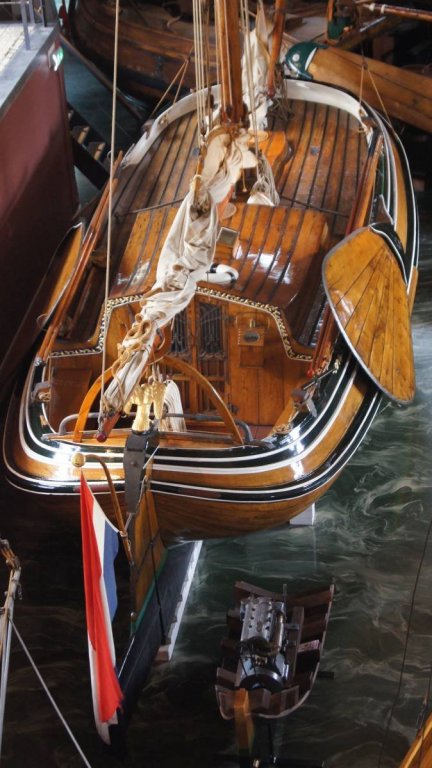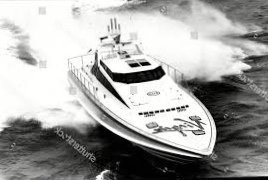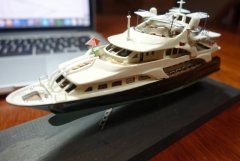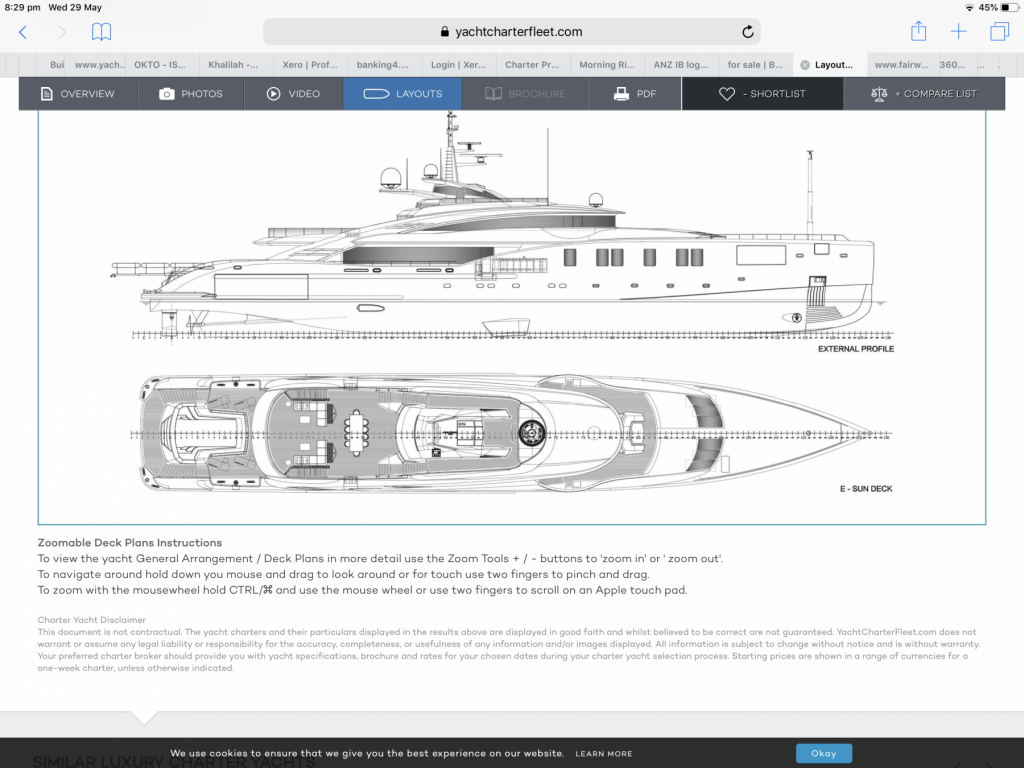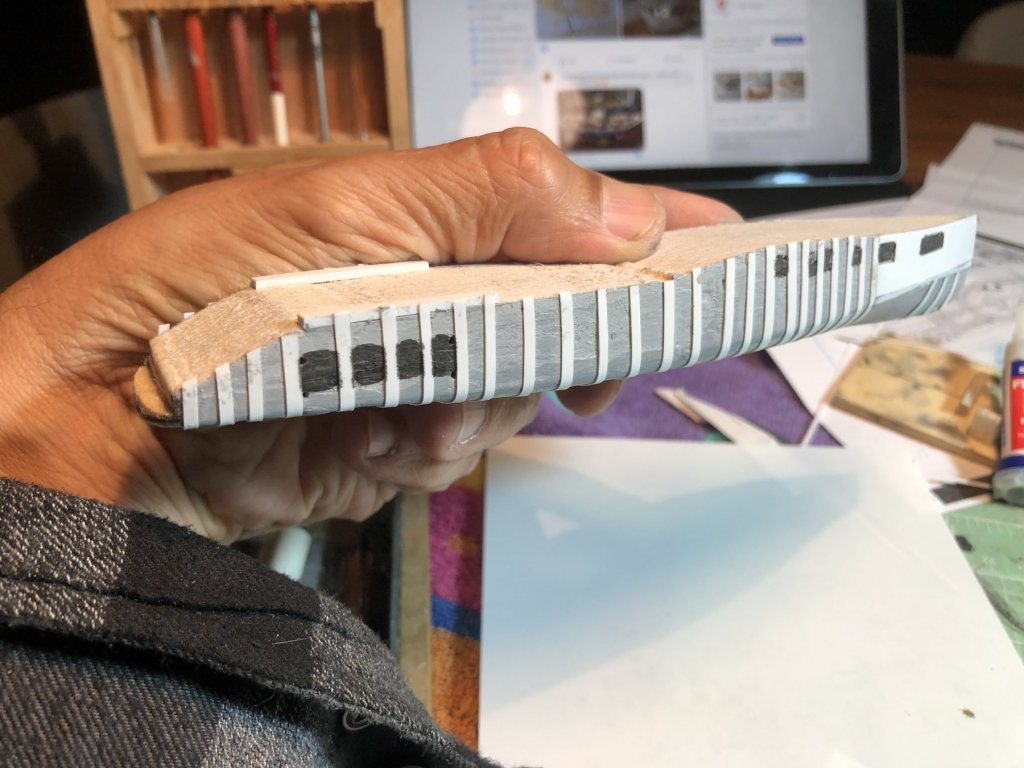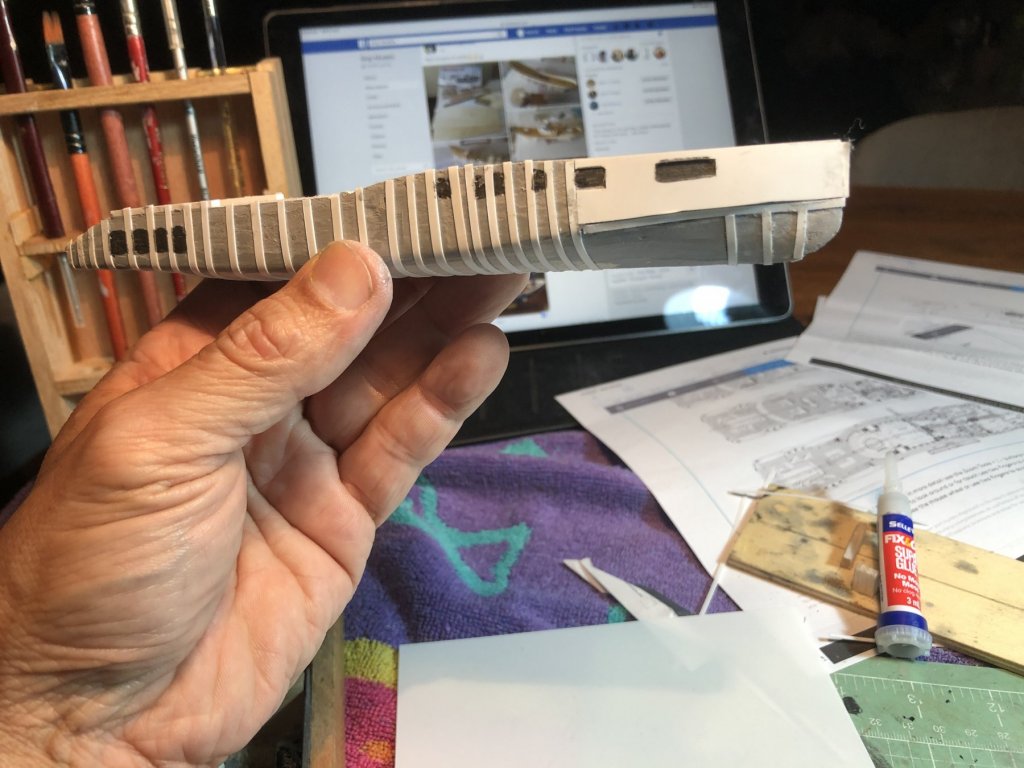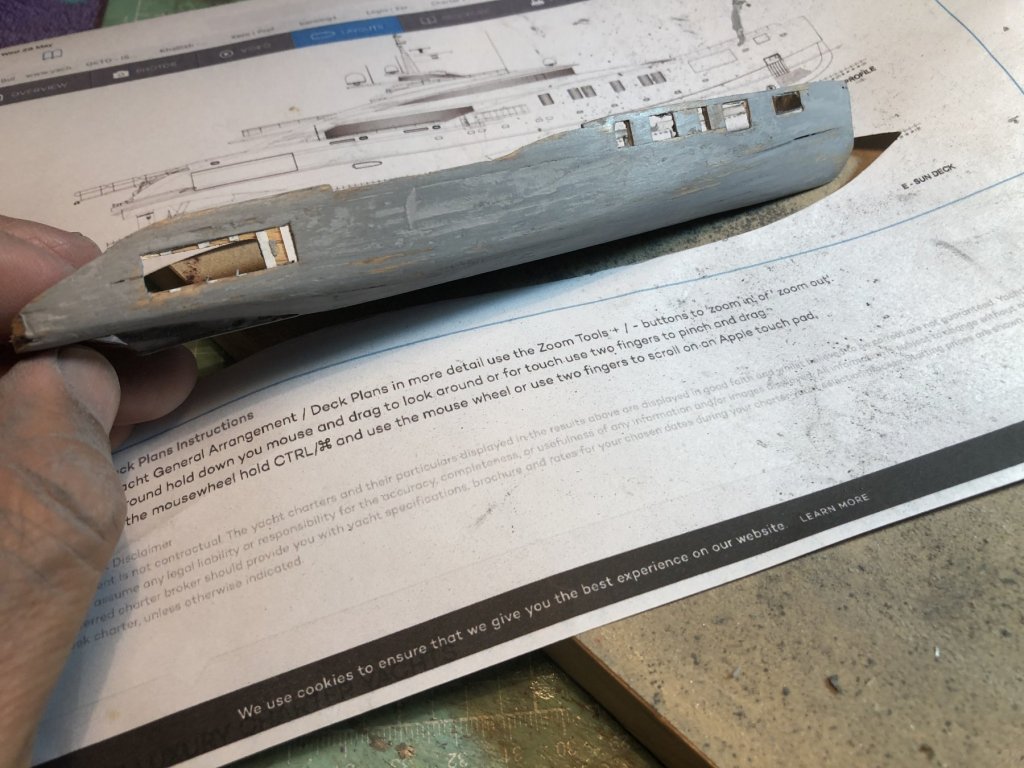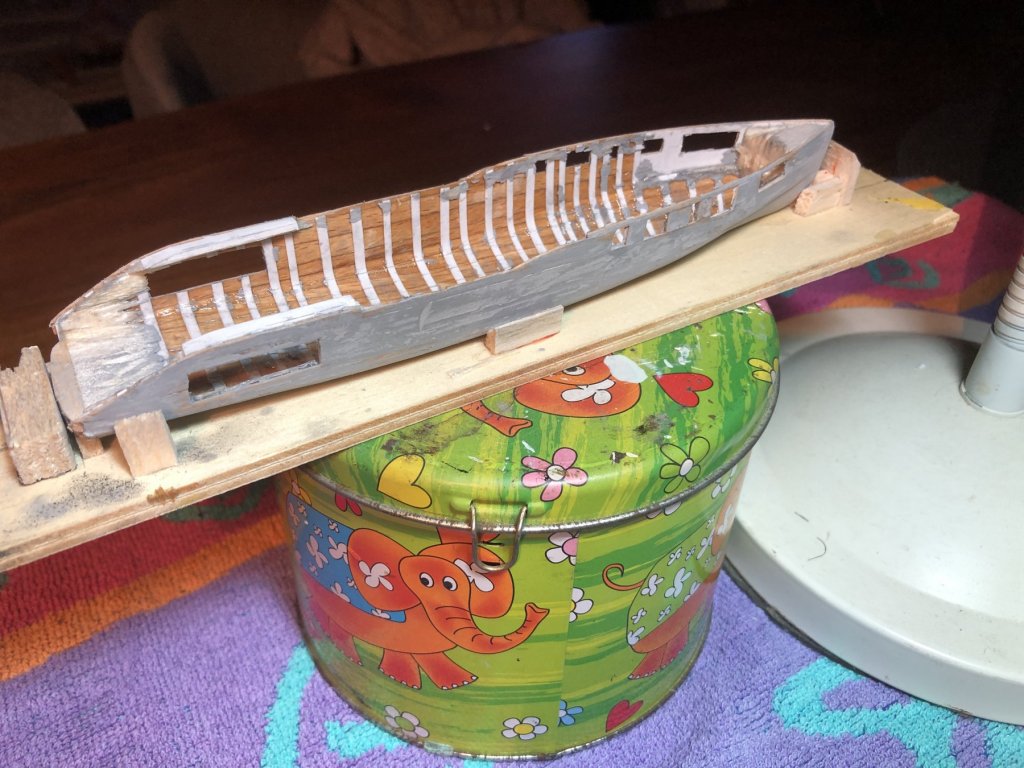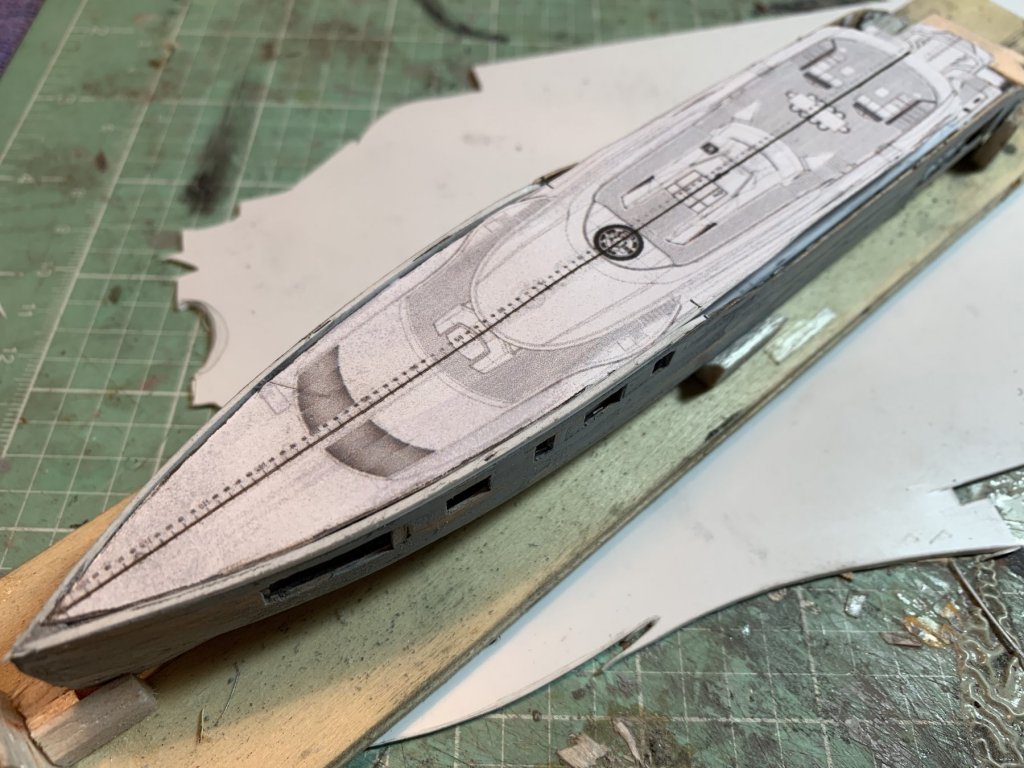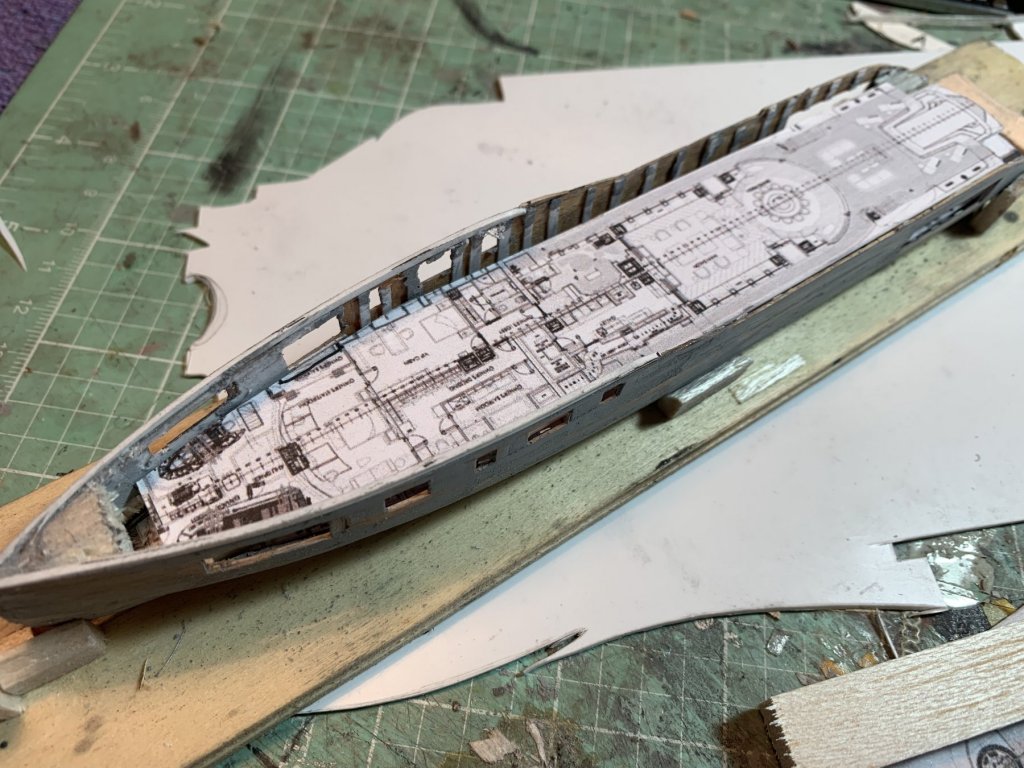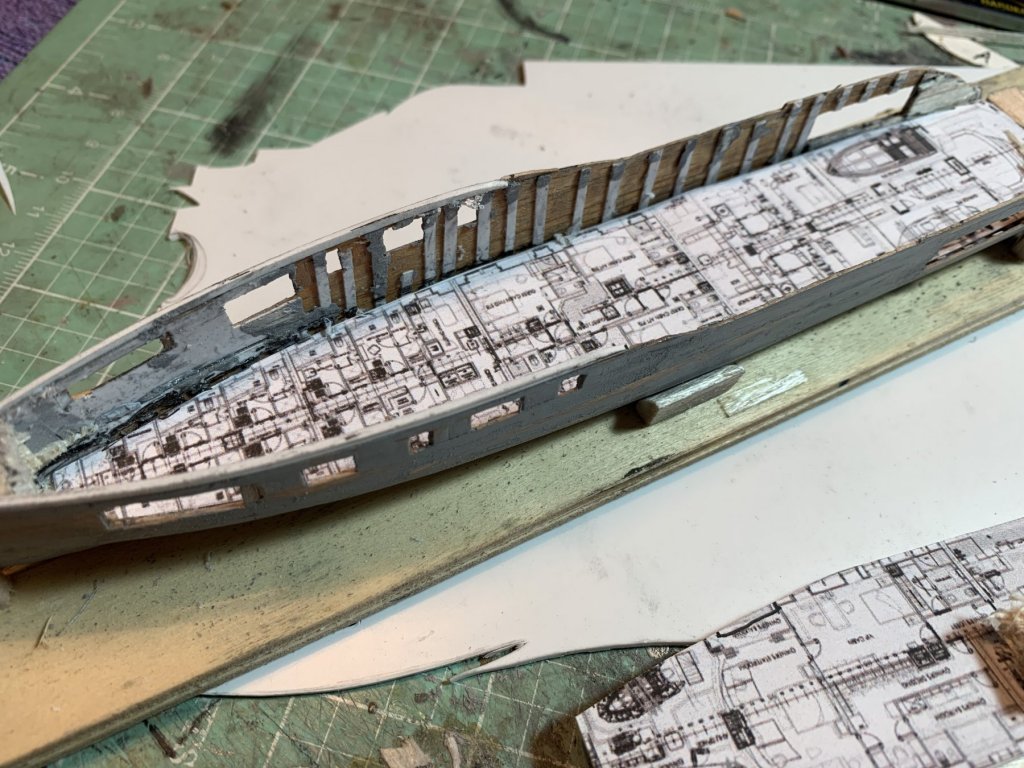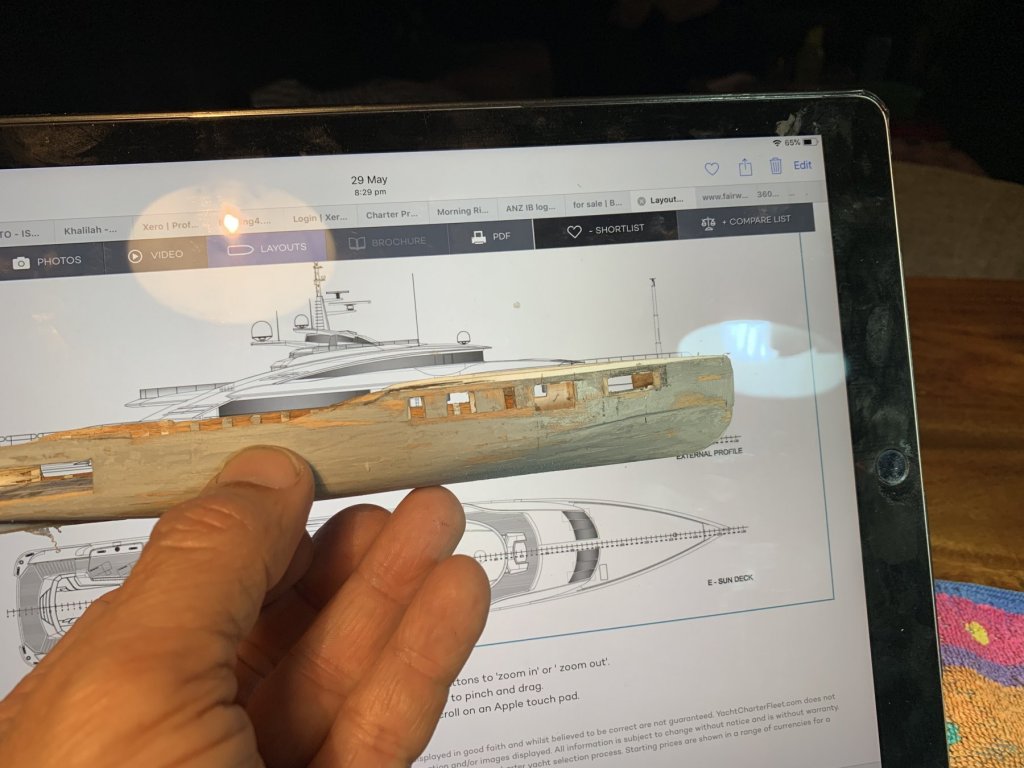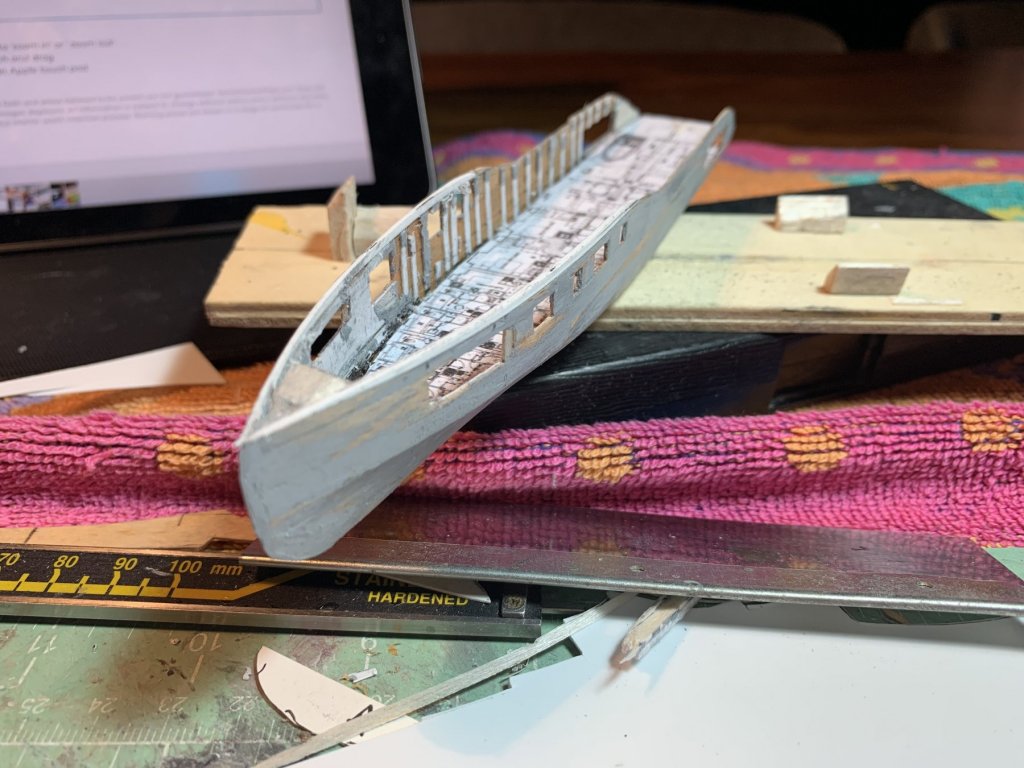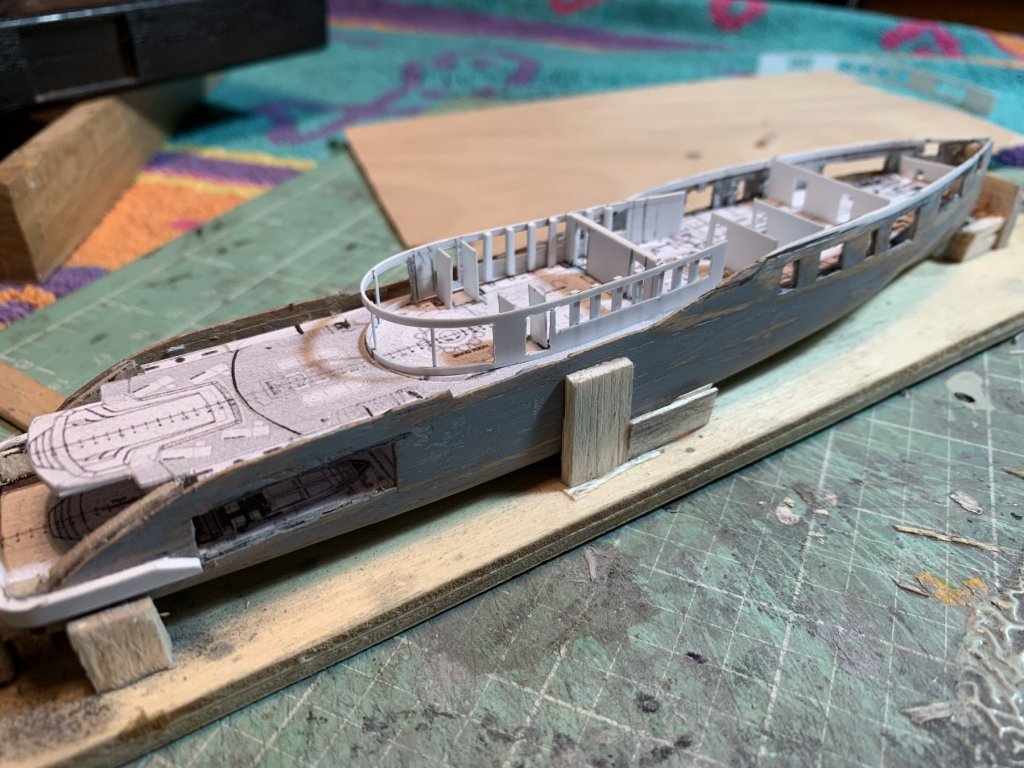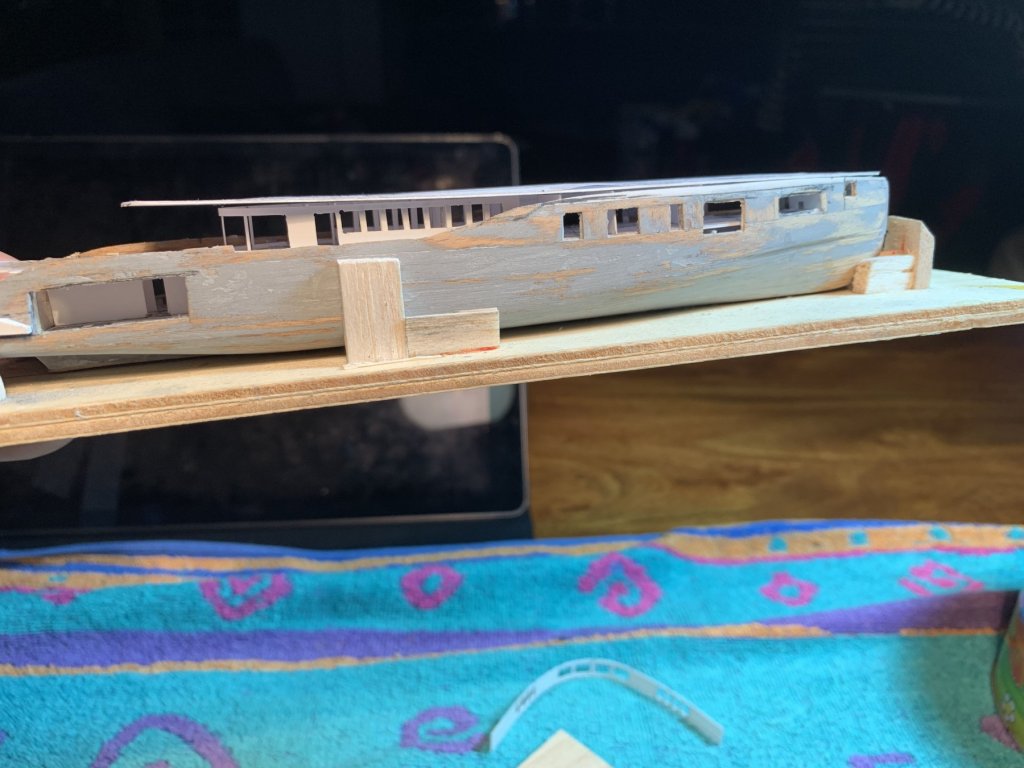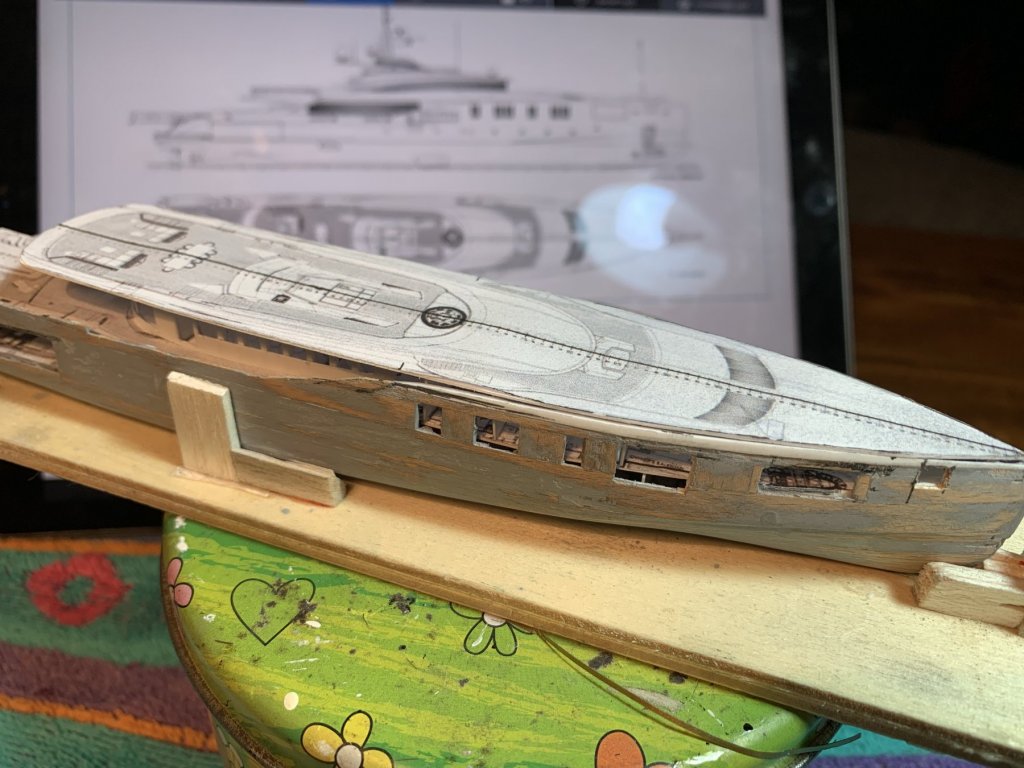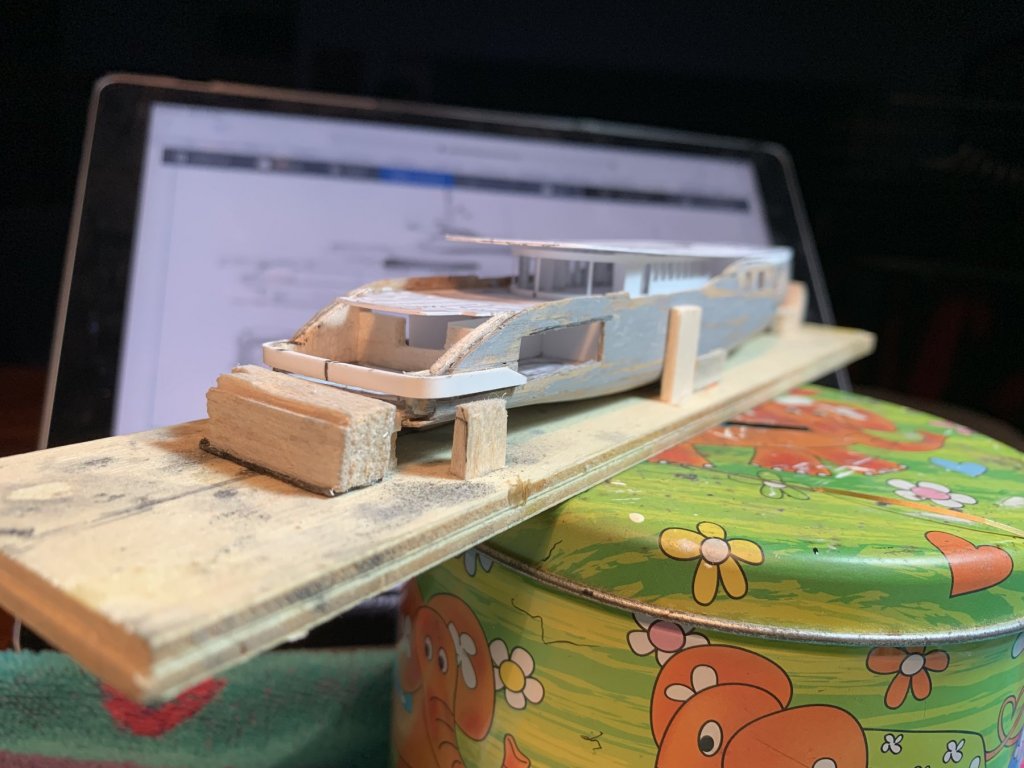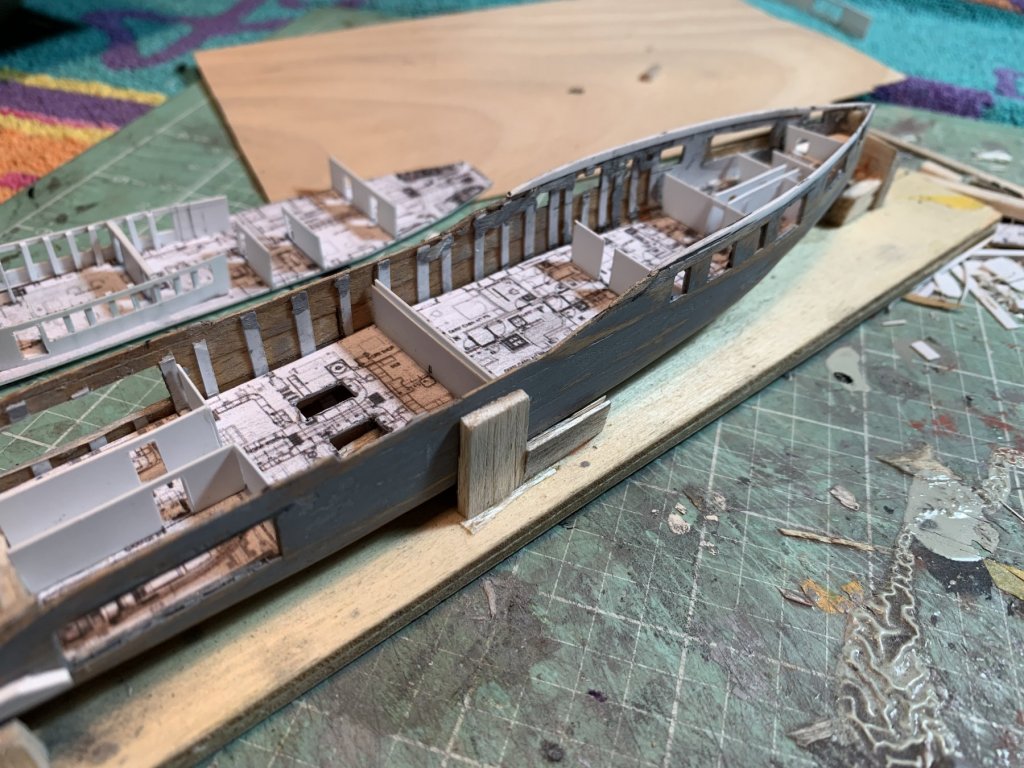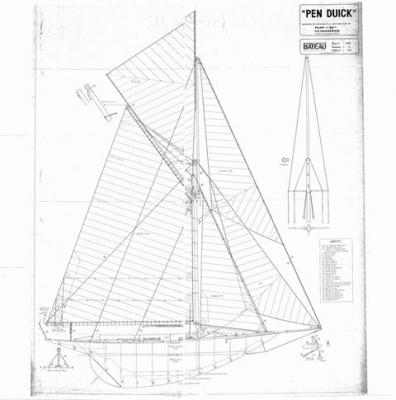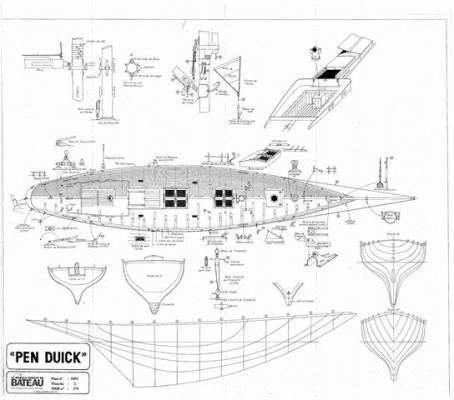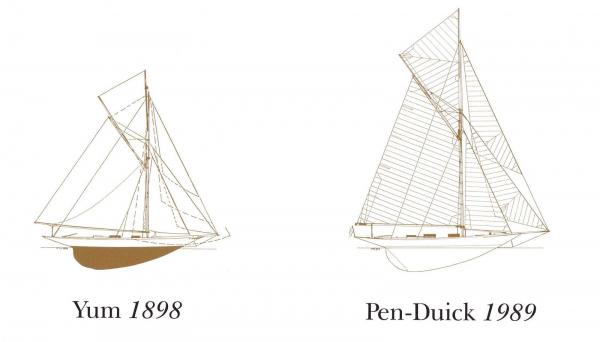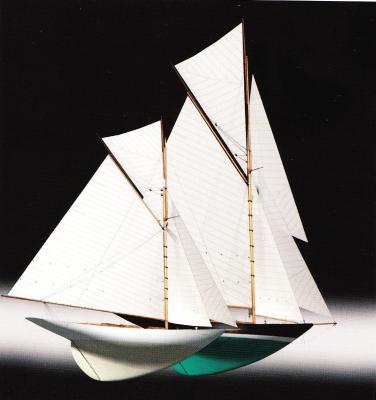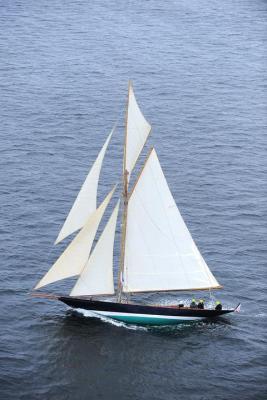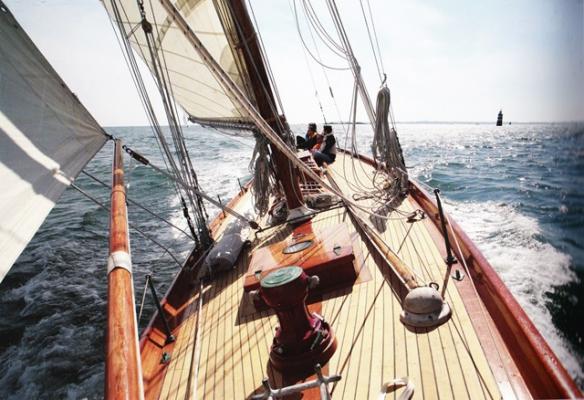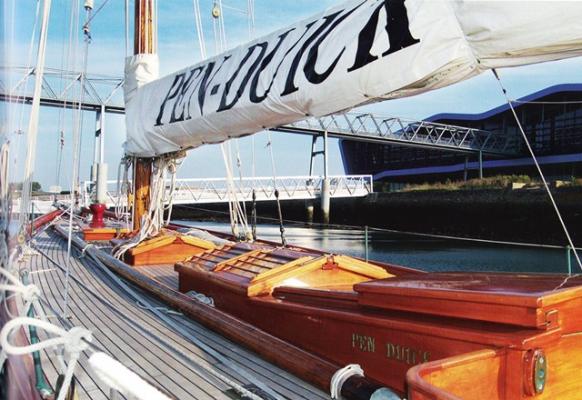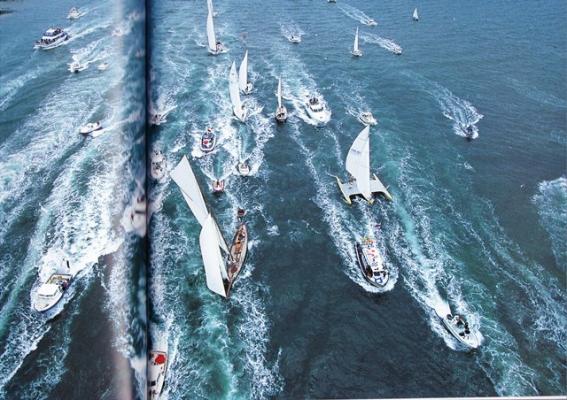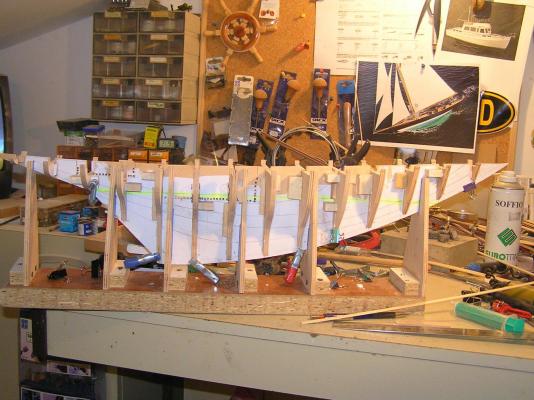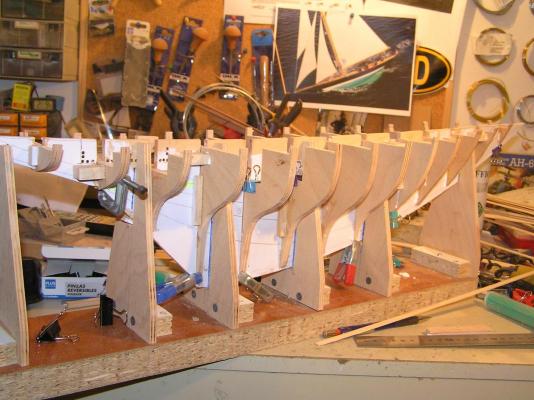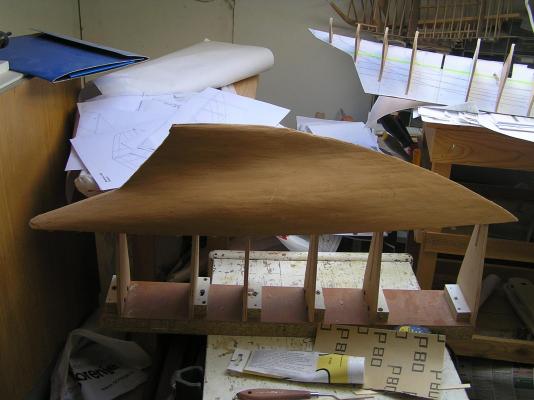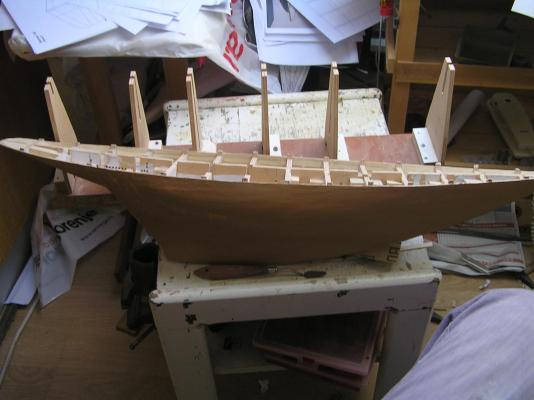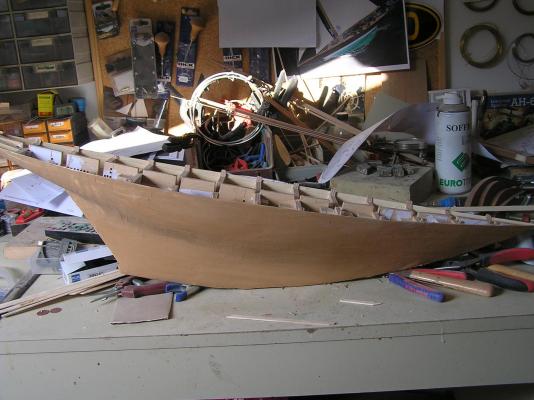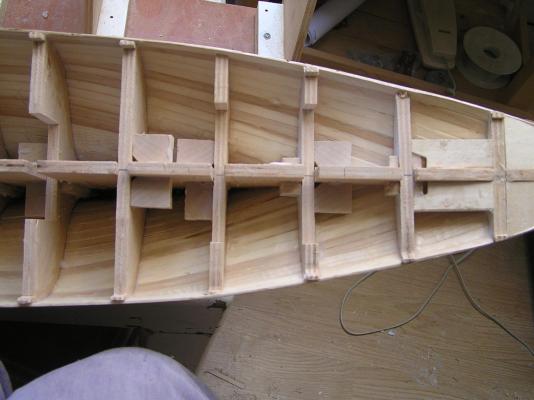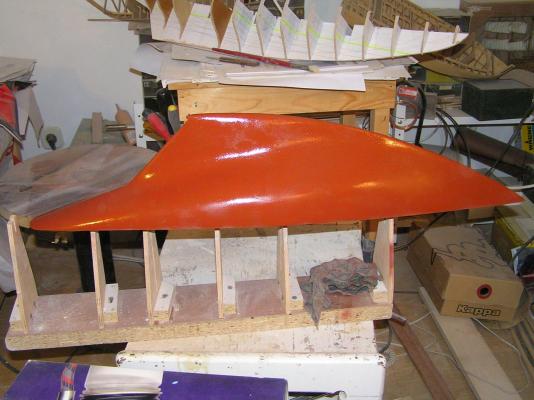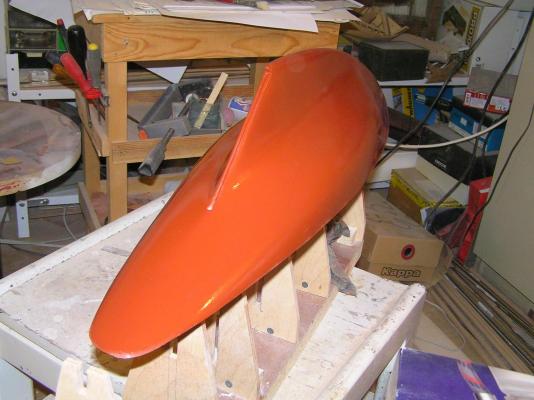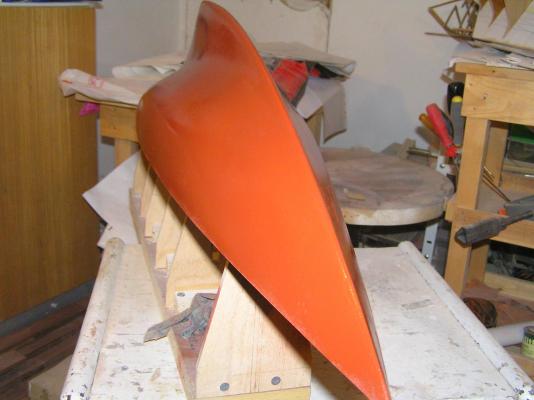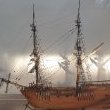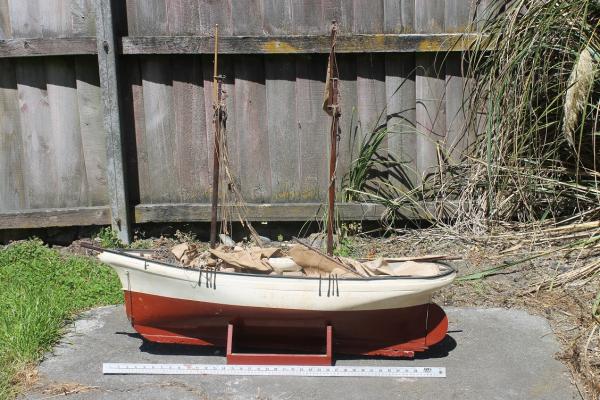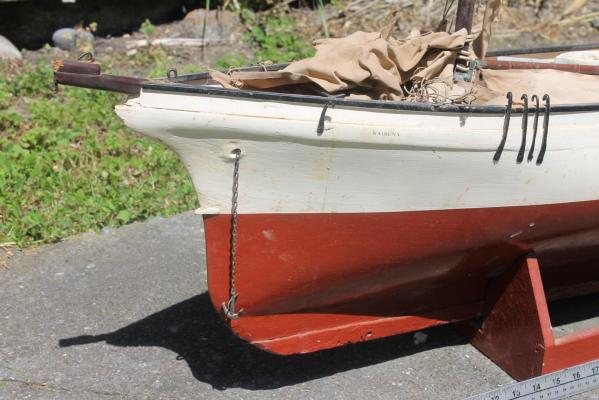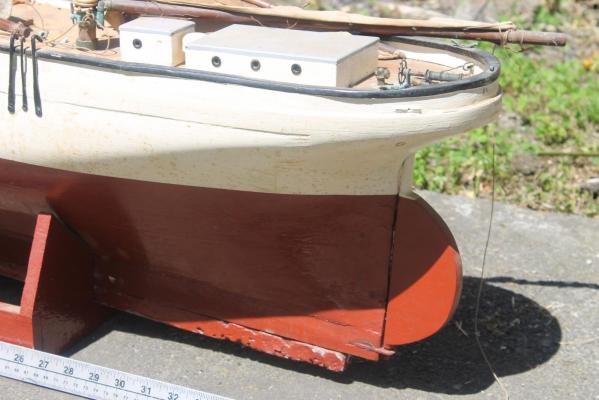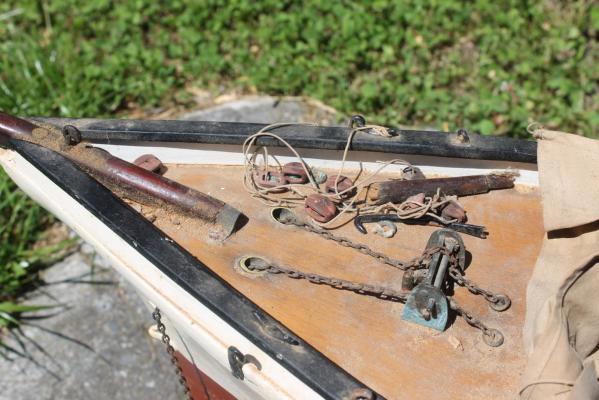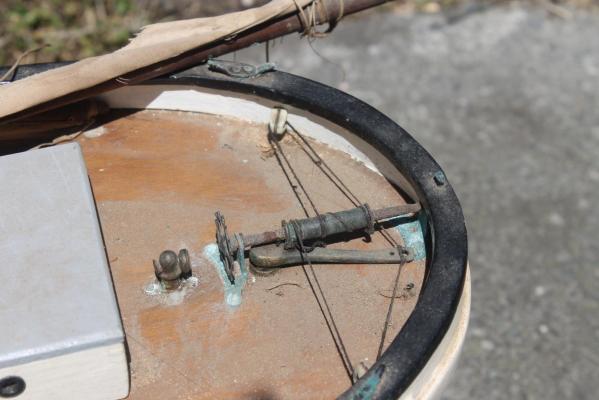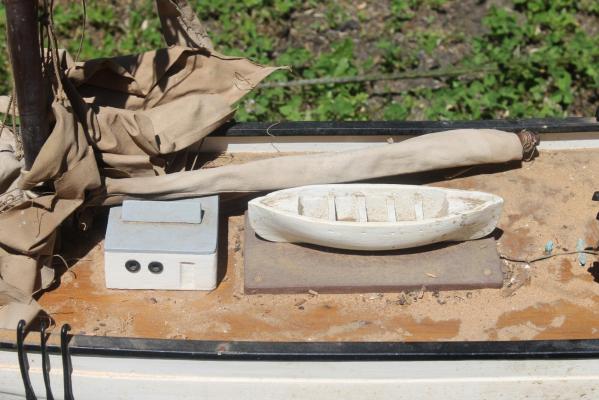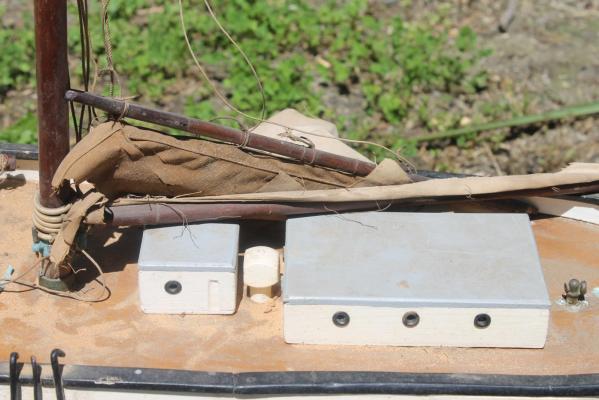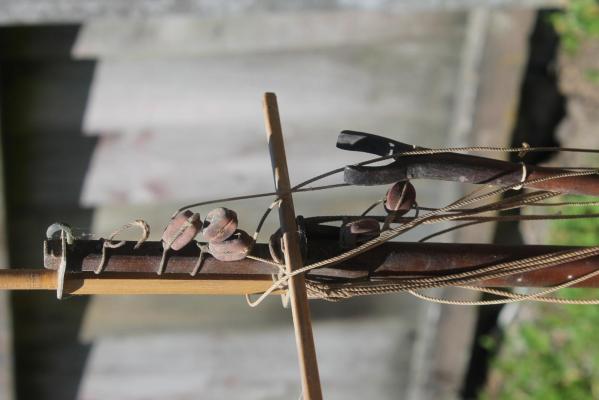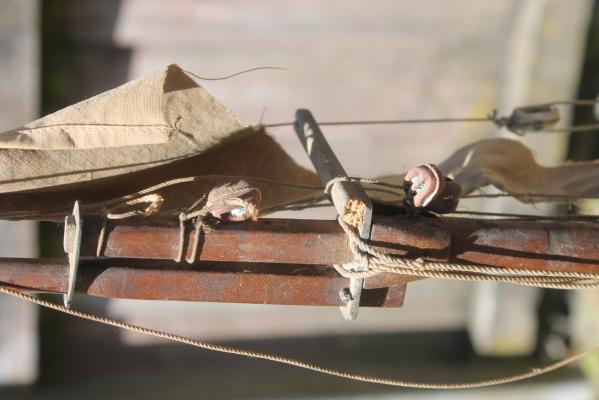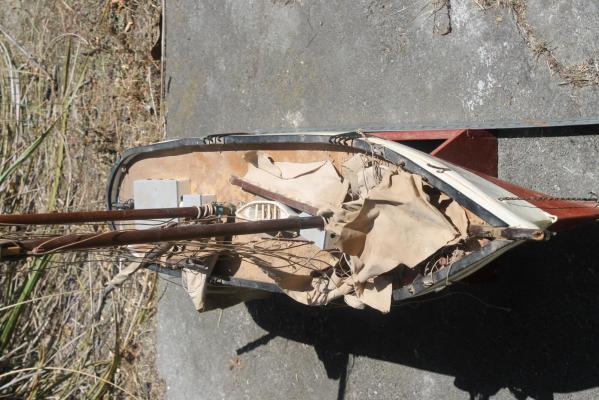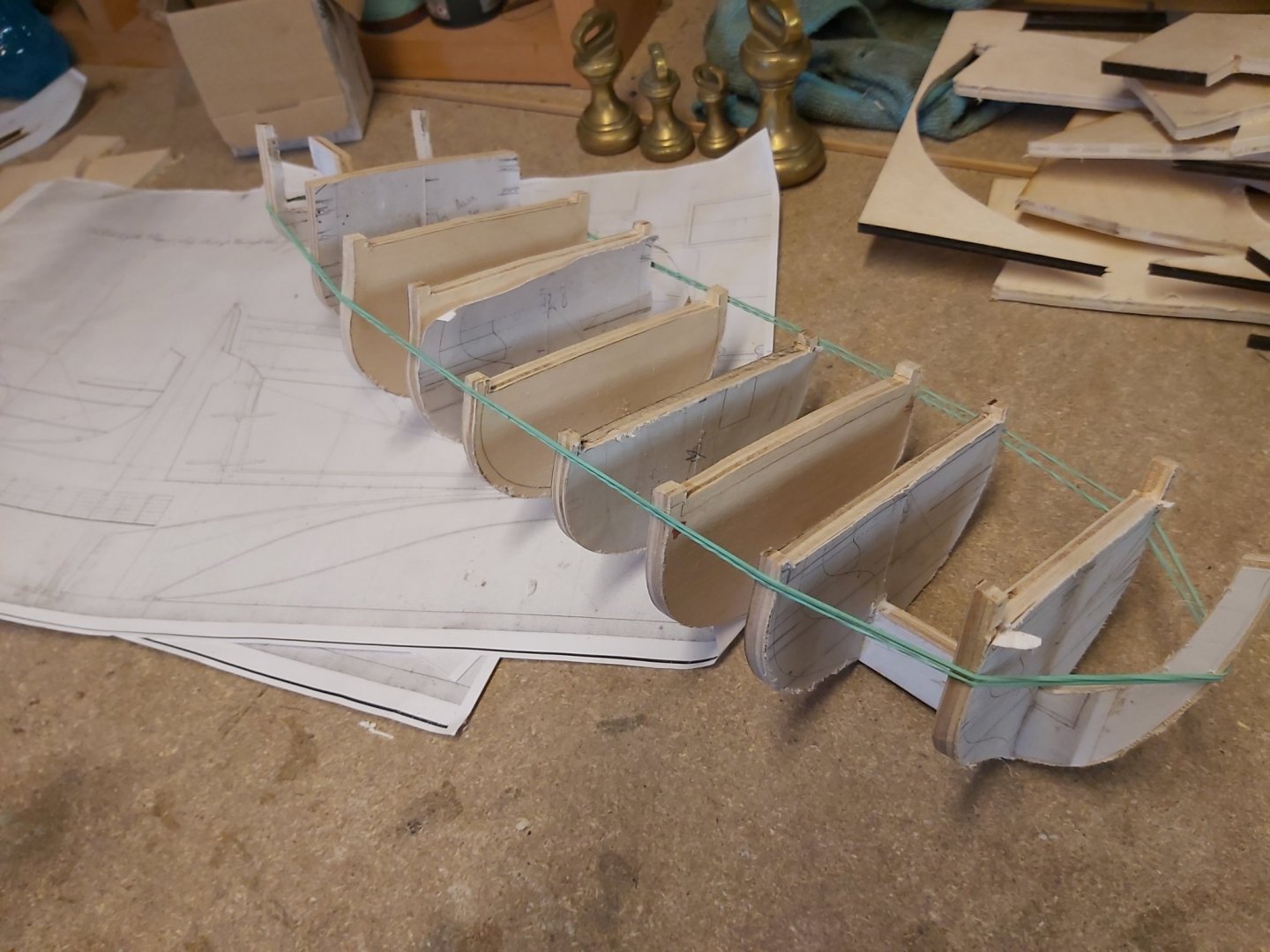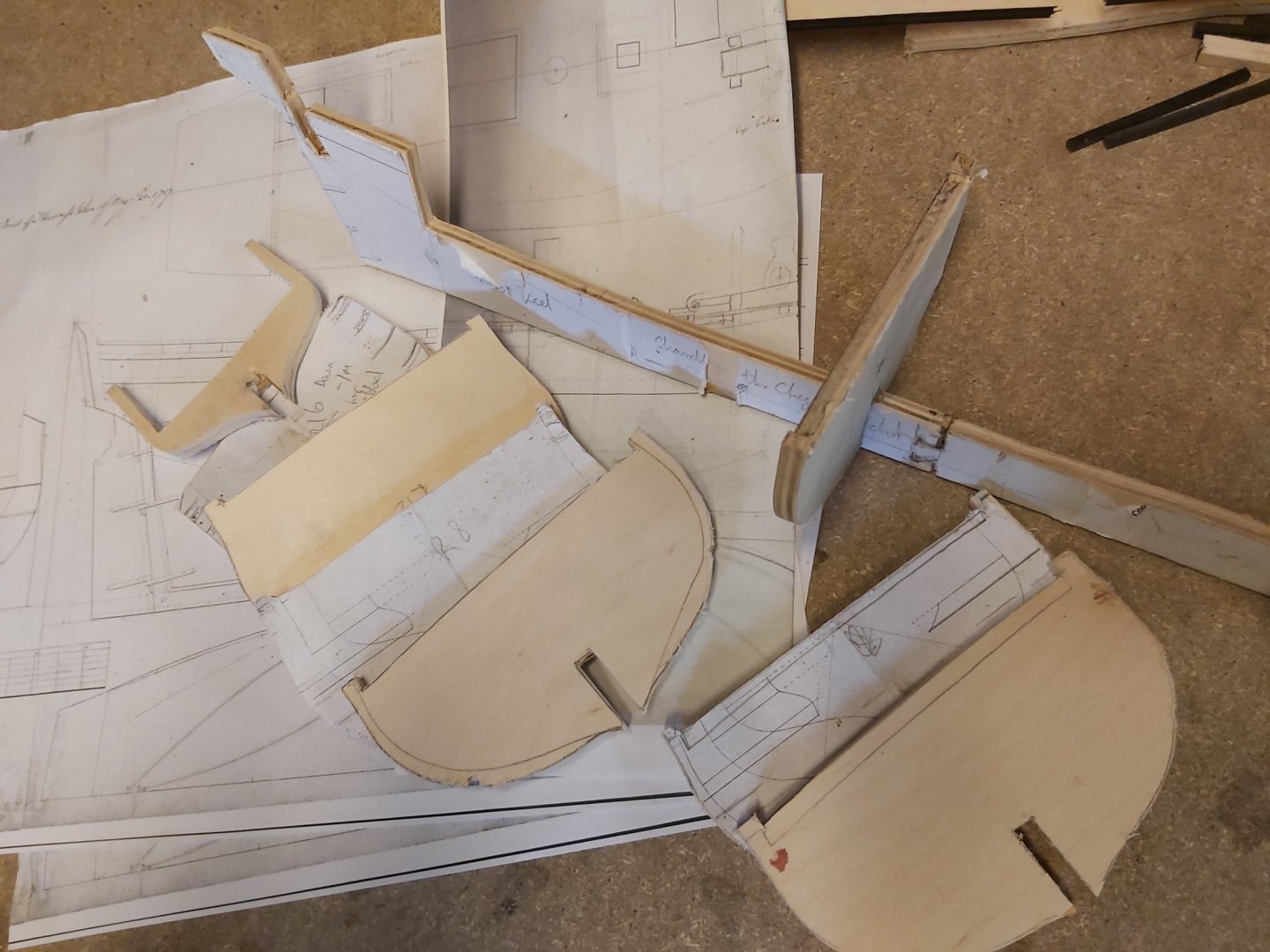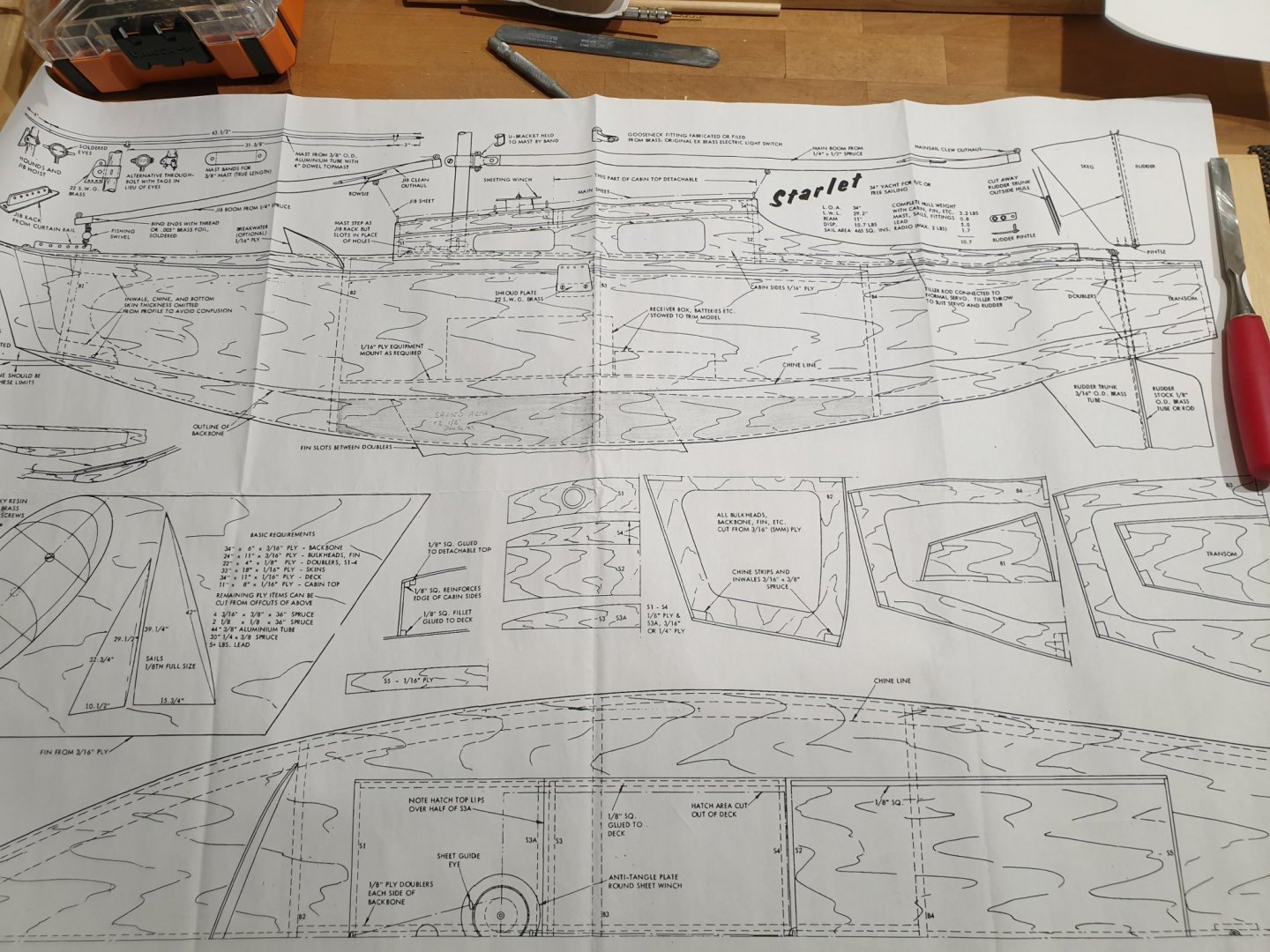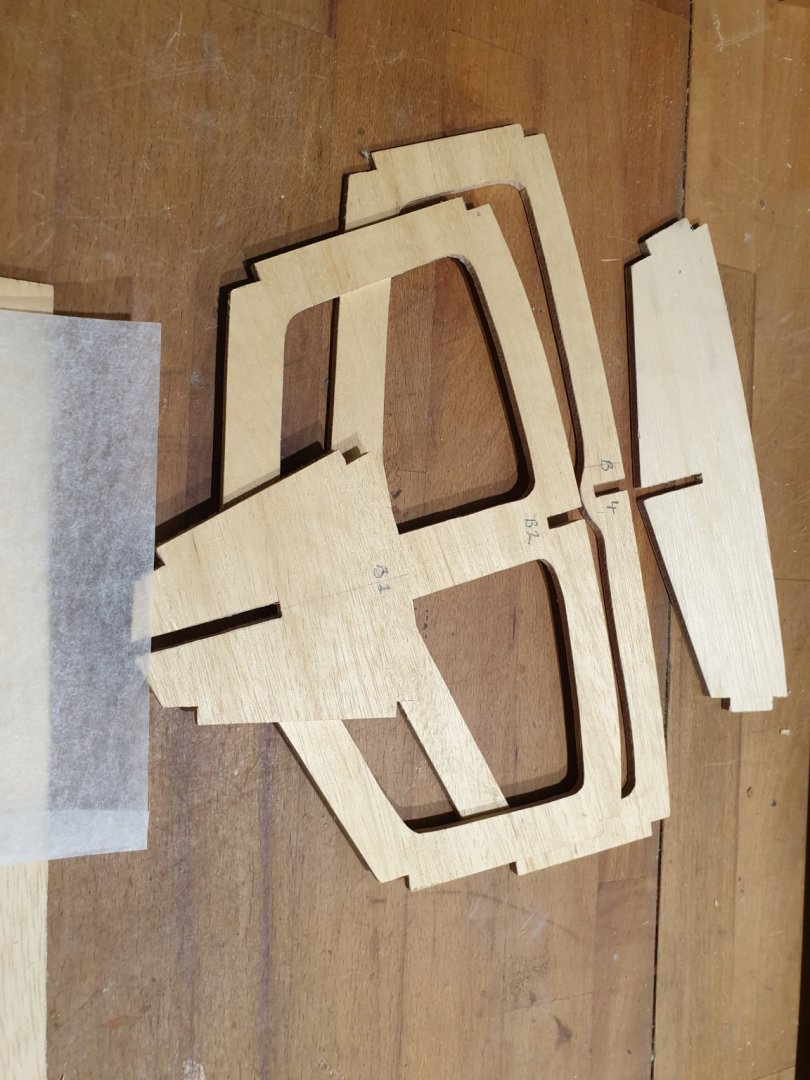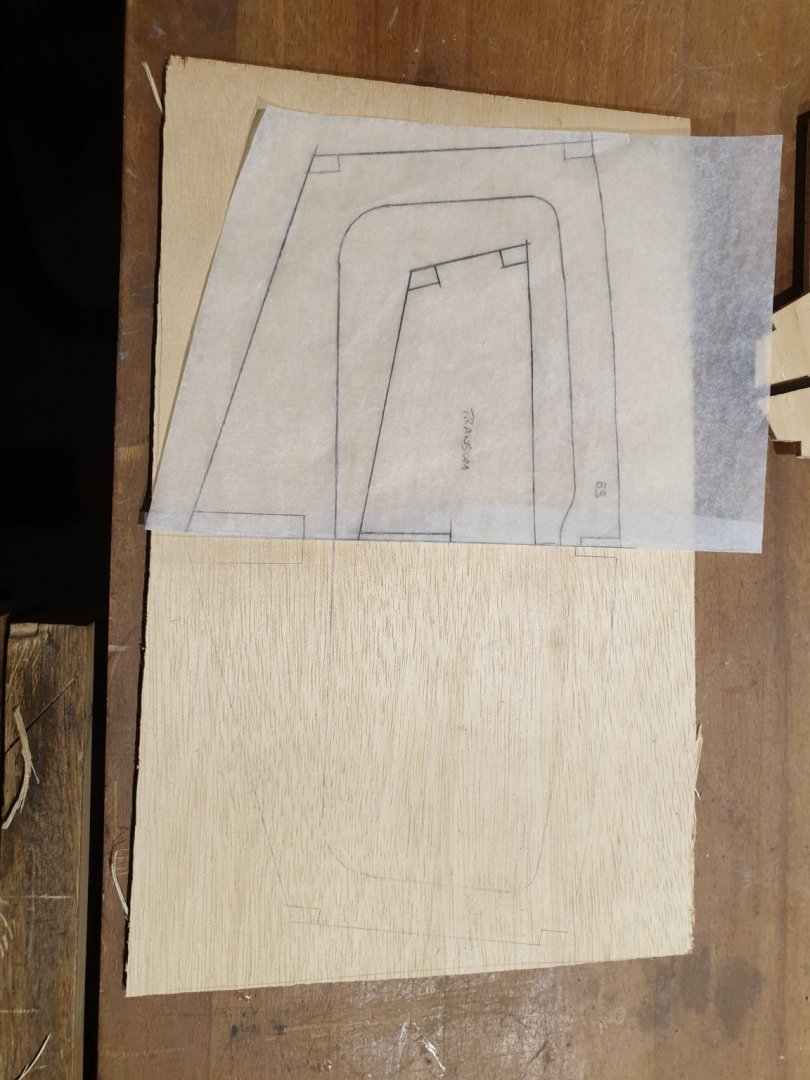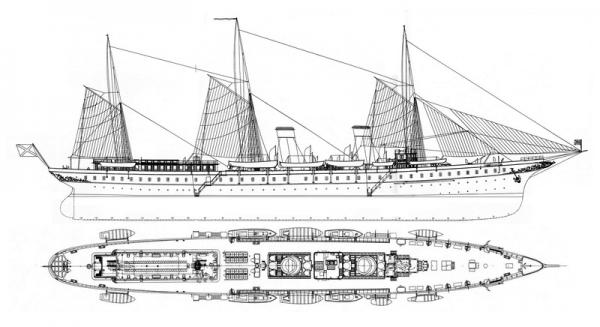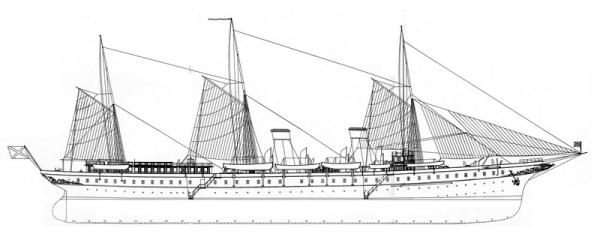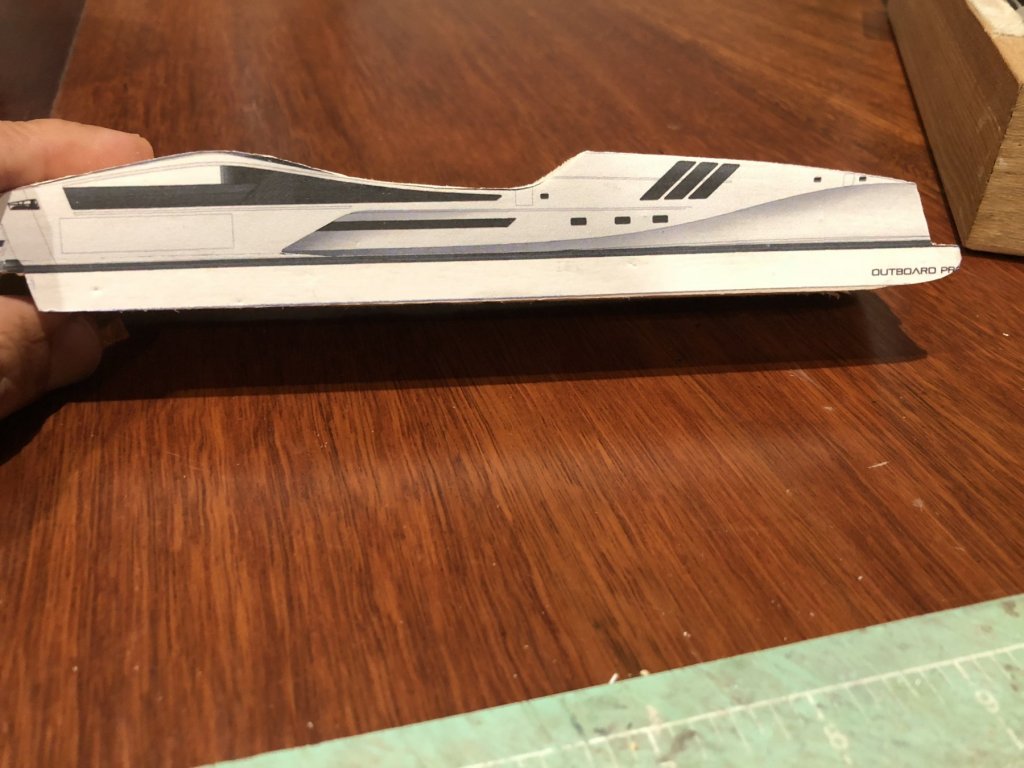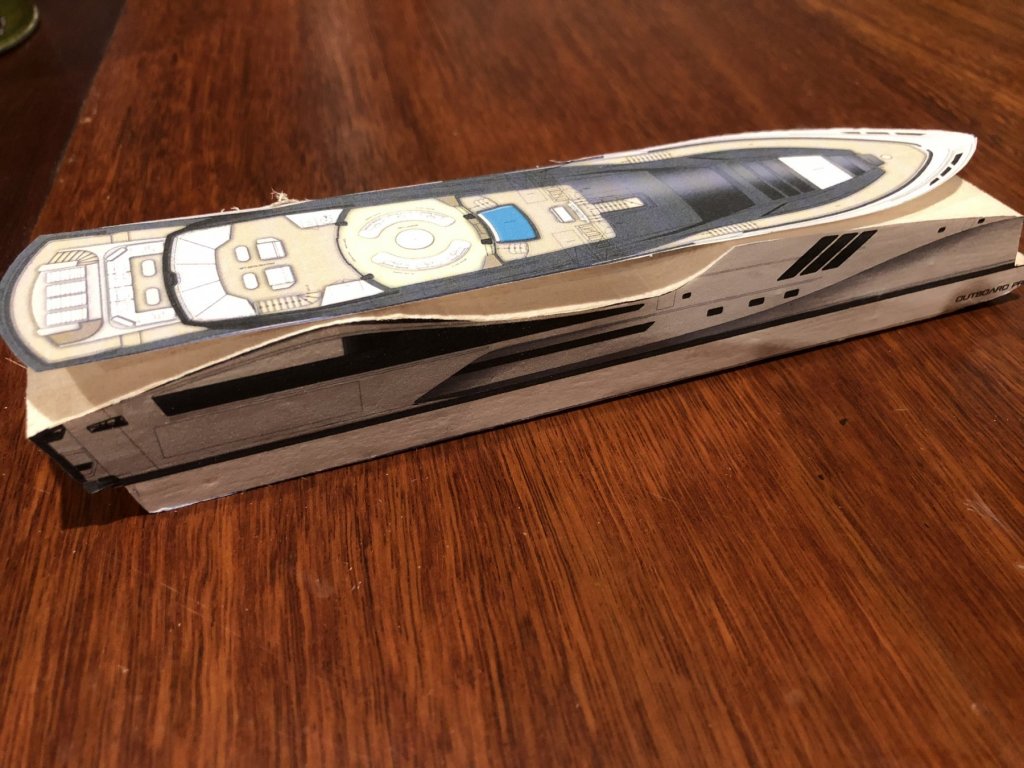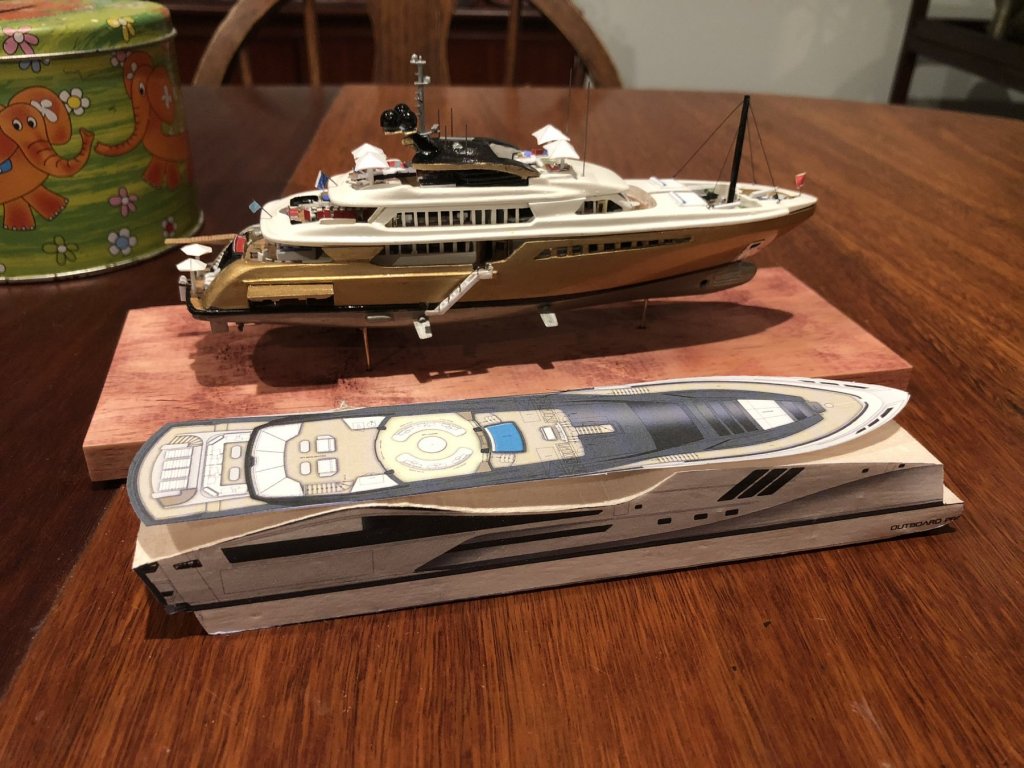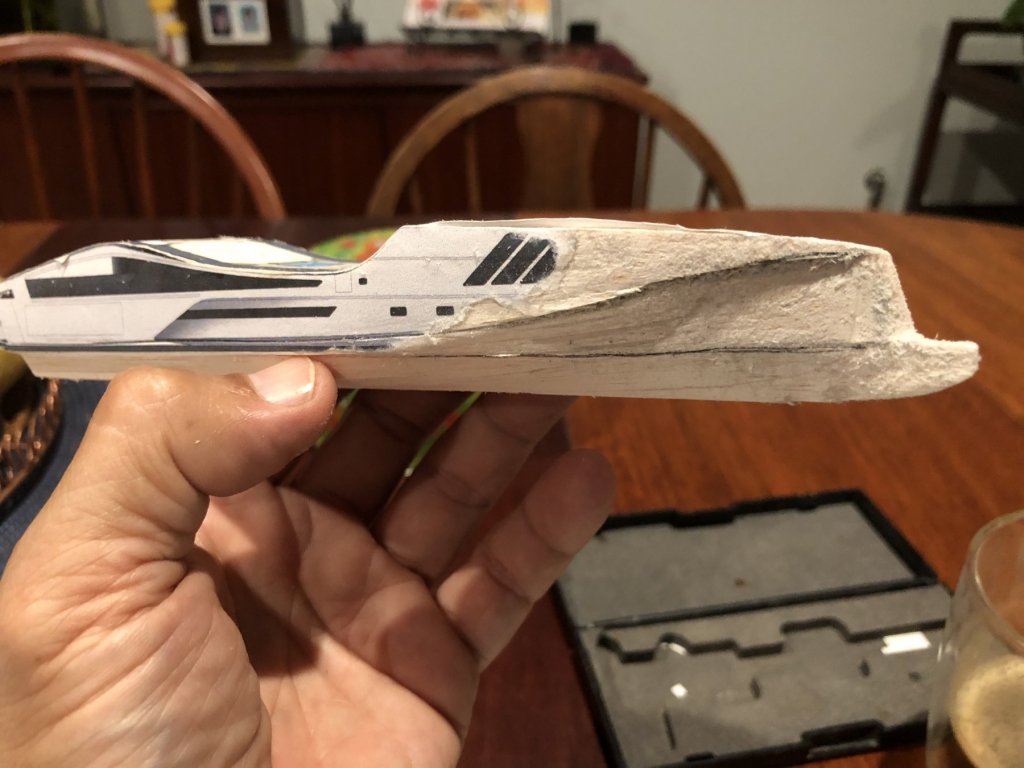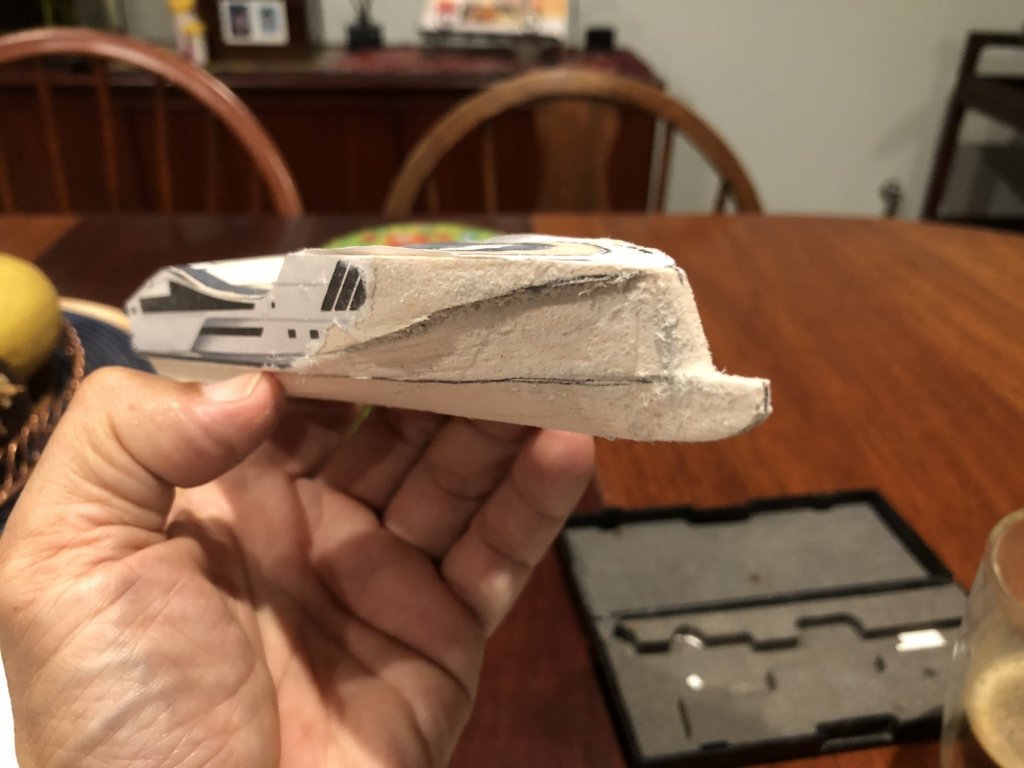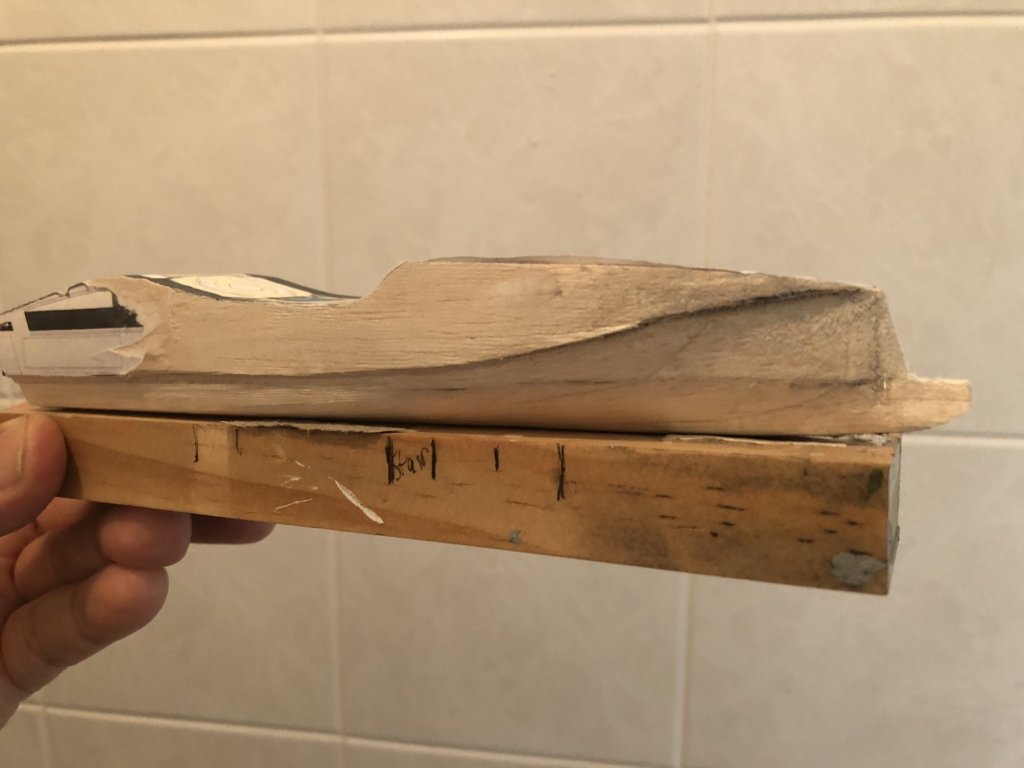Search the Community
Showing results for tags 'Yacht'.
-
My new project is a steam yacht from 1884. It's Loreley. The drawings are made by myself which I shared some time ago in this forum.
-
This is my second vintage plastic kit that is in progress. I have lusted after Blue Jacket Ship Crafter’s kit for a long time. My reviews of build logs for the Bluejacket kit left me feeling that this kit was beyond my abilities due try glaucoma. I just could see how I could handle the accurate carving needed. I came across the UTC kit on eBay. When I looked at the photos and started comparing dimensions, the hull was darn close, the deck furniture had possibilities. The stand and masts would have to go, along withe motorized features and related details. I decided to order the kit. Then I contacted the good folks at Bluejacket and purchased a set of plans for their kit. When everything arrived, I started comparing. The overall dimensions were spot on, except the length, which was a little less than 1/4 in longer. The operating rudder and surface detail would have to go. The deck would have to be lowered. There was an odd foot molded into the keel. It might have been some sort of counterweight and it was also used hold one leg of the three legged stand. The completed model would be on a baseboard with brass pedestals, so the foot would have to go as well. Then I contacted Nic at Bluejacket to see if I could just order the parts for his kit. He looked into it for me. He contacted me and it would be cheaper just the kit without a hull. I said yes added two sheets of his glued up decking to the order. This is the background of this build. It is up to me to see if I can pull it off. I love a challenge! Installment one coming soon!
-
Endeavour is a J-class yacht built for the 1934 America's Cup by Camper and Nicholson in Gosport, England. She was built for Thomas Sopwith who used his aviation design expertise to ensure the yacht was the most advanced of its day with a steel hull and mast. She was 130-foot (40 m) and launched in 1934 and won many races in her first season including against the J's Velshedaand Shamrock V. She failed in her America's Cup challenge against the American defender Rainbow but came closer to lifting the cup than any other until Australia II succeeded in 1983. Source: Wikipedia. https://en.m.wikipedia.org/wiki/Endeavour_(yacht) This is a wooden model kit from Amati. It was the sleek lines of this beautiful boat that first caught my eye. It is my hope that the model I intend to complete will in some way show that beauty. This is where I am right now: The hull will be getting two layers of planking, these maple strips are the underlying layer, they will be covered with a second layer of walnut planking. I intend to stick to the original colors of the yacht, I really like them. The hull has its first layer of planking now. The next step is to smooth out and small bumps and irregularities using a fine wood filler. After a final sanding the second layer can be applied. The hull has been coated with a fine wood putty that was smoothed down with a wet finger. Once dry it will be sanded with 220 grit to even out and small irregularities and make it nice and smooth for the second layer of planking. Finally dry and sanded down nice and smooth. It’s quite comforting running my hands along this smooth surface. I am content now that the second layer of planks will sit nicely in this surface. Work on that begins tomorrow.
-
Spurred on by the outstanding work of @Kurtis on the beautiful 74-gun ship of the line model, @3DShipWright tutorial and my backlog of old and mostly unfinished 3D models I decided to start a new 3D ship model. I am most familiar with Blender so that is why I am going to use that. My 3D skill are very rusty and my knowledge of ships and their construction is limited that’s why I am hoping to get help from all the amazing folks on this forum. In case you wondered what my skill level is. This is a model I made 7 years back, when I was at my 3D model peak I am still very proud of this, But nowadays I am nowhere near this good. In the past I started a couple of ship modelling projects, but all of them never progressed passed a general hull shape. The reason for this is that used to be unreasonably optimistic and picked big and obscure ships but I also lacked the support to learn modelling techniques and understand ship plans and designs. This time I want to model something small, something that will teach me a lot about ship modelling and also about ships in general. So what did I choose? A Dutch Paviljoensjacht(1733): https://www.nationaalarchief.nl/onderzoeken/archief/4.MST/invnr/490/file/NL-HaNA_4.MST_490?eadID=4.MST&unitID=490&query= The plan lacks drawings of anything but the hull and some details. I don’t think that is an issue. When I get to the masts and rigging I think I can take inspiration from a fully restored ship model of a similar type called ‘Utrecht’: Why post this on here? I want to share the process of researching ship construction, ship plans and 3D modelling. I do want to humbly ask more experienced ship modellers to help me out, are you interested in this project or are you able to help/guide/teach me stuff? Then please stick around. I intend to do weekly updates on this topic and not drag it our over months or years of at all possible. Thank you all for reading this far. Next time I will discuss the plans and preparations of them.
-
Moderators: this originally was a kit. I'm now customizing it. Please move it to kit section if you feel it should be there. Thanks! Back in the 70's the teenaged me built a British-designed M-Class yacht for RC. M-Class requires a 50" hull and 800 square inches of sail. It's taller than me from keel bulb to mast head. During my working career it spent decades "in ordinary". I brought it out to the cottage once to sail it for my son and nephews when they were about ten but they couldn't have cared less. Modern kids! Three years ago I took it out again. While it was reaching straight away from me, I realized I could see the white deck. How could that be? The answer was she was sinking by the stern! After she disappeared completely I was able to snorkel out and recover her. Fortunately the bay off our cottage is not too deep. It turned out that the rudder post support block I had glued into the hull in the 70's came away from the inner hull and water poured in through the resulting hole. The radio gear was fine after packing in rice but the battery was very unhappy. To fix the rudder mounting I had to cut a new hole in the aft deck for access. Looking at the resulting two holes, I decided to join them into one large hole and make a reasonable-looking cabin as on an actual boat instead of having just the little flat hatch amidships for access. The cabin turned out as shown below. I used a mannequin for a helms"man" to which I planned to add those black and whit circles like on a crash test dummy. I also repainted her with actual boat topsides paint left over from my sailing dinghy. Sadly the coamings within the cabin proved to be inadequate at keeping water out. After a short sail the bilge was awash and the poor helmsman was up to his bum in water too. I set it aside for the last few years. Recently I decided to change things up. I am going to add a new cabin with walls fixed to the hull, and removable roofs with gaskets to keep water out. I'm also changing the winch arrangement (finally) to an endless primary loop to which the sheets attach, instead of attaching the sheets directly to the winch drum. The old scheme constantly risked the sheets becoming unspooled from the drum with the resulting tangling problems. The scale is changing to 1/24 for which I need "G-scale" (~3") people (helmsman and female companion(s)). G-scale girls are common but a suitably-posed helmsman is proving elusive. I may have to order a "seated young man" and amputate and reattach his arm(s) to hold the wheel. Here are a few photos of the first refurbishing, and the new cabin taking basic shape in this second refurbishing. Old deck hacked up, new transom, and new (rather massive) beams in place for extended cabin. New deck applied. It's sheet melamine. Final assembly, repainted. The helmsman. New cabin started...... The new loop on the winch drum: no more unspooling!!! Old 70's winch still works; 18 lbs pull; what's not to like other than its size? It's well made inside.
-
This Summer Like every summer since I was a Kid , I get bit by the America's Cup Bug , This year is no exception , I have just about completed my first 12 meter Yacht ( Australia II ) and I am not quite ready to start my next project ( I will need some more R & D ) I Decided to build the 1987 America's Cup Winner Stars & Stripes, The Last 12 Meter Yacht to Win the America's Cup. She will be built in a 3/16" = 1' - 0" Scale. ( same scale as the Boxing Kangaroo ) This build will be a hull only build, I may detail the deck by cutting out the cockpit section of the boat. ( we will see ) I remember this America's cup very well , and was glued to the T.V. the entire time it would come on. I grew up in a Sailing Family, so this is our Super Bowl / World Series. Any way I got the Keel Layed out along with the frames and cut them out . Next I will cut the notches in the Keel for the Frames, true them up and install ( at that point I will decide if I am going to do the Cockpit Details. Here are the results
-
As if I didn't have enough to do, a guy from the Men's Shed that I play at 2 days a week has brought in a damaged model yacht for me to fix. It's not really in terrible condition - a break in the mast, two breaks in the boom, bowsprit broken in at least three places and part of it missing, a broken part of the stand. And needs cleaning. It's a decorator model, solid hull. I've worked on it for about a day so far, allowing for breaks while the glue dries, and have made a new piece for the stand and repaired the mast and the boom. I left the sails and rigging in place as I was worried I wouldn't be able to work out how to replace them. A bit of a problem with tangled ropes as I fixed it, but I think it should sort itself out with a bit of patience. The bowsprit was beyond repair so I told the owner to buy a piece of dowel the same diameter and I'd make a new one. I'll post photos when that's done. Fortunately I was able to find some woodstain that matched the existing, so it's looking like it should all work out OK (touch wood!) Steven
-
Dear friends model builders, I am starting here a new build log in the name of my very good friend Mile Bijelić. We have registered Mile last weekend and since Mile has limited access to a computer and is just learning in getting used to it, I will be posting his photos more often. Nevertheless, Mile will read the comments and reply - possibly with a certain delay, you may excuse him. First to introduce Mile Bijelić from my point of view: Mile is a very kind and dear person who impressed me since many years with his extremely exact way of working with the models. As far as I am concerned, Mile made something over 20 model ships of higher complexity. I myself was always getting my jaws dropped when looking at the beauty he managed to express with his models. All the photos I made cannot express the feeling when I observe them in the nature. At the same time, Mile is an extremely uncomplicated, openhearted person willing to help without end. We were sitting, I can remember the winter where we had some repairing at the electrical installation in the district of the town Zagreb and it was cold, we were sitting in the coats in his room for 13 hours and in the evening we were using our pocket lamps. He was and is always here for me to support me with my (challenging) project (De Zeven Provincien, 1665 in scale 1:45). Mile won gold at the world Championship twice: in August 1998 with the Royal Caroline 1749, scale 1:35 and in September 2013 with the Royal Prince 1670, scale 1:70. Just for the introduction, I will post here the photo of Mile (he is in the blue shirt on the right, Royal Prince in the middle and myself am on the left side) and a second photo of Mile with his awards. From now, I will add photos under my name and Mile will write from his account directly. Cheers Dražen (in the name of Mile)
- 86 replies
-
- royal caroline
- yacht
-
(and 1 more)
Tagged with:
-
Hello everyone . yes i have put cutty sark on the shelf, but i have got hands in a model of a kdy 15 - junior boat. Denmark's oldest class boat constructed in 1928. kdy stands for Royal Danish Yacht Club. The club was founded on July 3, 1866, and 15 is sail arial. the boat was intended as a school boat for young people in the Danish sailing clubs. for that, it quickly got stuck on the name Junior boat. And in my childhood in the 60's, they were to bee seen in every marina. In the 70's, it was also launched in fiberglass. Today there is a long time between you see them now other and more fashionable boat types have taken over. In 1986 to 1990, I was the owner of one - NR 274 "Beat" built in 1961 for Hvidover sailing club. over 400 of them have been built over time, but today it is "adult" men who sail them according to the pictures that are on the web. The link below is for an enthusiastic junior boat's website http://kdyjunior.dk/?page_id=269&file=SeasonsEnd2012/
- 39 replies
-
- kdy 15 juniorbad
- yacht
-
(and 2 more)
Tagged with:
-
Dear friends I have started to build a sail ship model based on a french plan for which it was impossible to get additional information. The reason was that I lost my job in 2000 when the internet hype broke and never ever since than been employed again. Since than I have worked on all kind of issues and after years my old degree as a technical translator has proven to be the best source of income until in April 2012 I was hit by a stroke which has degraded some how my abilities. But this project has proven over the years to be a source for having every day an agenda that has no empty space and have my life organized, my mood up and my grey cells active I am telling you this, for one reason because this might help others to find in this hobby a way to stay on top in hard times, but also because this explains my main objective. I am not building this model to finish it, but to have a platform that keeps me studying, give a red line to keep touching fascinating areas of competence into which to dwell and stay modest and try to help anyone that might benefit from my knowledge, as I have benefitted from many who helped around the globe. My objective is to build a sailship modell able to navigate along a regatta course autonomously. Lets start with the description of the Carina. A project that started in 2008 as a "light version of the Sabrina", the first hull that I started in 2002. The Sabrina proved to be too demanding to start and so, because my son Andreas had to engage into a 1 year project for the school, he decided to do this with his father as Mentor and I hoped that the love for modelism would jump to the next generation, in which I did not succeed. This plan, a bit in bad shape because I did not take it into account to care more, was all I had to start with. As a consequence I decided to make the first step to digitize the content of the plan. Goal was to correct errors in the original plan that I found during the construction of the hull for the Sabrina. So Andreas started by pasing the image of the views of the hull onto milimeter paper by oiling the paper of the plan and pinching with needles to pass the lines onto the the paper with 1 mm squares on it, 3/64", sorry we are metric outside the USA. Then we passed the digitized values into a CAD SW. We did digitized and passed the following points of each frame along the longitudinal axis of the view of the hull. As a base line we took the waterline, assigning it the value "0" and moved upwards in steps of 20 mm or 60/64" documenting it by increasing the digit next to the horizontal line. So frame 3 is already above the waterline. Traditionally we recorded the deck line to document where the frame changes from the hull to the deck. We than passed the values into an excel sheet to get visually the information where the digitized values were wrong by one or more reasons. The aim is to get continues curves. Today I would do it differently. After making sure the smooth curves in the CAD images of the frames did result in smooth curves we did print the pictures of the frames onto a thicker paper, about 160 gr paper, 5,65 oz, to prevent the glue with which we fixed them onto the wood, would modify the shape by it making it wet. The would choosen is a kind of triplex which is used to form the boxes were concrete is put into in construction. 5 mm thick, or 45/64". The reason is the wood is very brittle and so it can be removed easier later. I choose the method of putting the frames onto a table, upside-down in a way the waterline of all frames was in one level. You can see the tabs at the edges and how they were mounted on the table in the folowing picture that shows how I am removing the finished hull from the table.
-
Good morning! As my Amati HMS Victory is currently on hiatus due to needing a good number of sheet replacements, I'll start work immediately on the future Vanguard Models release of the Royal Yacht, 'Duchess of Kingston'. As with my other VM stuff, this will be for the kit instruction manual. Chris conceded that (1) he hadn't taken enough photos of the original build, and (2) the design had changed significantly enough from his own build to merit a new build anyway, so the manual is representative of the final product. Yesterday, I received a large box with the final production parts, and also a second set of earlier parts, including PE sheets. The photos here are of the production parts, and I'll cobble together a dry fit of the bits later, to give you a very quick idea of how this goes together, before work starts proper. This kit must've taken an age to produce with all the sheets of pear, plus the pear overlays and beautiful engraving too. Here's what you can roughly expect to see in a final production kit: MDF Maple deck Ply parts Pear parts Other laser parts Strip wood Photo etch Resin parts Fittings etc. Rigging cord Acrylic display stand (with engraved name plates) It's interesting to see some of the design ideas, such as the stern/transom where the resin ornamentation sits atop the pear panel, and that panel has recesses engraved into it to allow the PE window frames to sit within! I'll post a dry fit image of the hull a little later on...
- 117 replies
-
- vanguard models
- yacht
-
(and 2 more)
Tagged with:
-
Bone model of HMY 1749 Caroline M 1: 50 I asked for a little patience so I can write something to the building report chronologically. Now that I have already reported in other forums Caroline I would like to read the report and hopefully entertaining to bring on PC Let's start with the planning. In the year 1988, While visiting the "Hestorisch Sheep ride Museeum" in Amsterdam, I see a very strange looking white model held in a French frigate. The tiny carvings fascinate me. My wife: OOOOOH ... so one I would also like to have! I: you shall have ..... In the following years! I collect everything that is there to have bone vessels and bone processing. For model prove only the leg bones of bovine animals. (Upper and lower leg, called tubes or bone marrow) as ideal, because the density and strength is optimal. All other ... Ribs, shoulder, skull, etc. are too porous and brittle. The preparation of the bone. For the construction of Caroline to start about 400 tubes are required! This massive amount you will not get the butcher of his confidence but only at the slaughterhouse. A tube is [without joints] about 160 - 180 mm long. Weight 200g The tubes must be boiled at high temperatures to remove the marrow and cook again. I have poured over the cooking time about 500l best Mark soup down the sink .. Then with muuuch Cleaningsalt 3 - 5 times through the dishwasher [highest rinsing] and then let dry. (About 3 years!) The first drying cycle was completed on the balcony (the bone Always nice hanging in direct sunlight). My neighbors loved it ...... Except for one!!! Just imagine the following situation. My wife was in the hot phase of the bonecooking in court on govermenthighschool. The City "Hof" is about 200 kilometers from Augsburg (whre we live). She stayed there during the week from Monday to Friday. The course lasted 3 years and in that time my wife wasnt seen for many neighbors anymore. I was at this time full-time home with three little children. (whatisayhiswifeisrunnawaynowonderlookthisman) were still the nicest rumors. Suddenly my balcony was full of bone depends on a cord strung out to dry One day, it rings the doorbell ........ I open and behold, two "Chipmunks" are coming up. I quote again: Good day how are you, (well, thank you), we were just in the area can we comein ...... ?? (Clear, like .. please enter) -. my daughters hunting the cat and run the state power almost overboard --- your children are so happy ...canwepleasetalktoyourwife? (No that is prevented) one of the two in backgrond mutters "that i belive" The first again: we want now, please talk with your wife. (I said it is prevented) Meanwhile, we all go to the kitchen. From my kitchen is access to the balcony and there one can see the tremendous amount of bone hanging from a beam. Both chipmunks pale and call me an ultimativ to say where´s my wife!! I have tell the men from the police to the residence of my wife and the reason could be solved without the most accurate information that can be called my wife, perhaps as a cow but is unlikely to achieve this amount of bone in a single body. The two left my apartment rather monosyllabic The dried and assorted bones are now halved lengthwise on a bandsaw. (My boss wanted to know where my wife is ). These shells can now, as required in planks, 4 square timbers or other basic blanks are processed. This was just the beginning. Soon we will start with the foundation Until then ....... Freeguard leave ..... greetings Robert
- 241 replies
-
- royal caroline
- yacht
-
(and 1 more)
Tagged with:
-
Hello Model Friends. After much research and more considerations, I decided to build the model of the "ROYAL CAROLINE 1749". The history of the Royal Caroline has been written x times, so I'll give up on more details. After the sparse construction drawings, as well as various to scale without drawings in the book by AotS I have strong doubts about the success of the project, but I try it anyway. The plan drawings by Boudriot, Delacroix from ANCRE publishing house, on the other hand, are top class in their own right, i very first cream. Thanks Mike for the help of the frame drawings. To the model: Scale: 1/48 Wood: German Elsbeere Overall lenght: 655,0 mm I will build the model with visible frames from the second barwood, as well as the interior. I have already installed the "backbone" of the model on/in the slipway building board. There are no photos of the individual parts, smoothly forgotten. Next step is the construction of forty-five douple frames, each frame consists of twelve parts, so I am busy in the near future. Karl (Sorry, Google translator)
- 87 replies
-
- royal caroline
- yacht
-
(and 1 more)
Tagged with:
-
Greetings my honorable colleagues. Asking the admittance to “the Dutch club”🙂 I have found the drawing in the internet, scale 1:30. I’m planning on working with the pear tree and black hornbeam. I would be very grateful for the advices and constructive critics. For the moment the model has a certain level of readiness. I will download the report in the chronological order. I also wanted to say that English is not my native language and I would have to use the translator sometimes. Due to this the terminology and information could be mistranslated. In advance, my sincere apologies if this may happen. Respectfully yours.
-
-
Hi folks Well, I’ve been a bit impatient lately and started on my next model, Sapphire, before my previous model, Genesis is completely finished. Anyhow, Sapphire is based on an actual mega-yacht called, Okto (https://www.yachtcharterfleet.com/luxury-charter-yacht-43054/okto-yacht-charter-printable.pdf). As is customary with all of my miniature models, the interior accomodation will be fully detailed and viewable through removable decks and superstructure. I hope you can join me on Sapphire’s journey. Cheers. Patrick
-
I started making Pen Duick a few years ago and I had long break. Now I am making the deck, and I will show pictures from the beginning. Pen Duick was named since 1935, is a cutter drawn in 1898 by William Fife III, famous naval architect, and built in Ireland under the name of Yum. With an overall length of 15.1 m and 10 m to the floating for 2.9 m of maximum width, it supports 160 m2 of sails. Since 1938, Eric Tabarly sailed on the Penduick bought by his father. The Penduick was restored a first time in 1958, to reinforce the hull by a thickness of polyester, then was rebuilt completely between 1983 and 1989. The mast is raised 20%. She remains one of the most beautiful classical sailing ships. drawings: differences between Yum & pen Duick: Images of the ship: Pen Duick sailing - (scan from the book) The scale is 1:20 The hull is made of wood - plywood ribs, maple, coated with epoxy resin. Deck is made of pear wood, more shades. Cheers, Matija.
-
I have just been given this old yacht or coastal trader by a guy at work in his 60's,his dad used to play with this model as a young boy.It will be a slow restoration there is some good work on it,brass and some plastic.It looks like it's carved out of solid timber.It's about 1 metre long.The name on it is from a steamship that used to call into Lyttelton.I may strip all the paint off wait and see the deck is 10mm solid wood,the strip at the bottom is lead.Any info or advice to it's restoration will be greatly appreciated thanks ron.
-
The wife bought me these plans last Christmas after seeing me looking at them on the NMM website, last week before Xmas she asked me where were they and why hadn't I built it yet???? I had actually copied the plans and made bulkhead patterns The plans appear to be at 1/32 but the stem of the boat is missing so full length isn't known however extending the lines and using the deck plan a reasonable assumption can be made A false keel was made from ply along with the bulkheads, the ship plans say longboat in the notes but it is fully decked with a state room, and fireplace below deck and a large capstan and large windlass, sliding bowsprit gives the impression of a cutter rig and layout so that's what im aiming for, I've gone for bulkheads as there's no framing plan and as its full decked out I can show some nice deck planking hopefully
-
Hi fellas. I am currently building Emma on another thread but I want something just a bit smaller so as to carry it in a bag ( by train) to the model sailing club some 20 ks away. Some of us have to or prefer to do without a car. As a kid ( and older! ) I have built numerous Vic Smeed designs. In fact my claim to fame is that I came second in a " Tomboy " free flight competition at Middle Wallop in the UK some years back. Needless to say the " Tomboy" was a Vic Smeed design and he appeared on that day. THAT!!! was my day bowled over. They are all simple and they all sail/ fly. Vic was a genius. I met him. He was a charming English and very clever Gentleman. Always immaculately dressed mostly in a suit. I have just recently learnt that he was a fighter pilot. This in itself gains even more respect. He has written so much about model aircraft and also model boats. Model boats was always his high. He loved them. Anyway..having obtained my plans and complete building instructions from Canada to Australia ( building instructions written by Vic himself) , I have commenced the build. I just love the way that he has gone to depths of explaining the cost of each material in pounds , shillings and pence! Superb!. This alone has set me on a course of vintage model yacht building. When I tried to explain to the young cashier at Bunnings ( Australia ) that the item should cost 2/6pence as per plan, she looked at me in total disbelief!!! Not really... but just a bit of fun. I have used the old fashioned methods of replicating the drawings to wood by using tracing paper. Yes...they still make tracing paper. The build techniques are archaic but then so am I so it matters not. Here are a few starter pics. Pete
-
Dear colleagues. Today, April 8, 2016 start construction of another ship model, the imperial yacht Standart. To begin with a brief historical background, drawings, historical photographs.and photos of the model of the Naval Museum in St. Petersburg. It was founded October 1, 1893 at the shipyard Burmeister and Wain in Copenhagen. Launched Aug. 4, 1895. It entered into service in 1896 as the Imperial yacht. Delivered to the port in May 1918. In 1933-1936, it converted into a minelayer. He participated in the productions of mine, the evacuation of the base Hanko garrison, fire support of ground forces. April 3, 1942 awarded the title of Guards. In the 1950's converted into a plavkazarmu, and in 1961 - into a floating target for tests of missile weapons. Scrapped in the early 1960s. Displacement 5480 tons. The dimensions of 112.2 x 15.4 x 6.6 m. Voruzhenie 8 - 47 mm booking Gears 2 steam engines 12000 hp 24 boiler, 2 screws The speed of 22 knots Cruising range 1400 miles at 12 knots. The crew of 16 officers and 357 sailors After conversion into a minelayer Displacement 6189 tons. The dimensions of 122.3 x 15.4 x 7 m. Voruzhenie 4 - 130/55-B 13, 7 - 76 mm 34K, 3 - 45 mm 21K, 3 - 12.7 mm machine gun (2 DSHK and Vickers 1) Booked conning tower - 12 mm Gears 2 steam engines 11426 hp 4 boilers Yarrow 2 screws The speed of 18 knots cruising range of 2260 miles at 12 knots. The crew of 29 officers and 361 sailor
-
Hi folks Hot on the heels of finishing my last model, Shadow, I’ve excitedly started on what I think is my biggest challenge yet - Genesis, a 49m Luxury Mega Yacht, based on an actual ship named Khalilah, built by an American builder, Palmer and Johnson. The details of the ship, Khalilah, can be found here: https://www.yachtcharterfleet.com/luxury-charter-yacht-46797/khalilah-photos.htm#yacht-tabs As I don’t have any detailed plans, a lot of what I’m attempting is by sheer guess work, with a lot of help from a fellow MSW member (whose help and guidance I shall always appreciate). Like all of my other models, Genesis will have a fully detailed interior, from her engine room through to her sky deck. I hope you can follow me on my journey from here on. The following photos show where I’m up to so far with the hull. Lots and lots of work to go, folks!!! Thanks. Patrick
About us
Modelshipworld - Advancing Ship Modeling through Research
SSL Secured
Your security is important for us so this Website is SSL-Secured
NRG Mailing Address
Nautical Research Guild
237 South Lincoln Street
Westmont IL, 60559-1917
Model Ship World ® and the MSW logo are Registered Trademarks, and belong to the Nautical Research Guild (United States Patent and Trademark Office: No. 6,929,264 & No. 6,929,274, registered Dec. 20, 2022)
Helpful Links
About the NRG
If you enjoy building ship models that are historically accurate as well as beautiful, then The Nautical Research Guild (NRG) is just right for you.
The Guild is a non-profit educational organization whose mission is to “Advance Ship Modeling Through Research”. We provide support to our members in their efforts to raise the quality of their model ships.
The Nautical Research Guild has published our world-renowned quarterly magazine, The Nautical Research Journal, since 1955. The pages of the Journal are full of articles by accomplished ship modelers who show you how they create those exquisite details on their models, and by maritime historians who show you the correct details to build. The Journal is available in both print and digital editions. Go to the NRG web site (www.thenrg.org) to download a complimentary digital copy of the Journal. The NRG also publishes plan sets, books and compilations of back issues of the Journal and the former Ships in Scale and Model Ship Builder magazines.






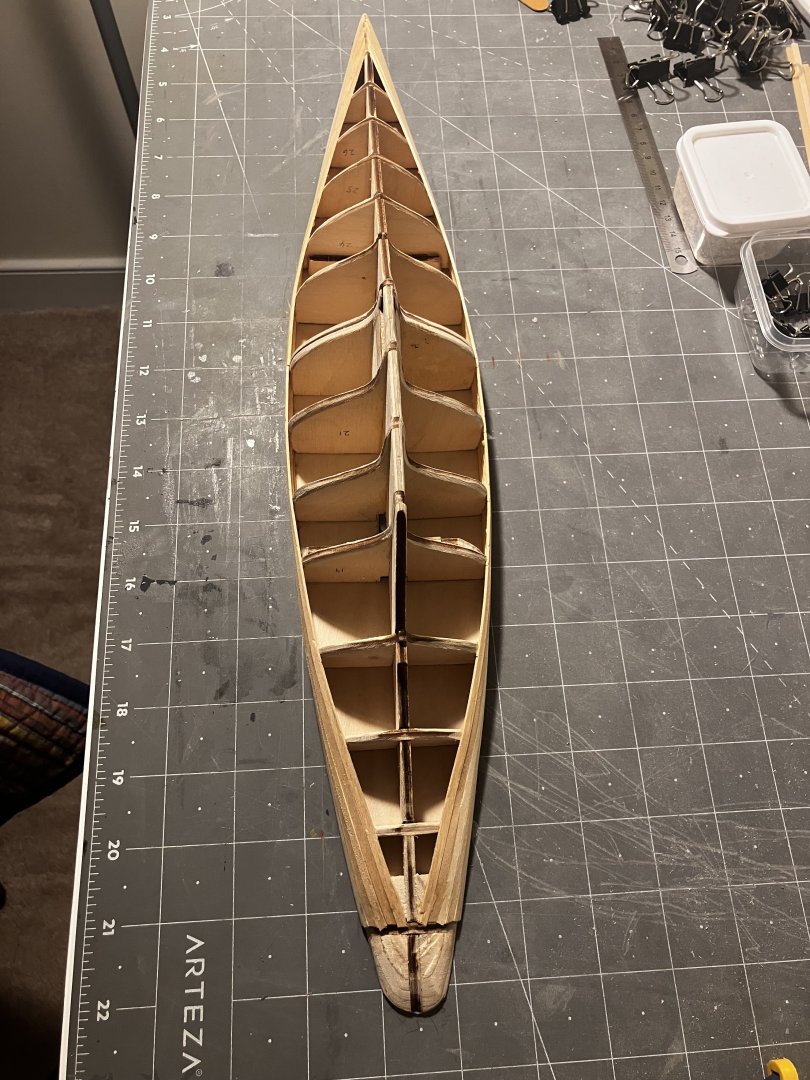
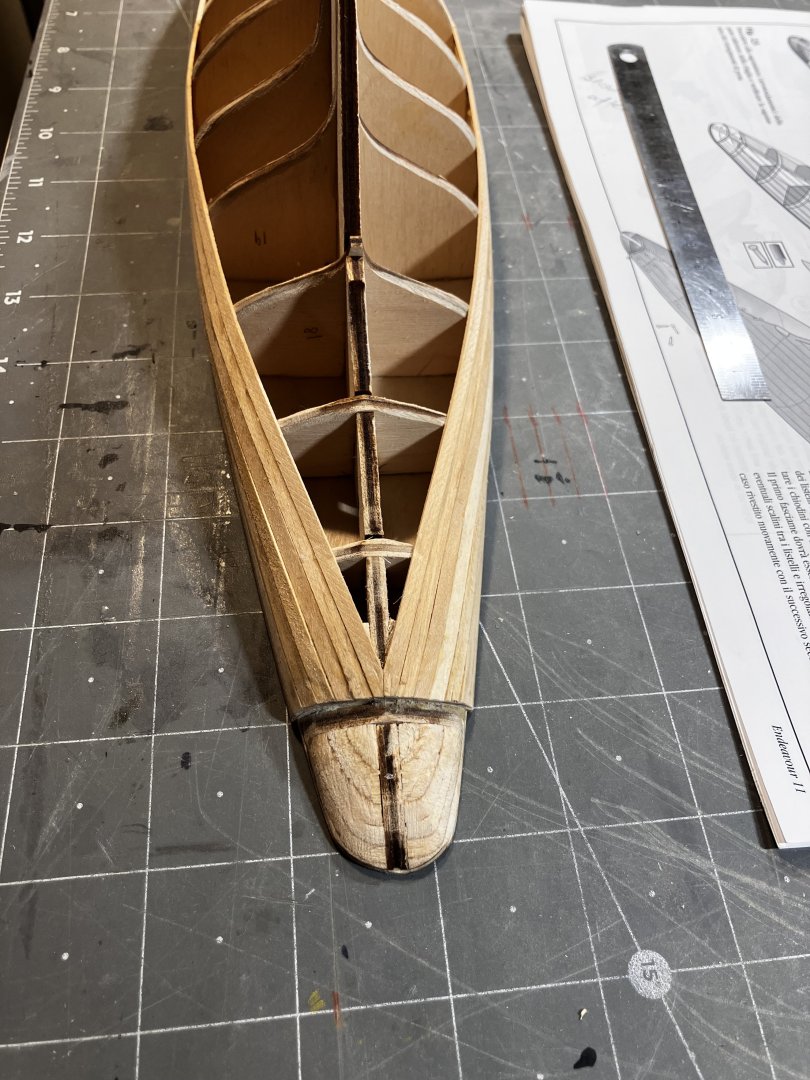
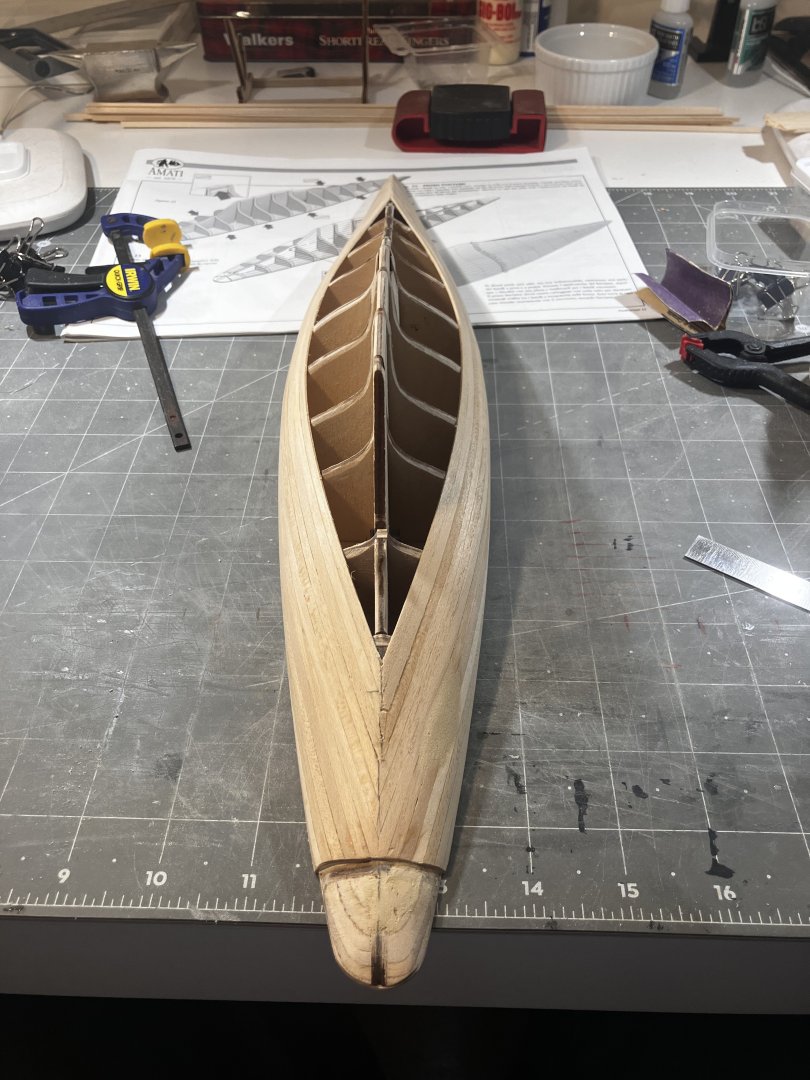
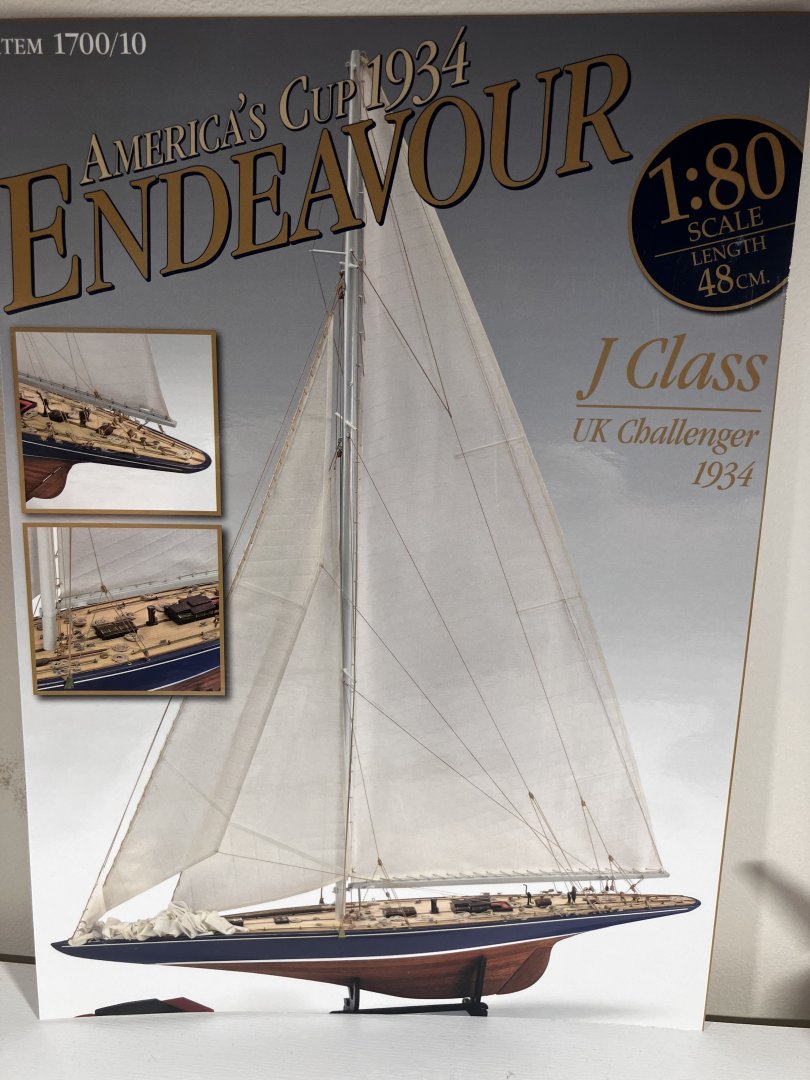
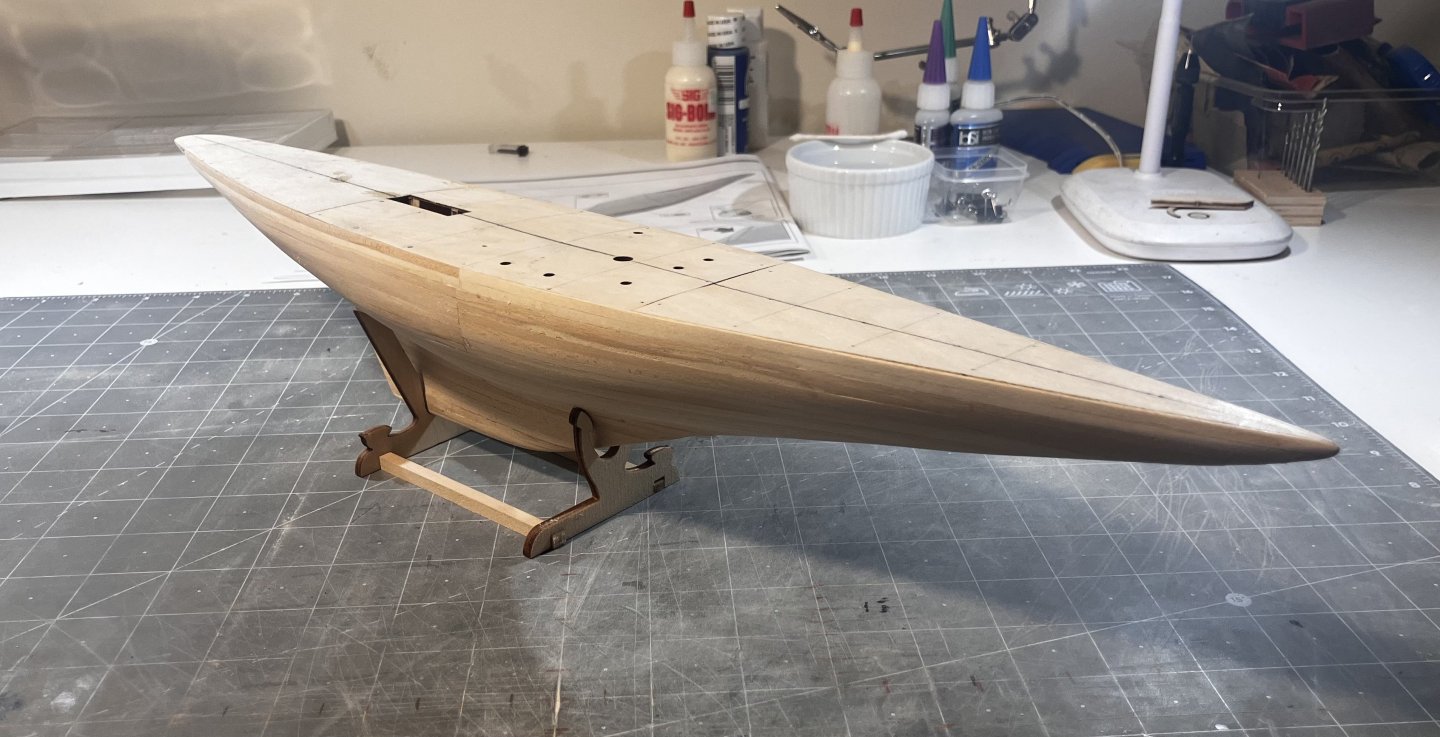
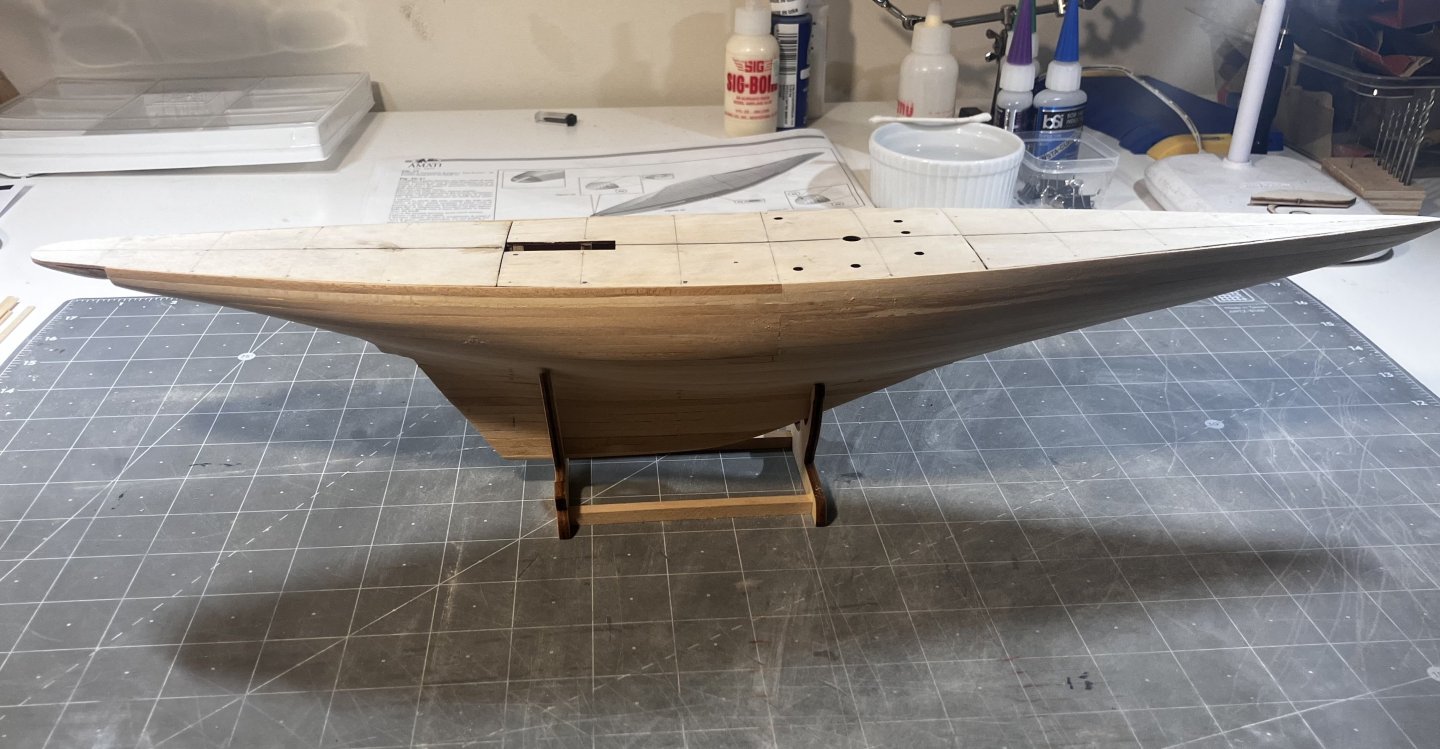
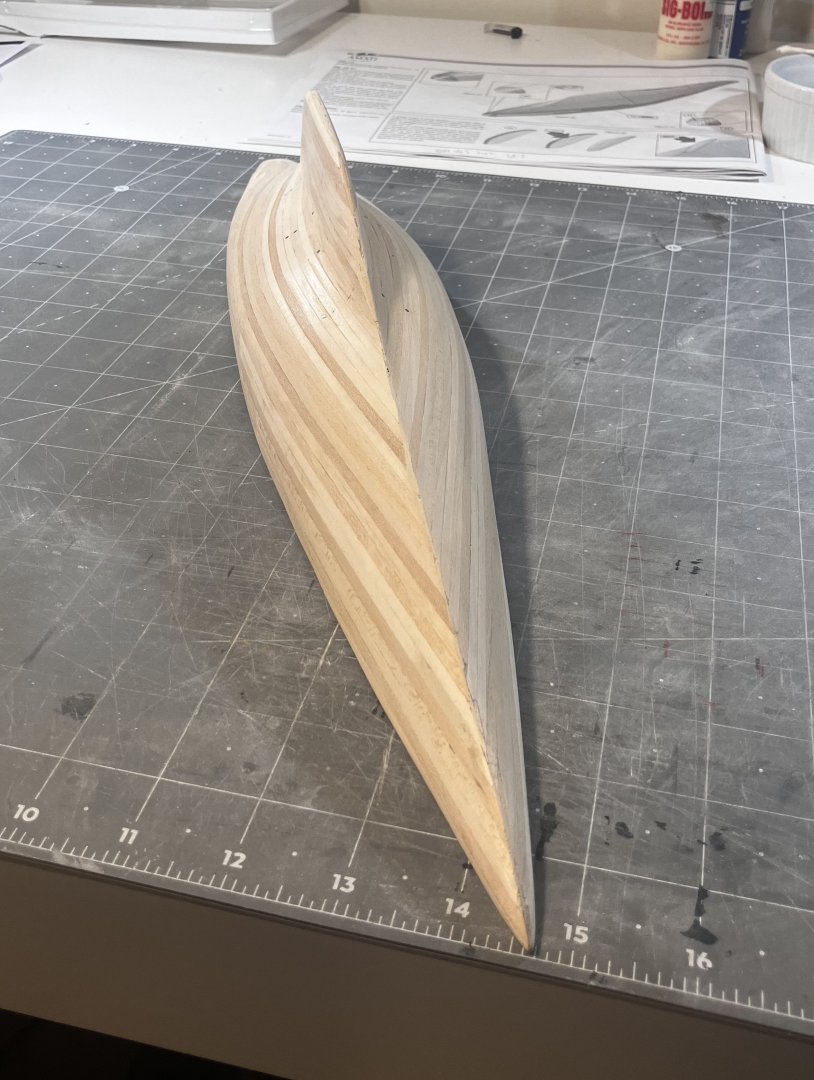
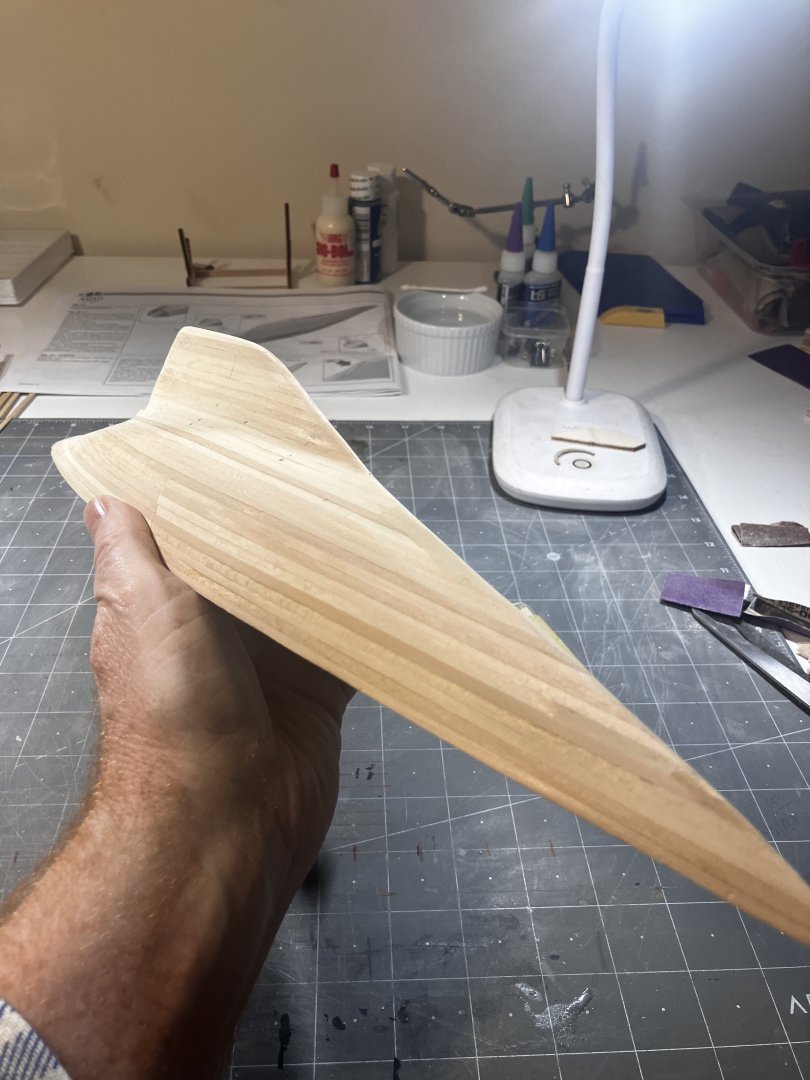
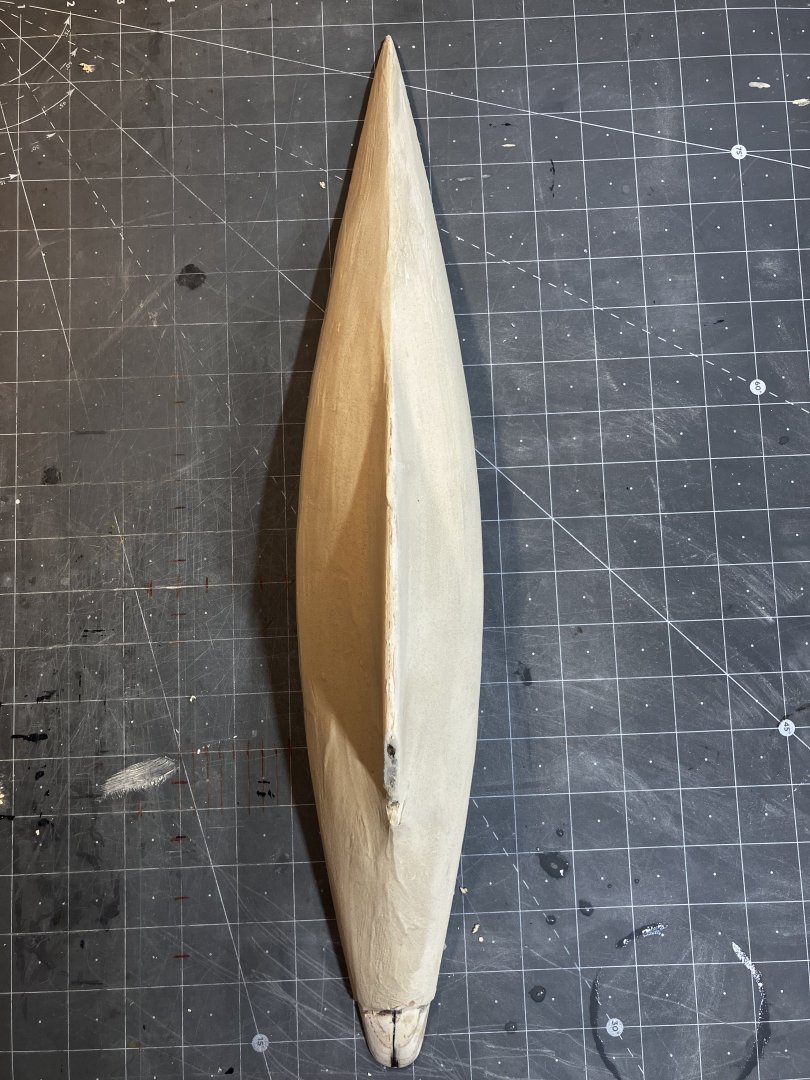
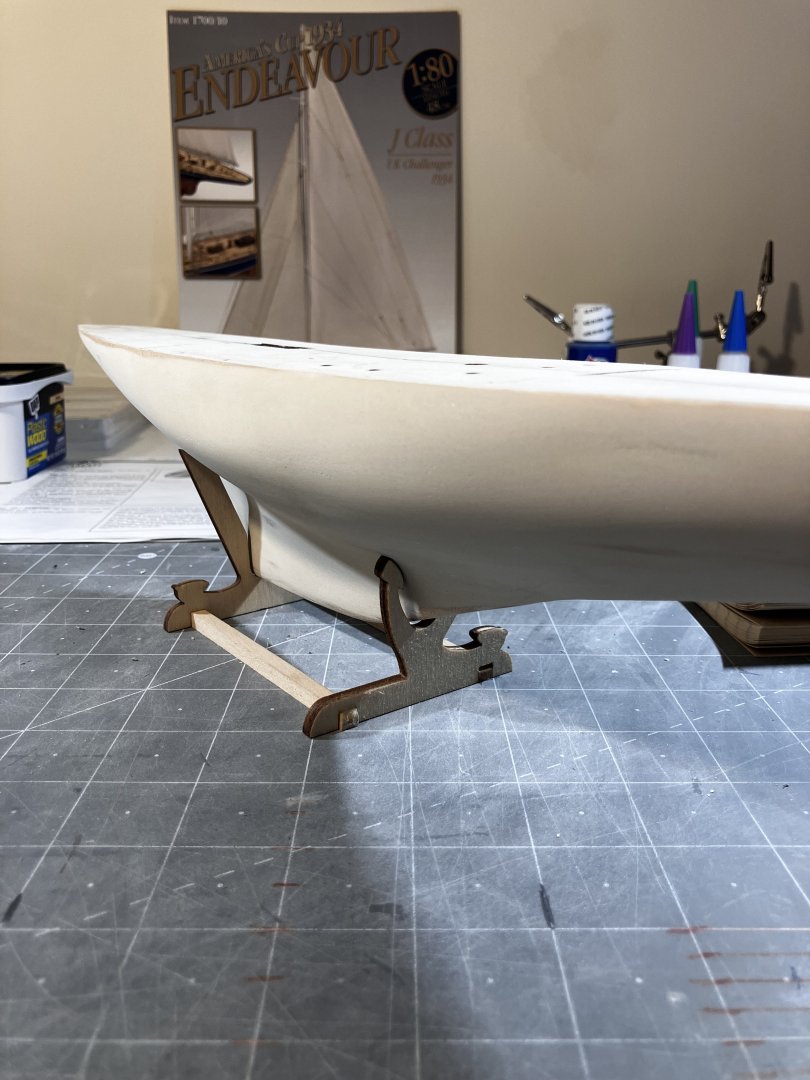

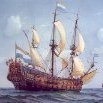
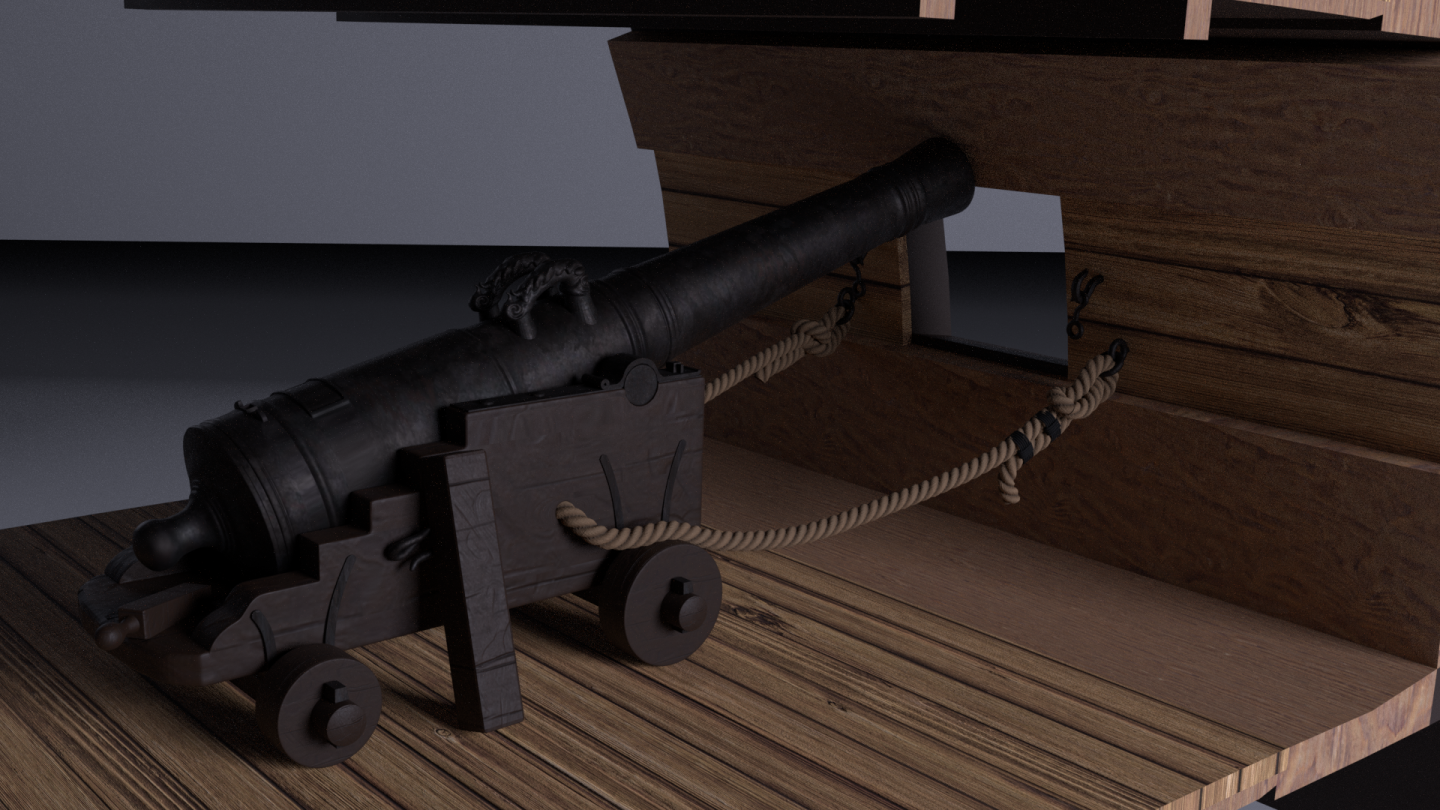
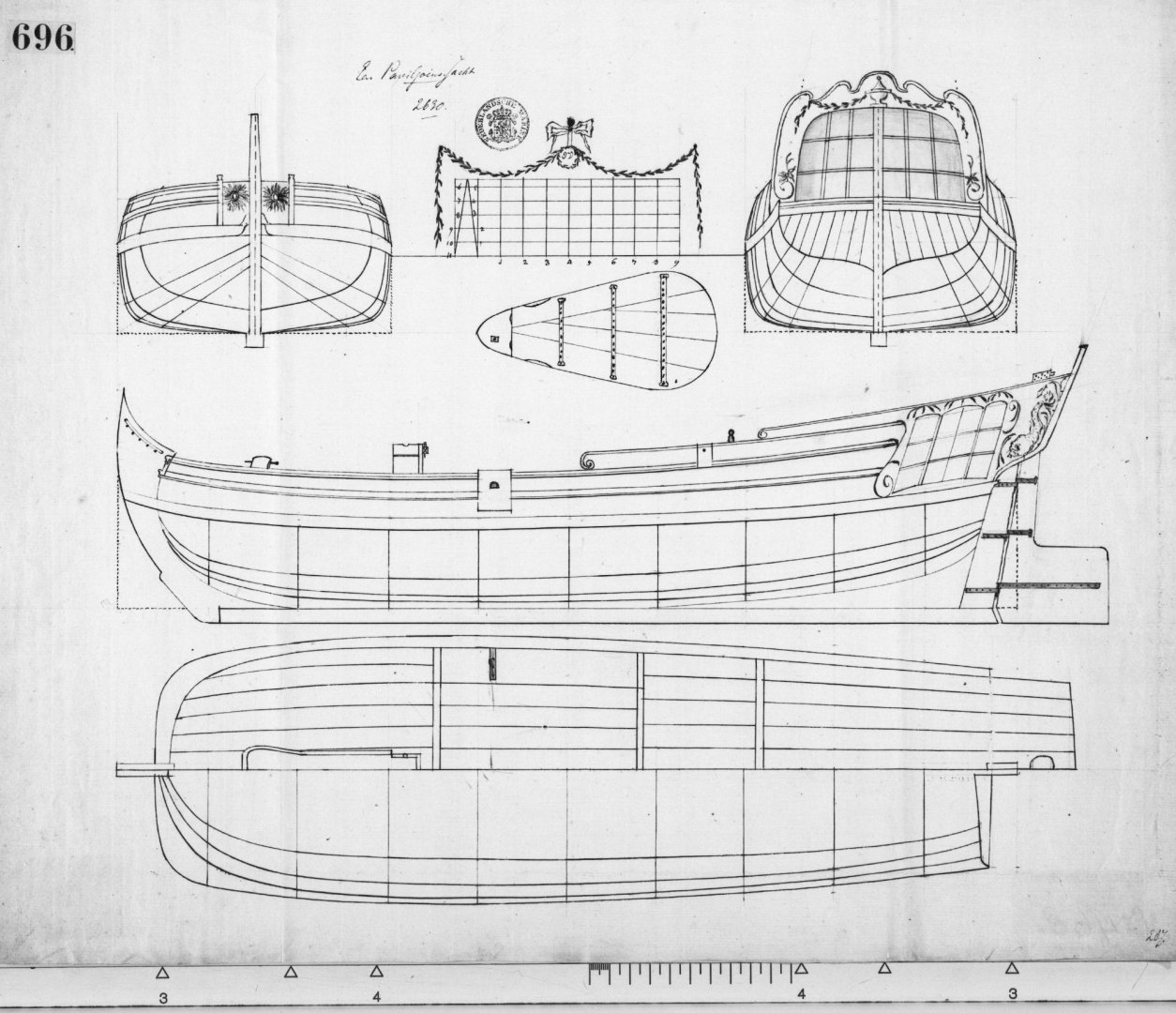
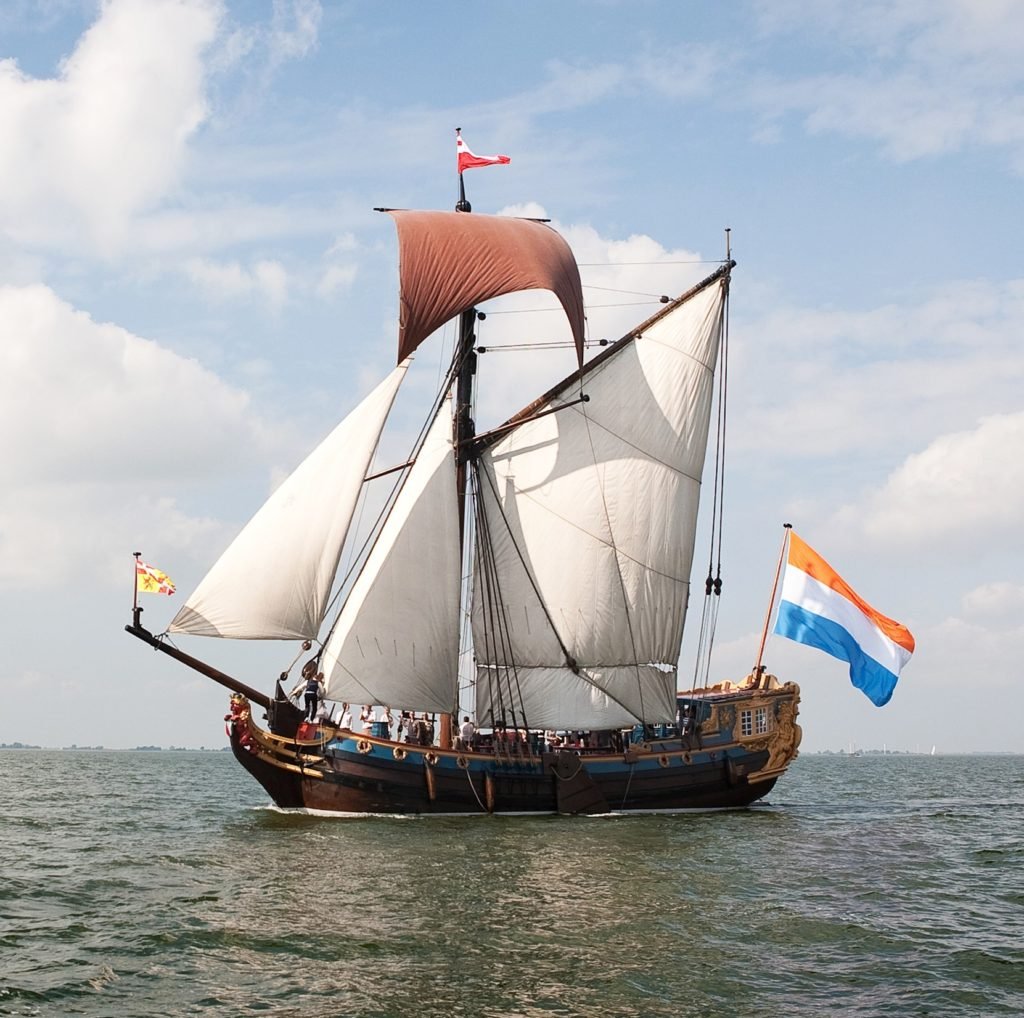
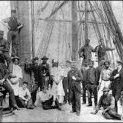
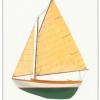
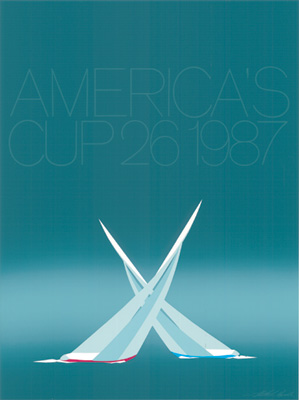
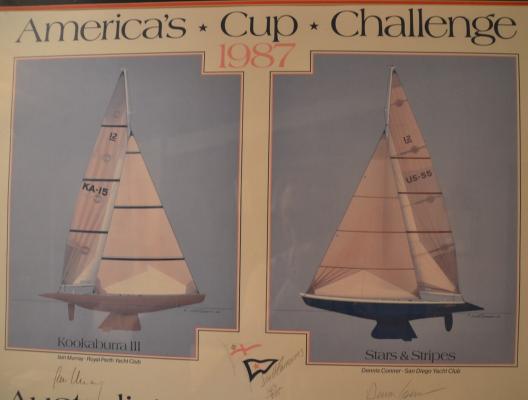
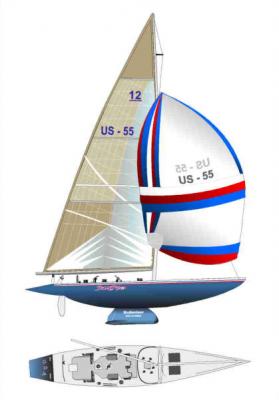
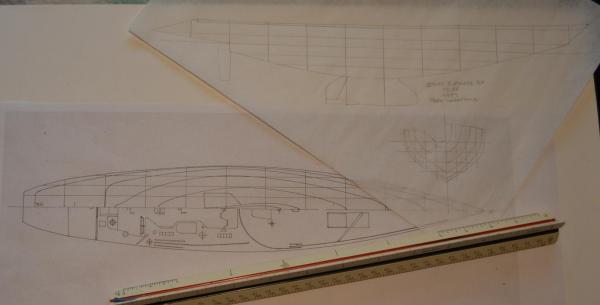
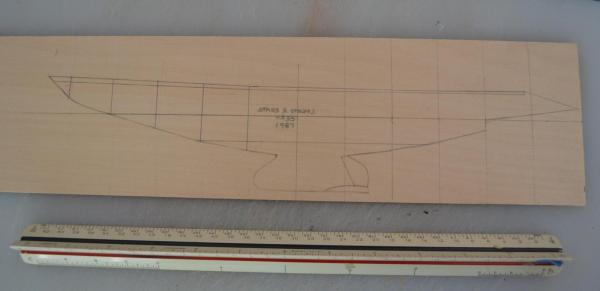
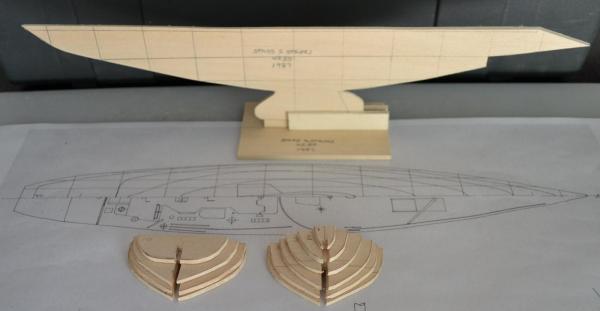

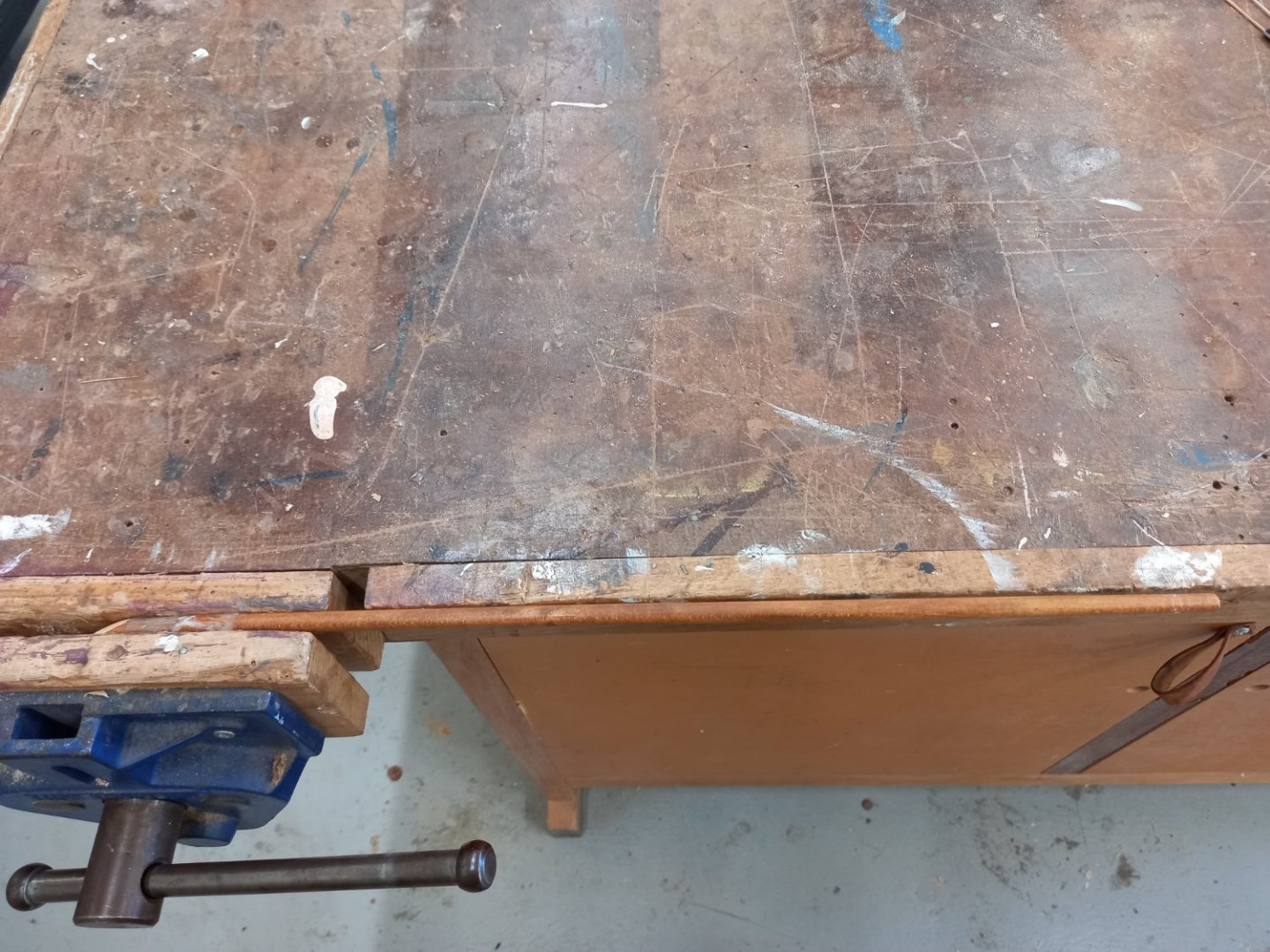
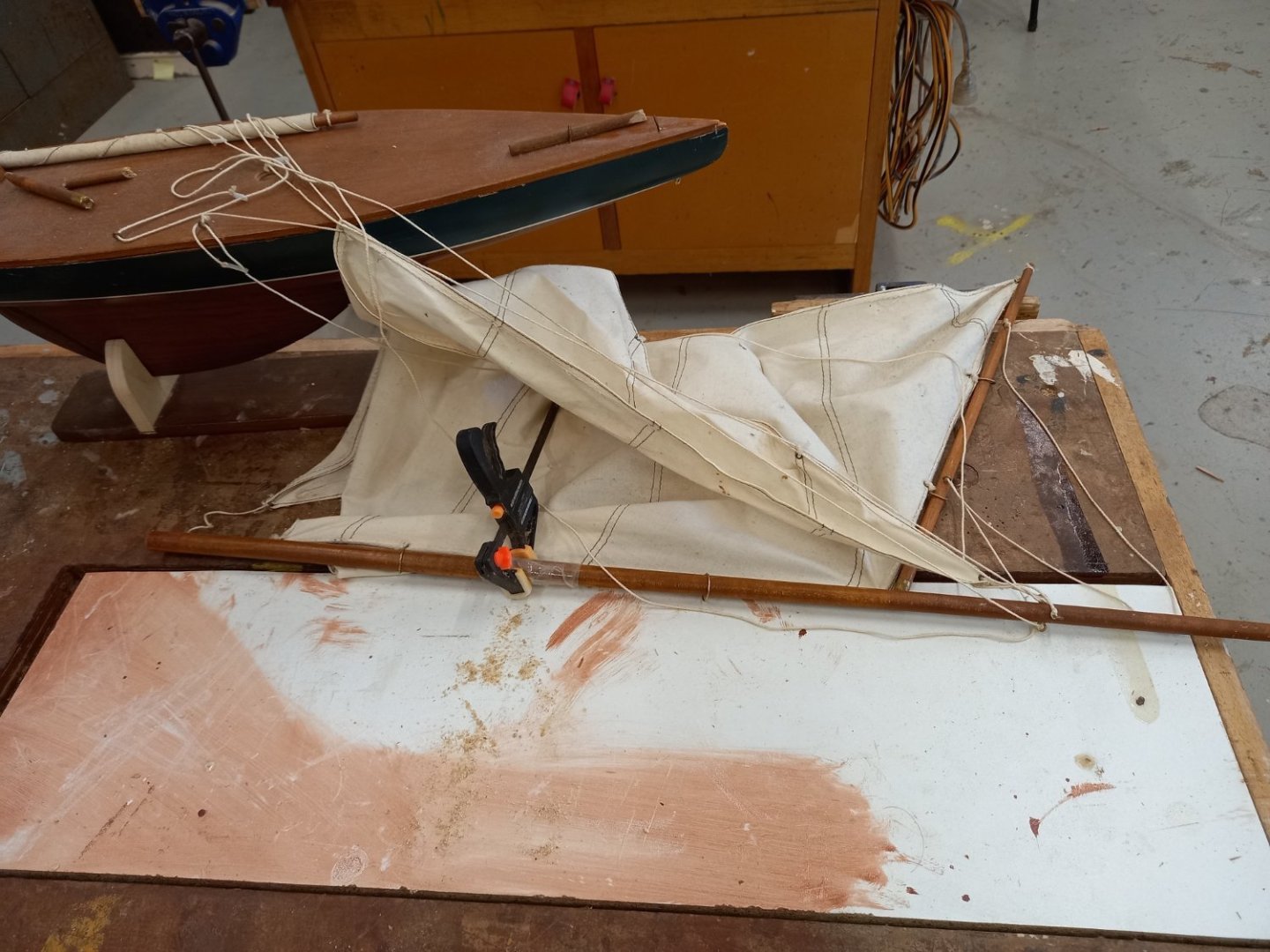
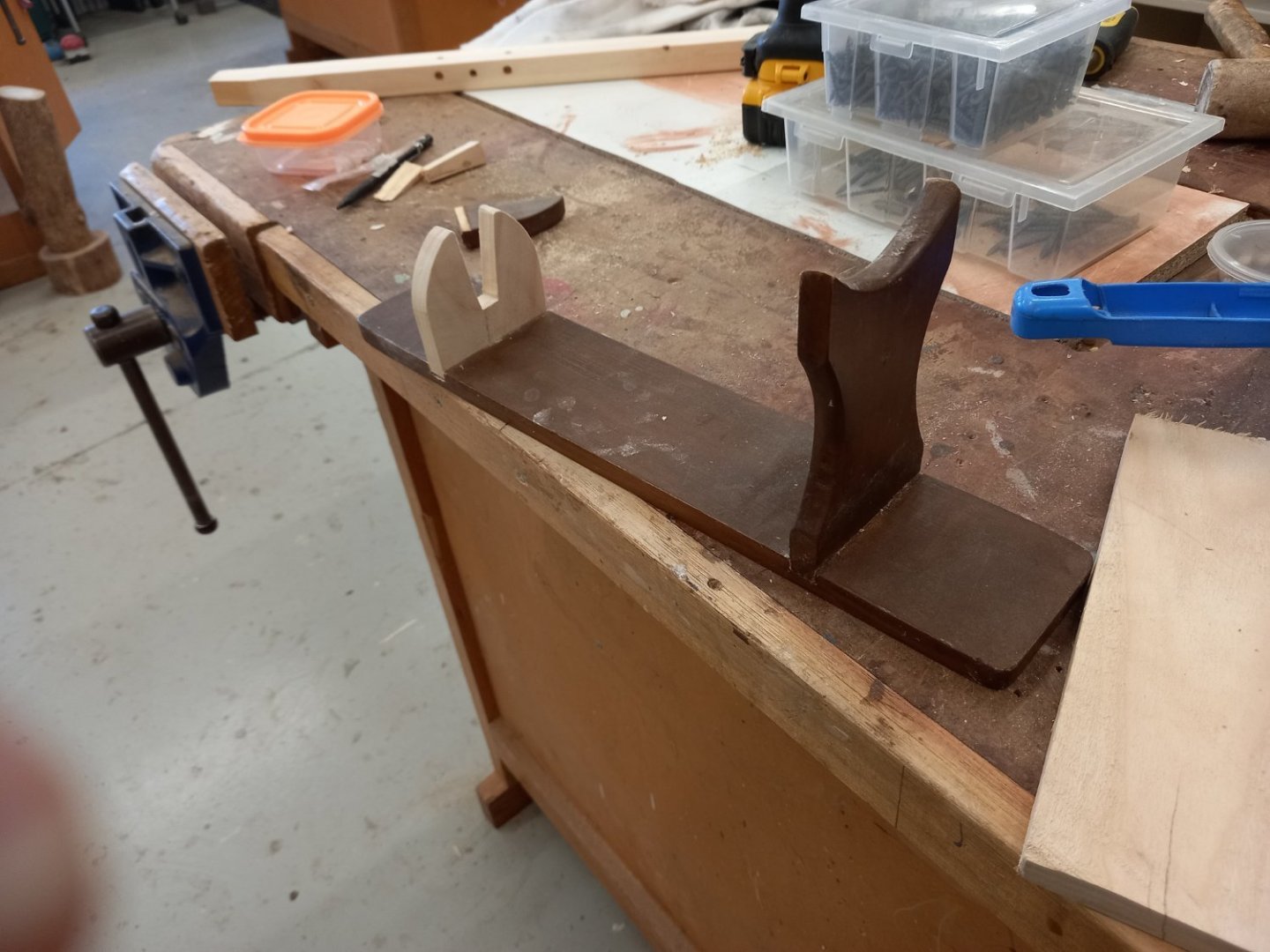
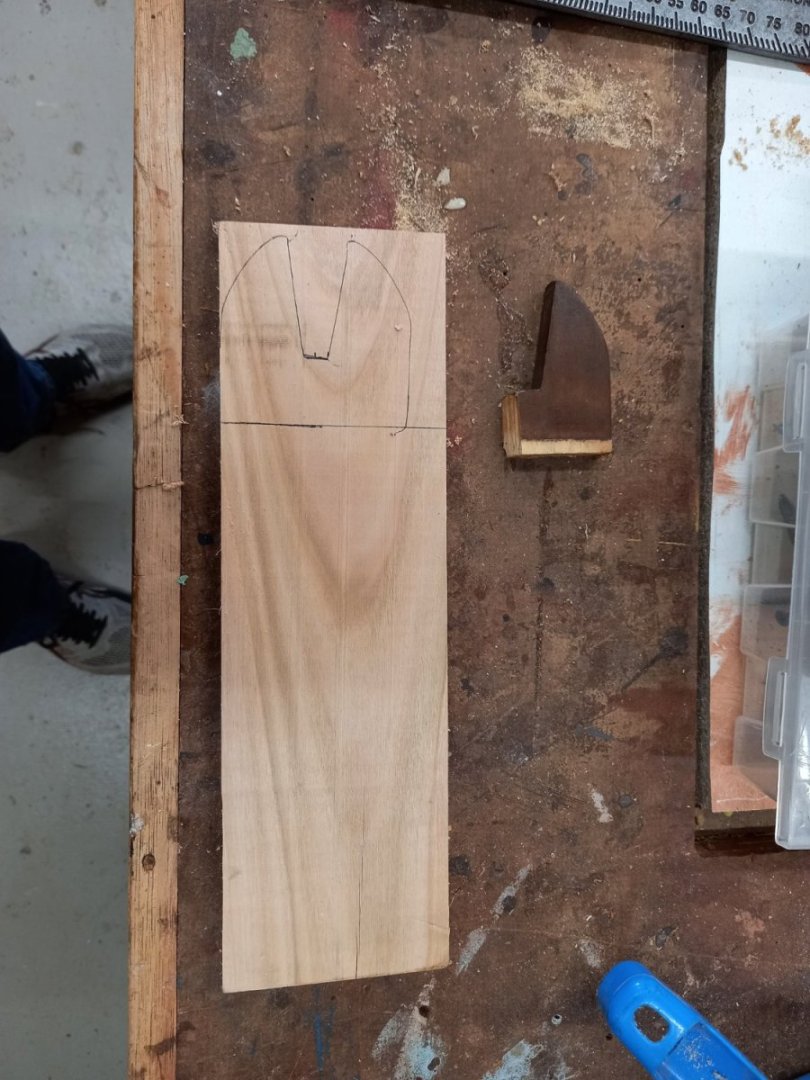
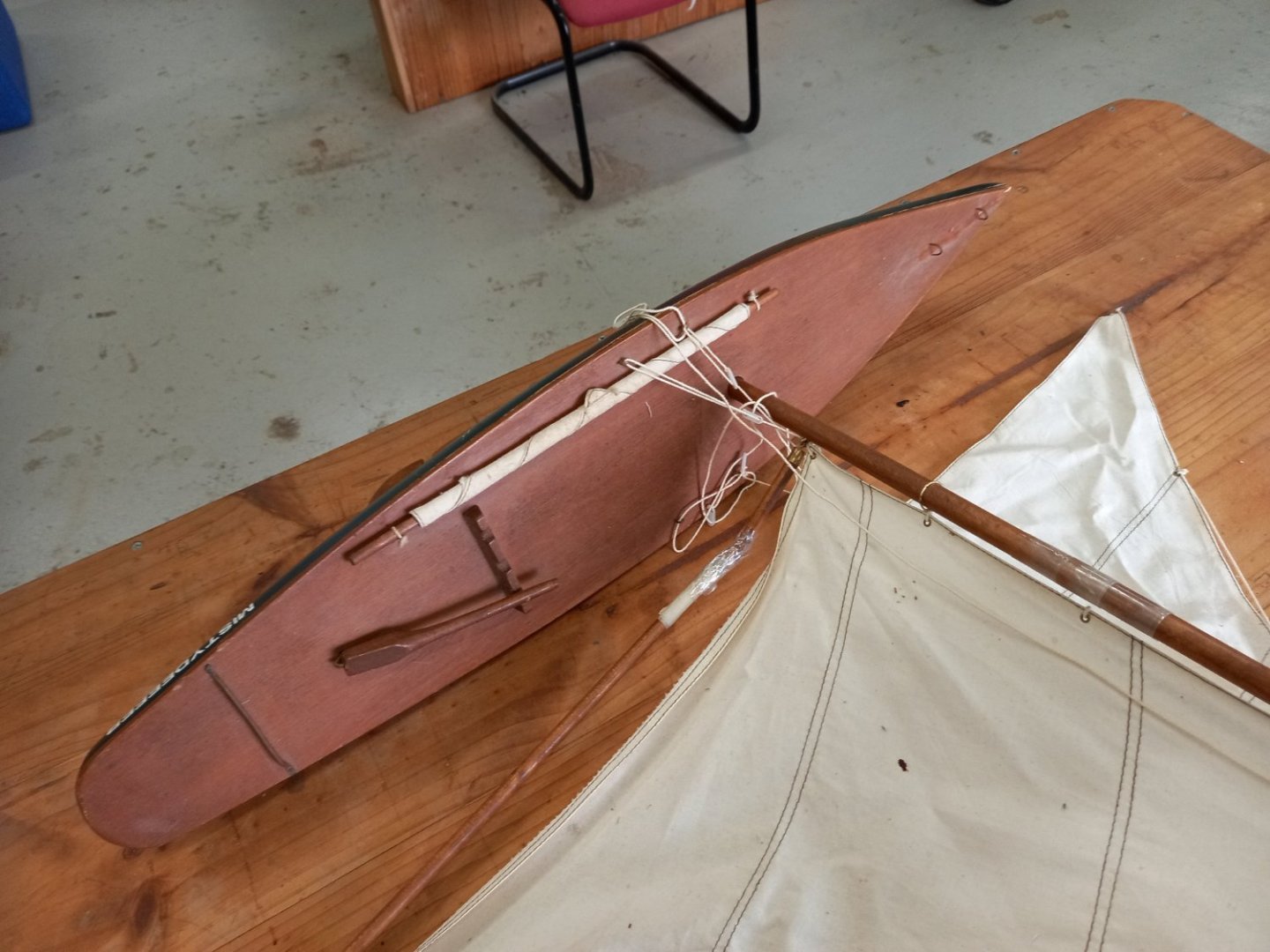
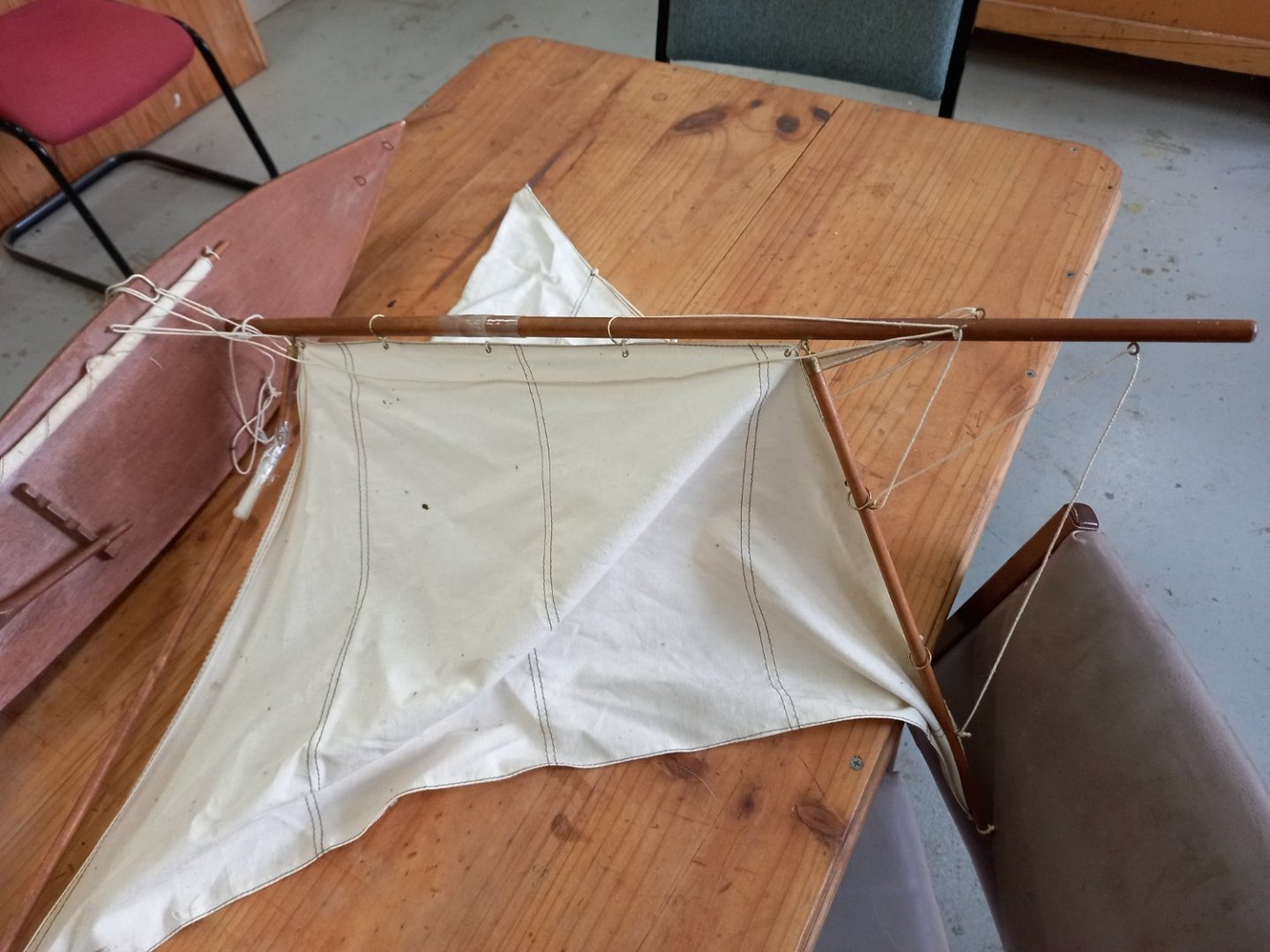
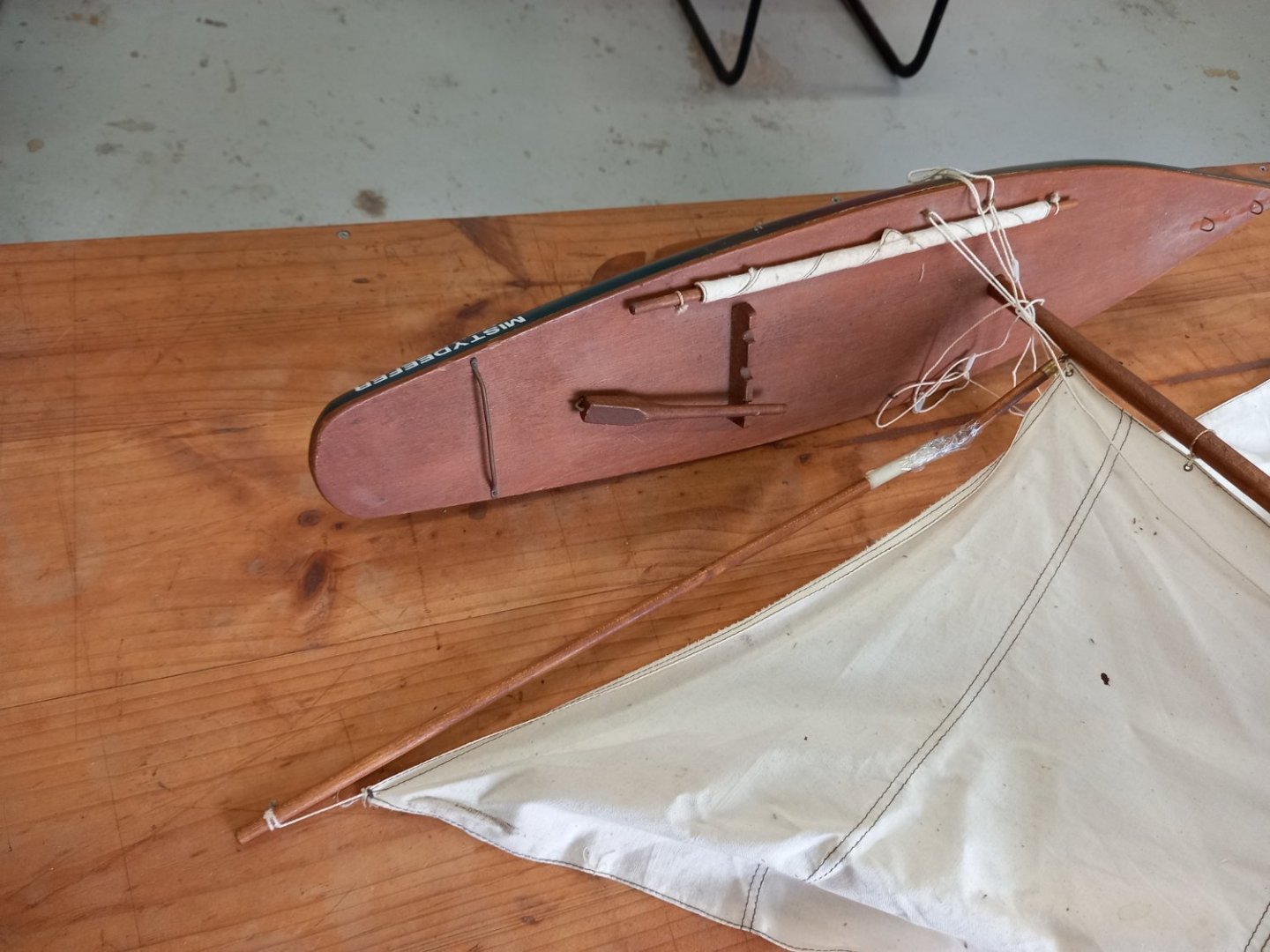
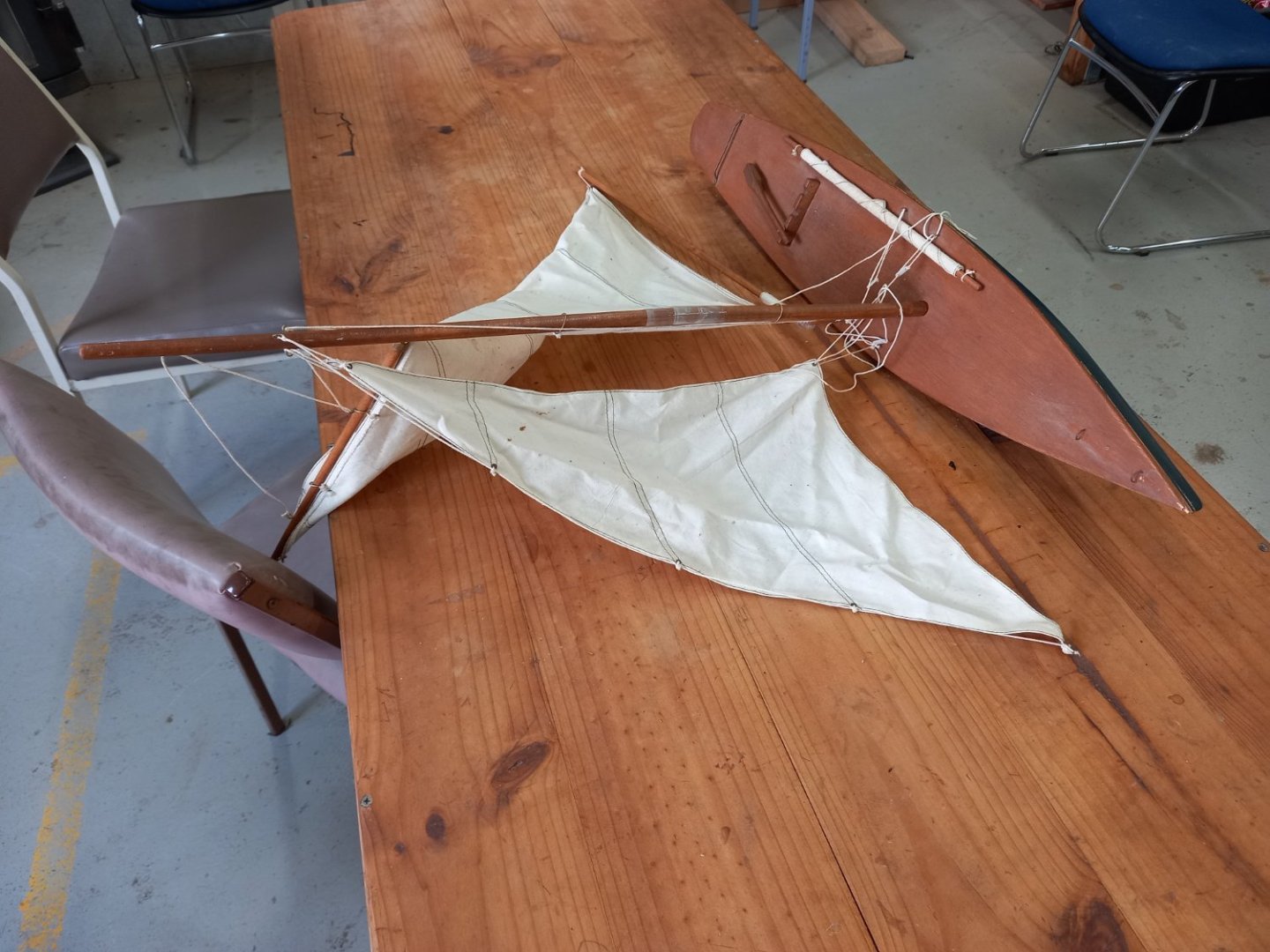
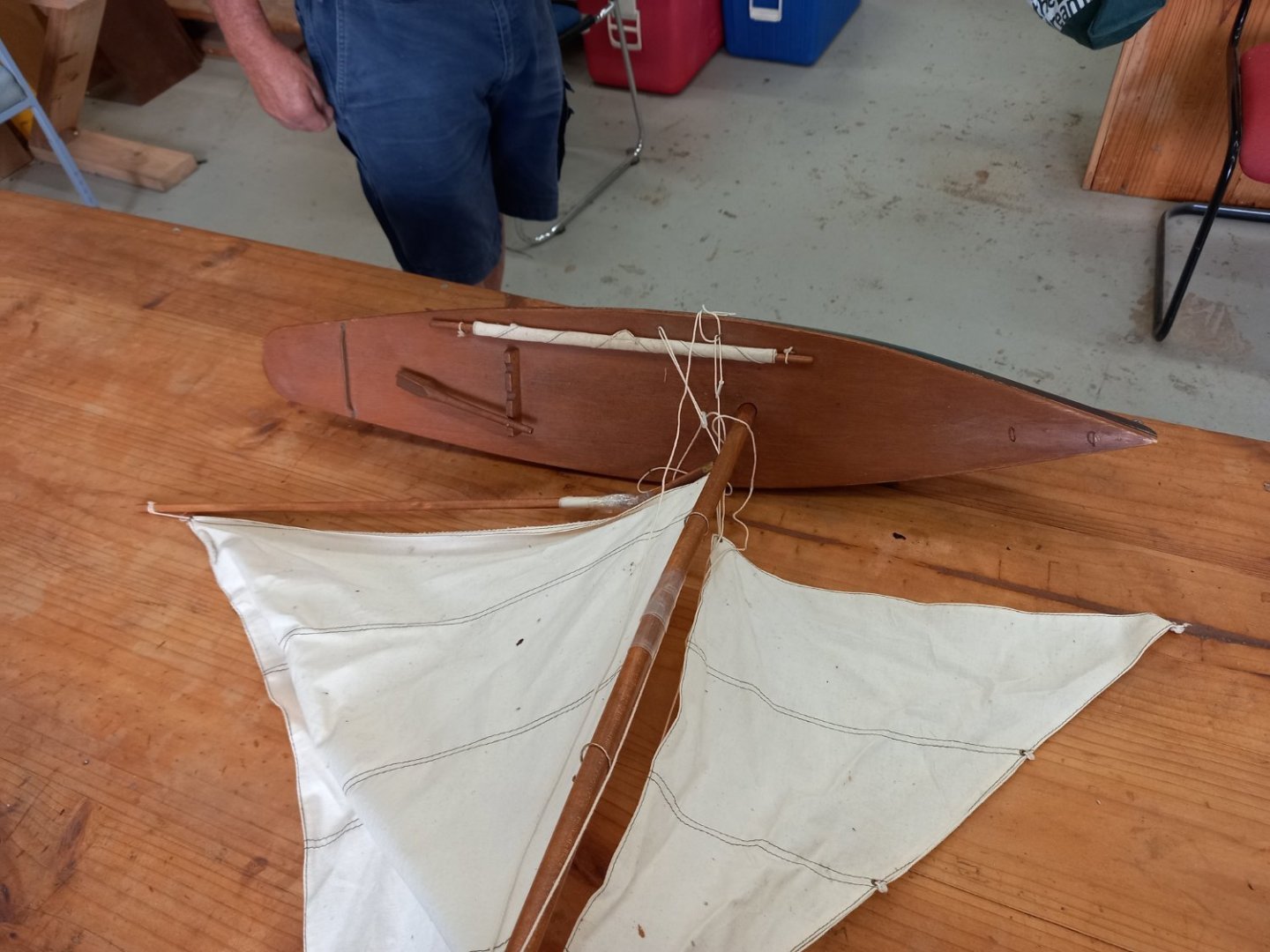
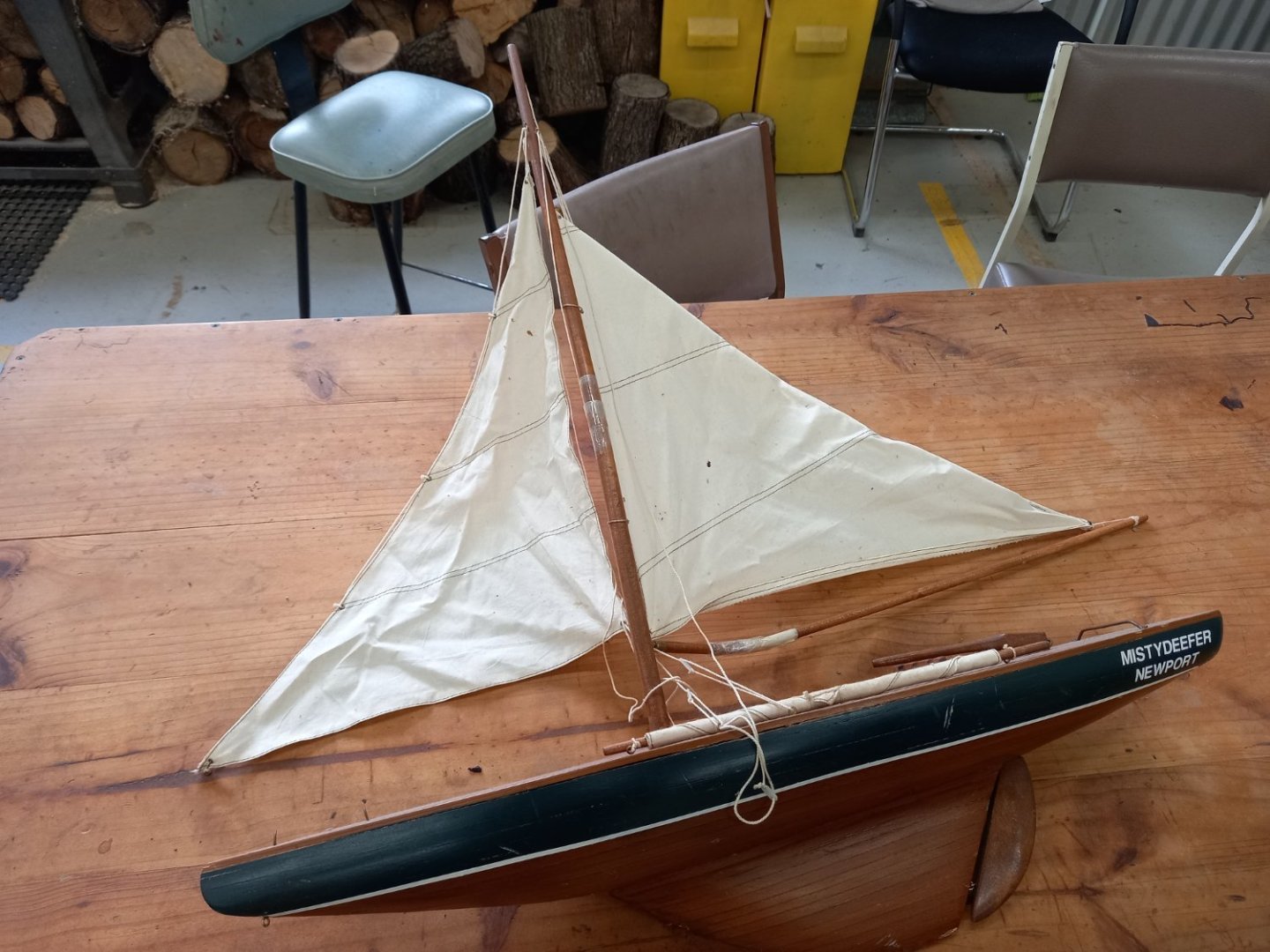
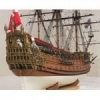
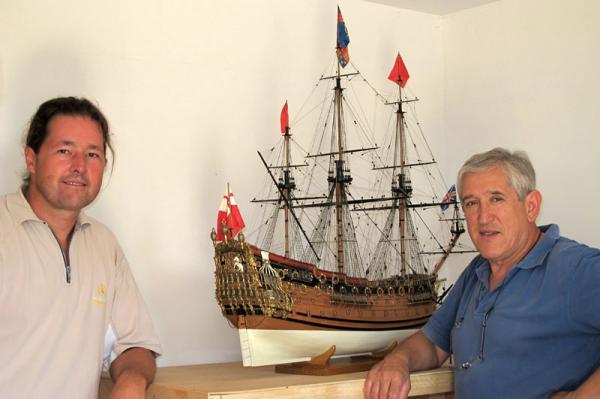
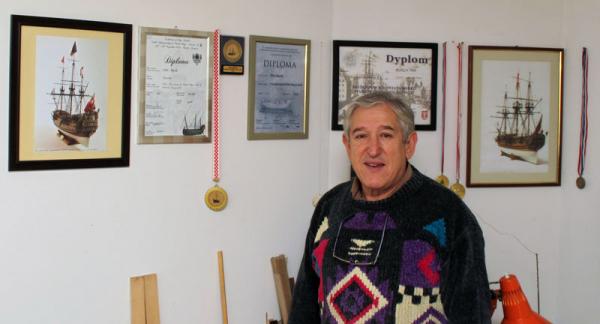
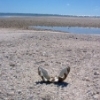

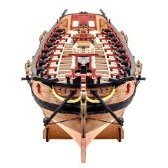
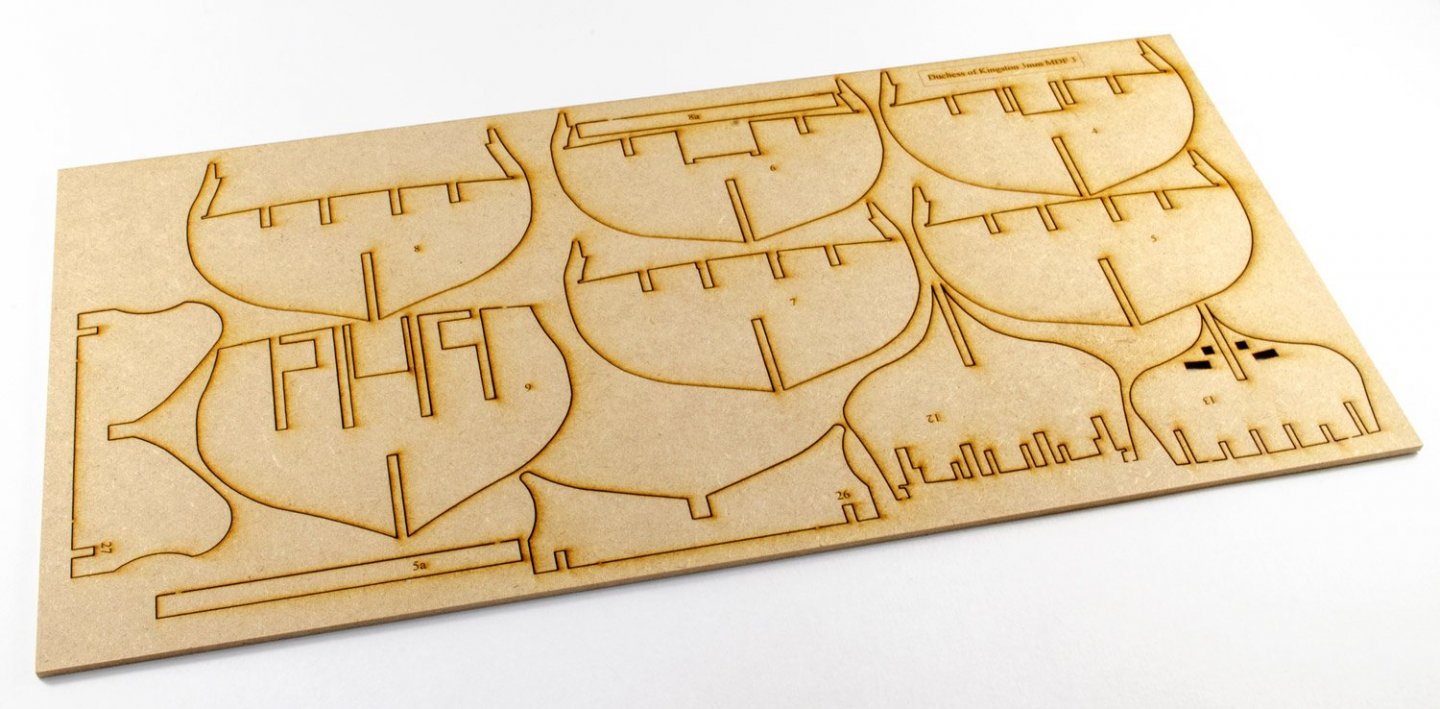
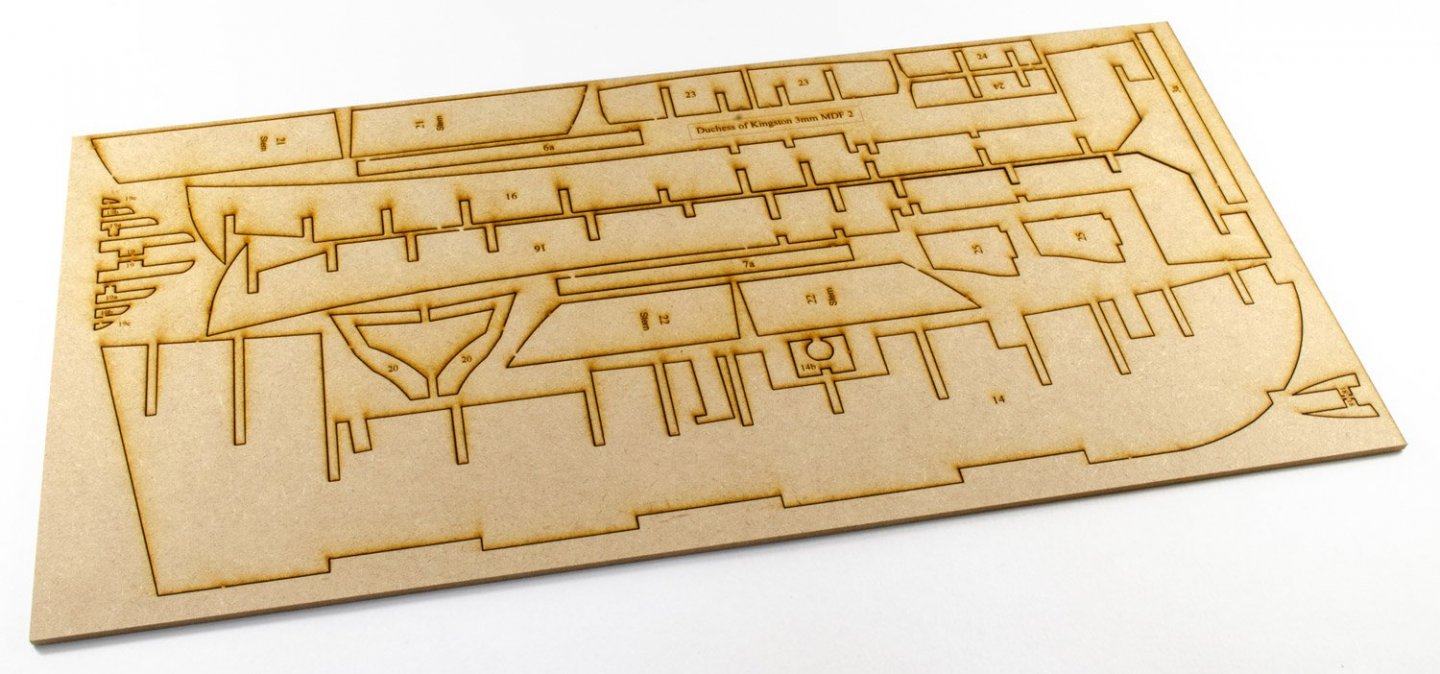
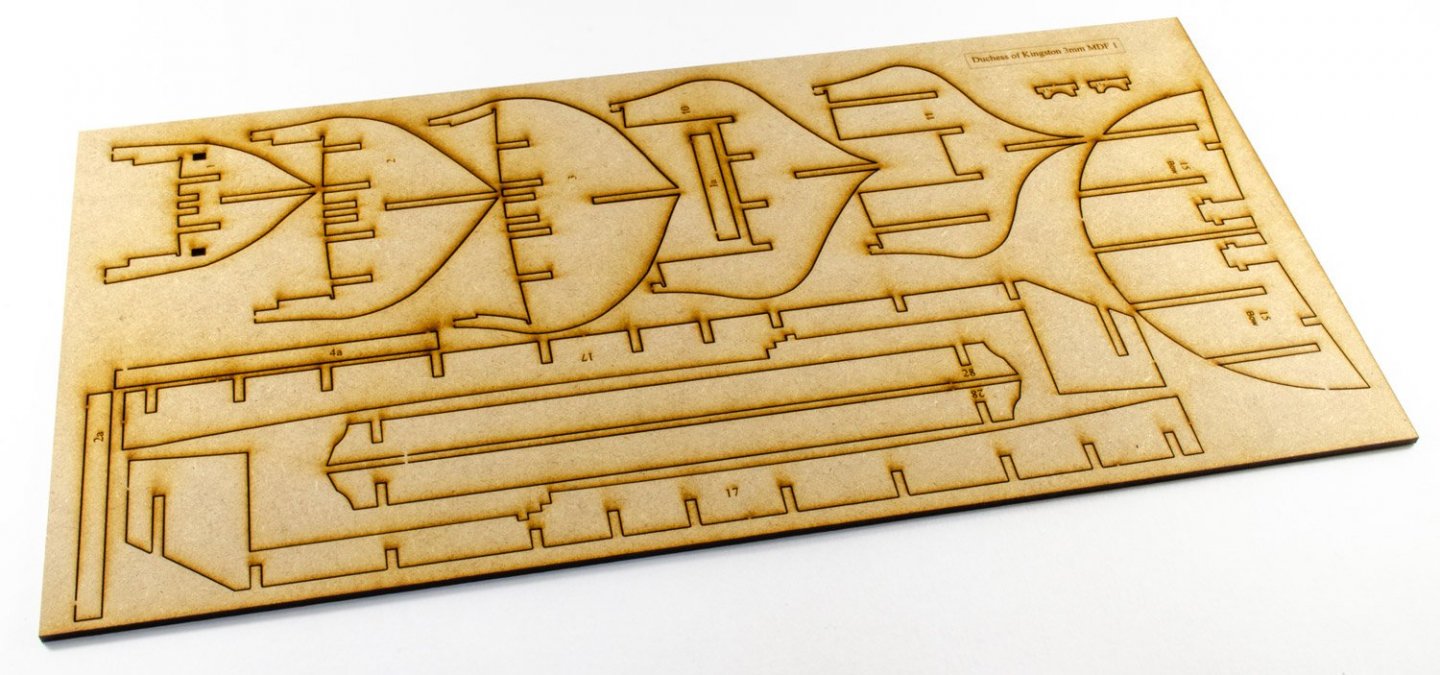
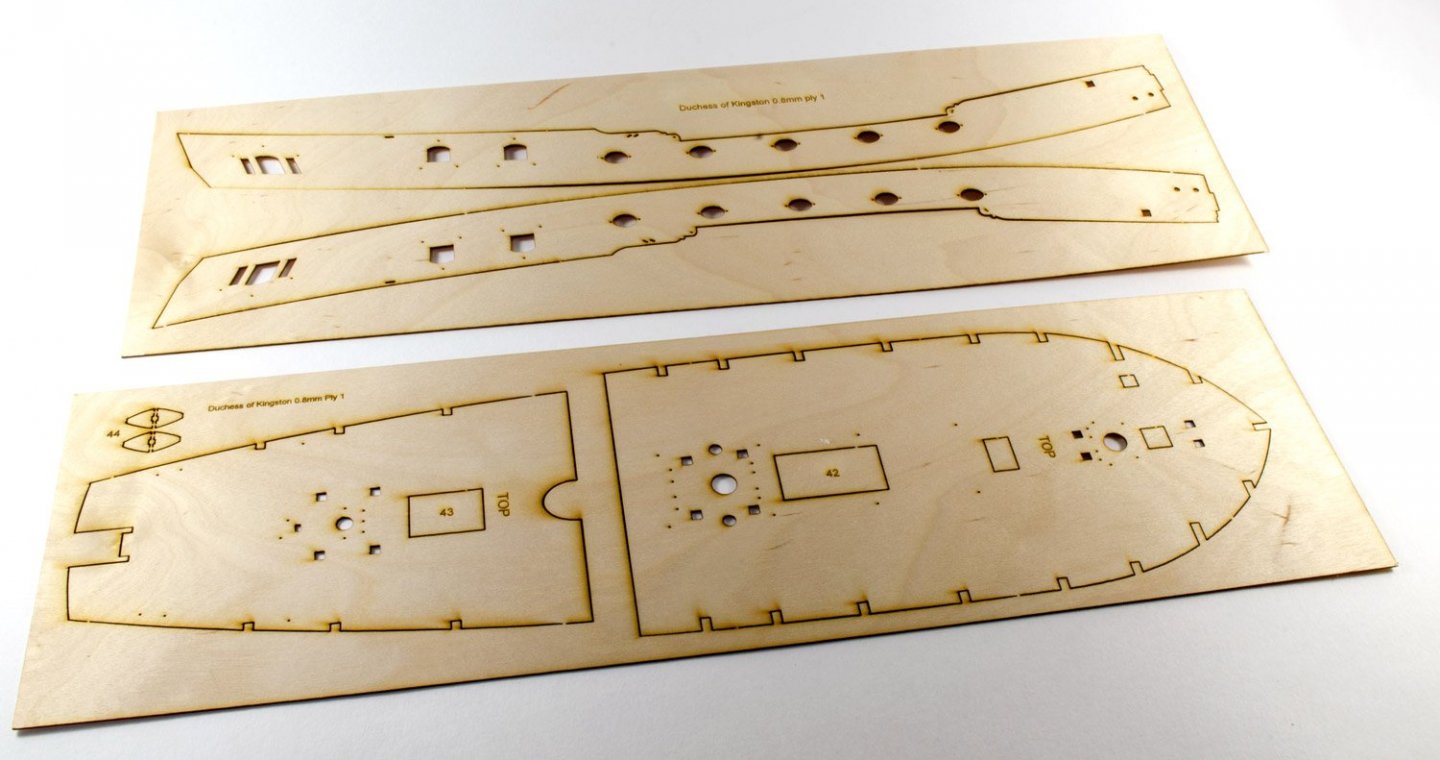
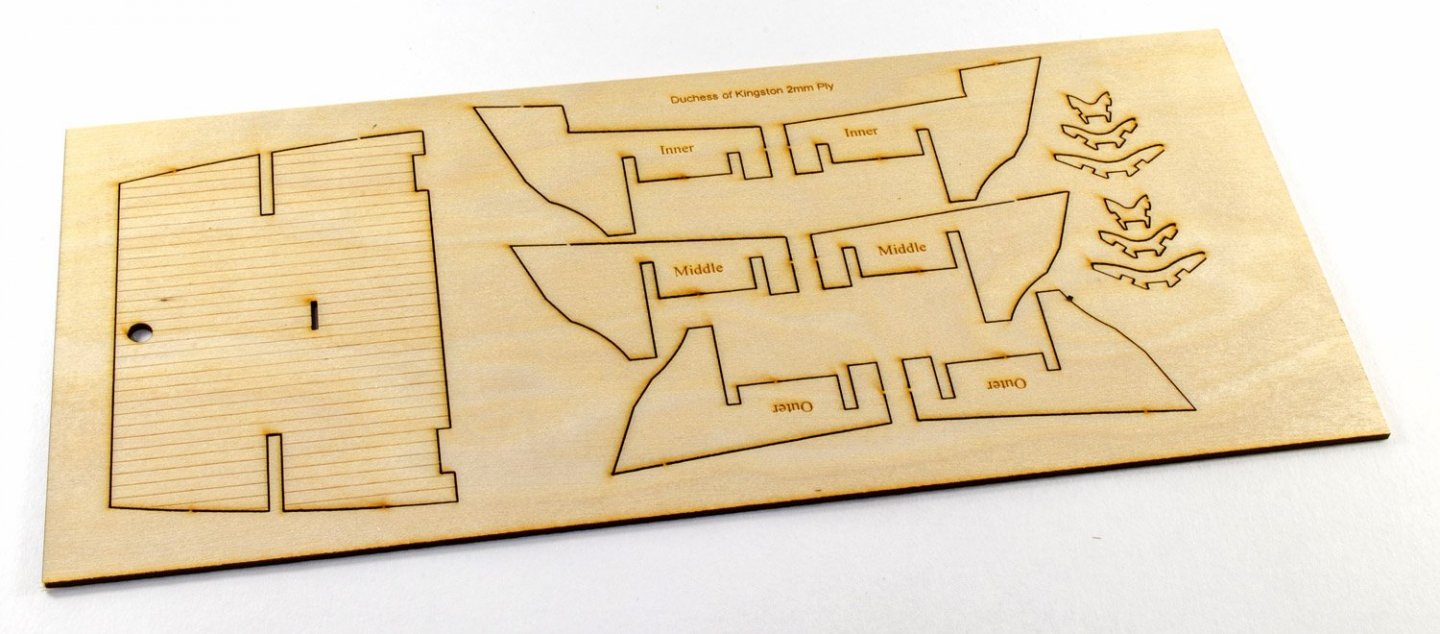
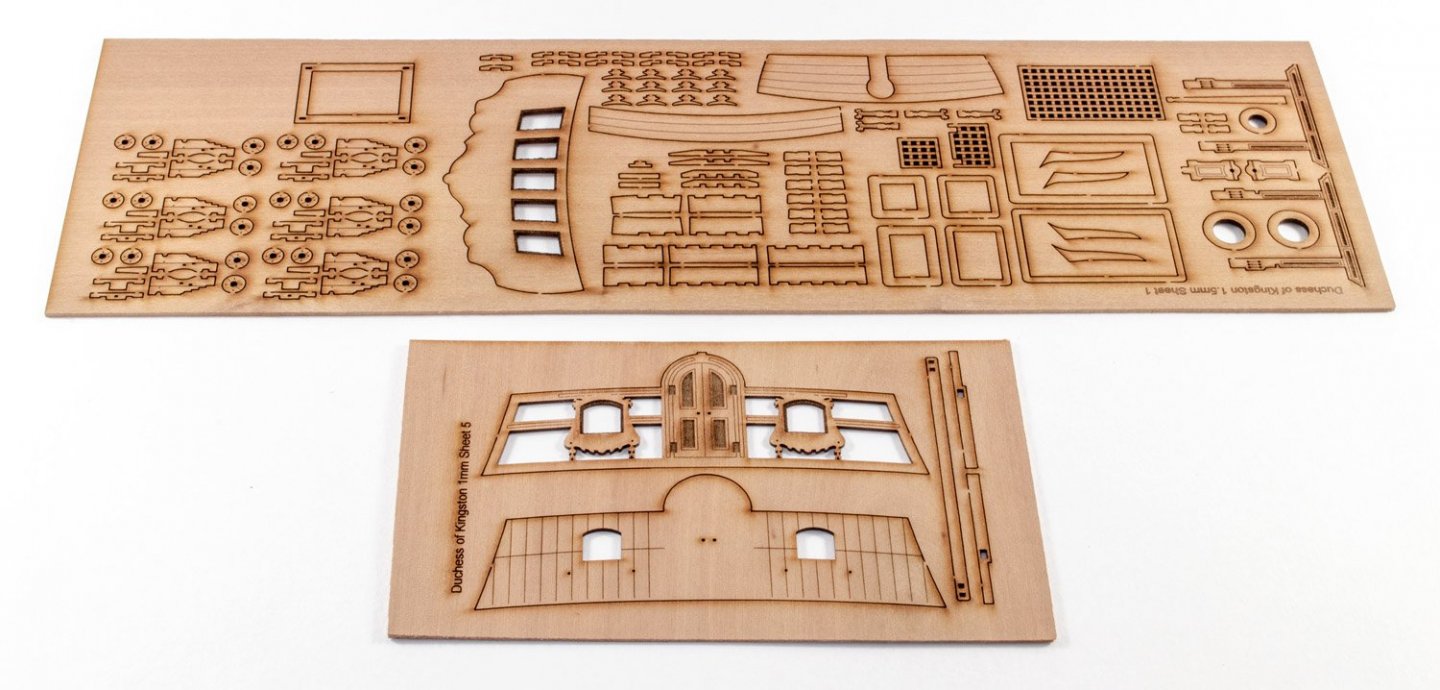
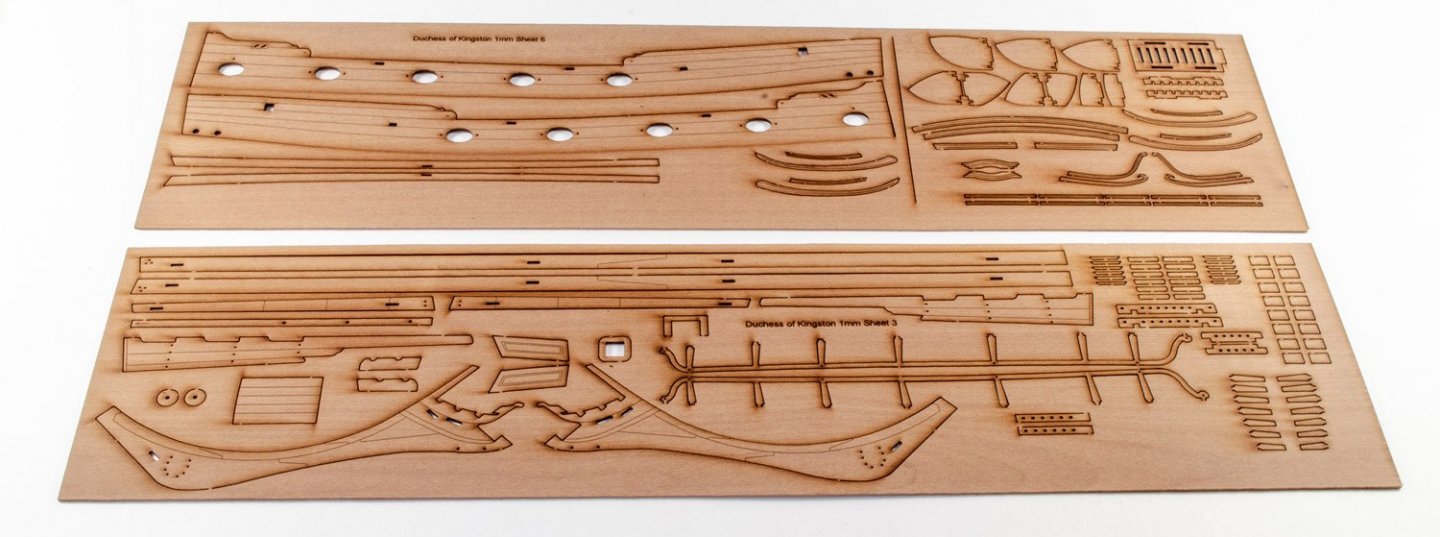
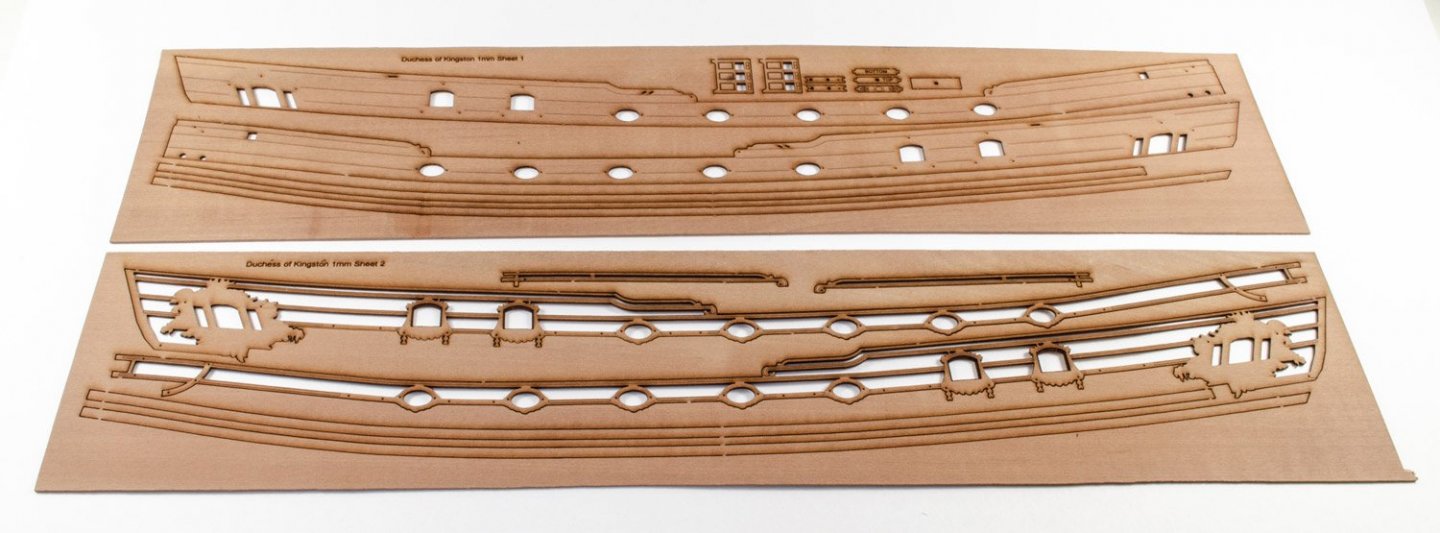
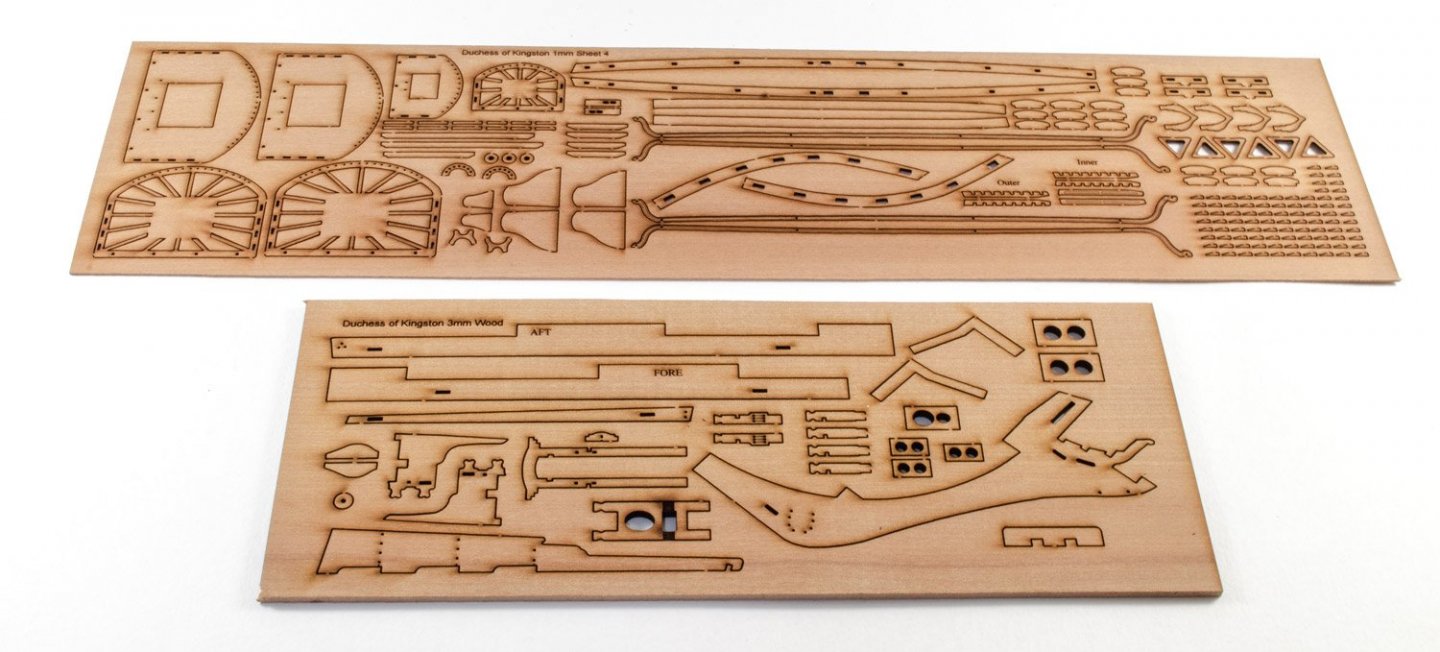
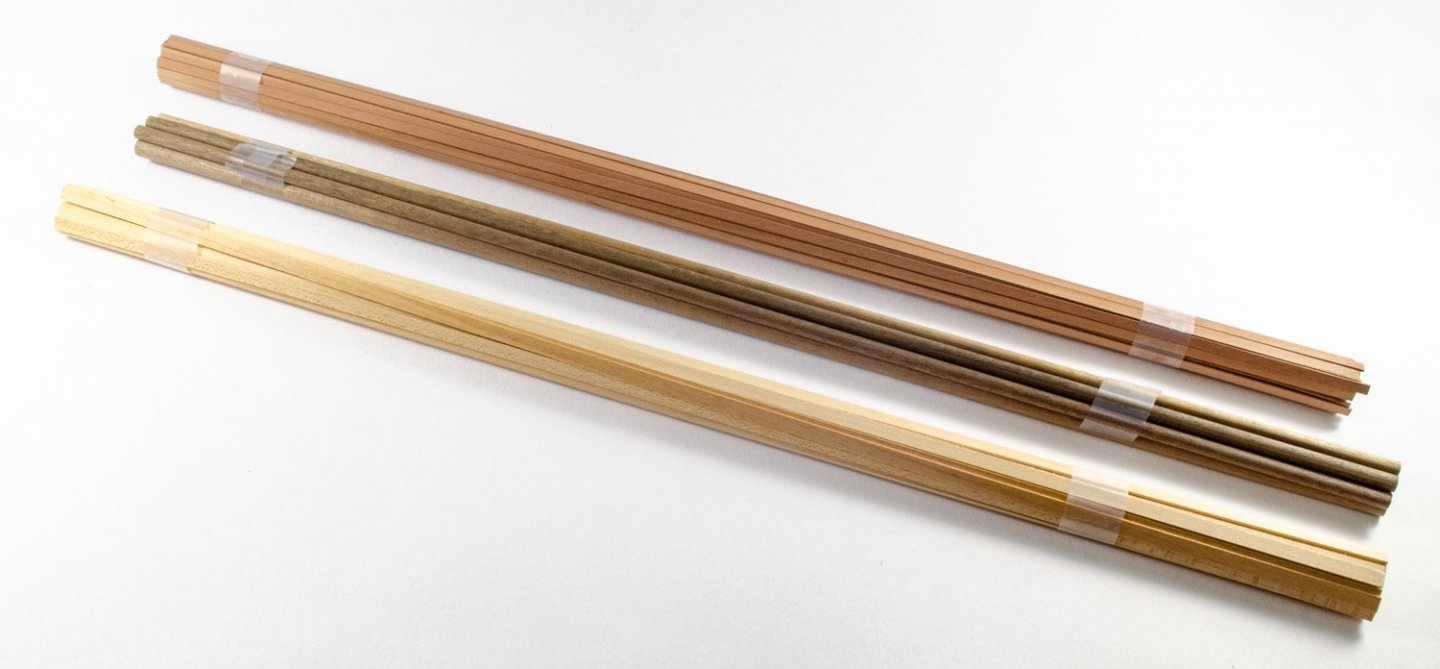
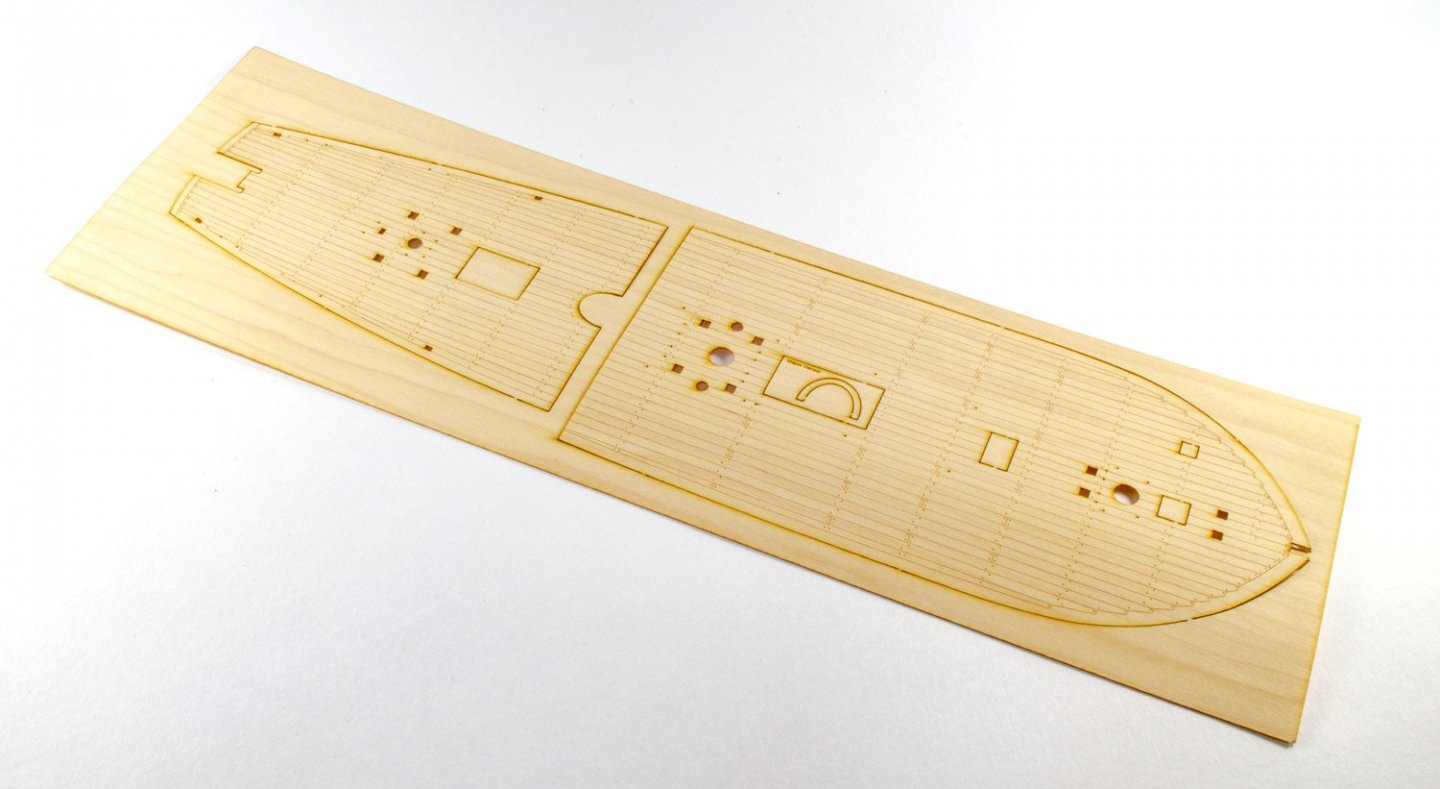
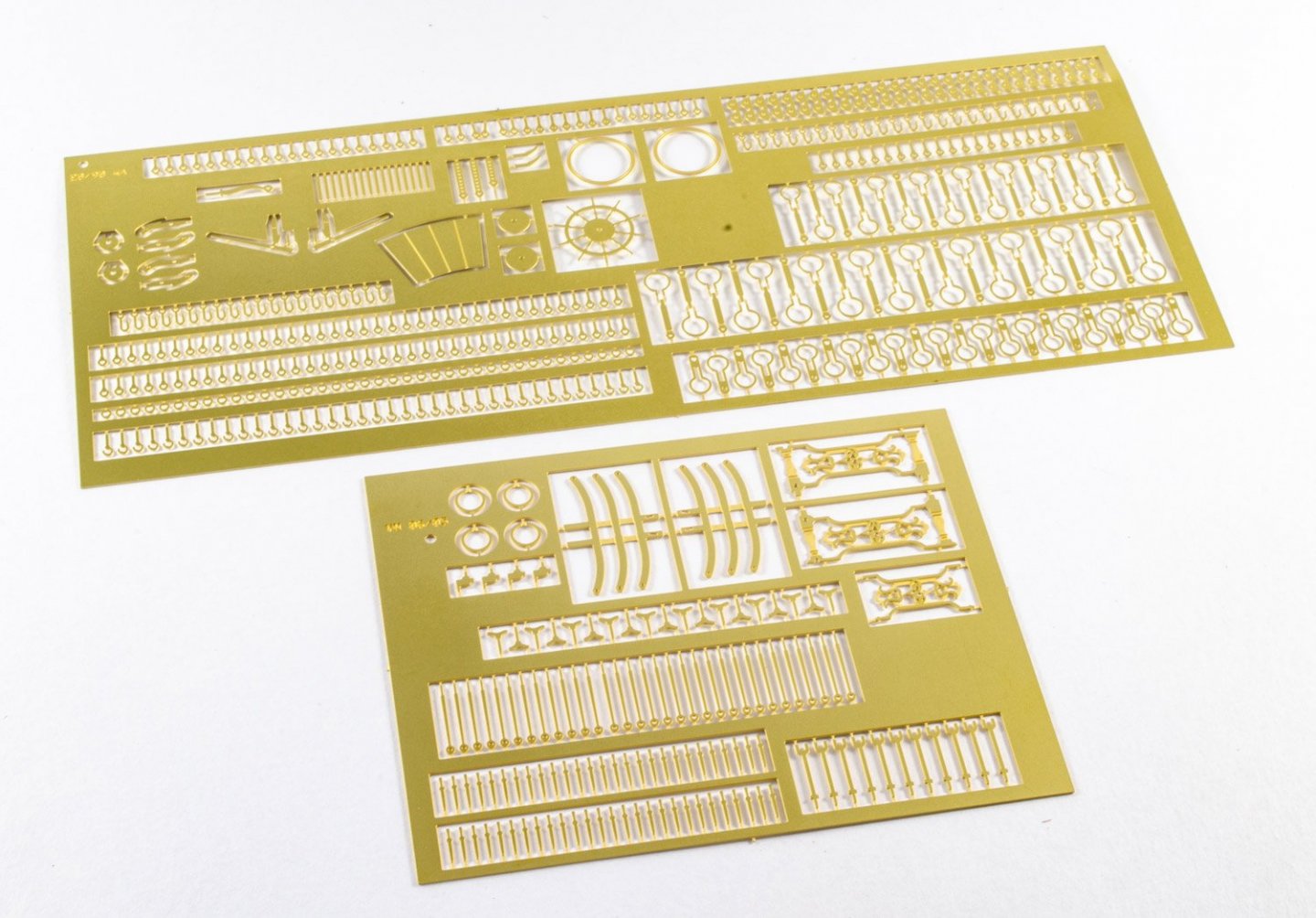
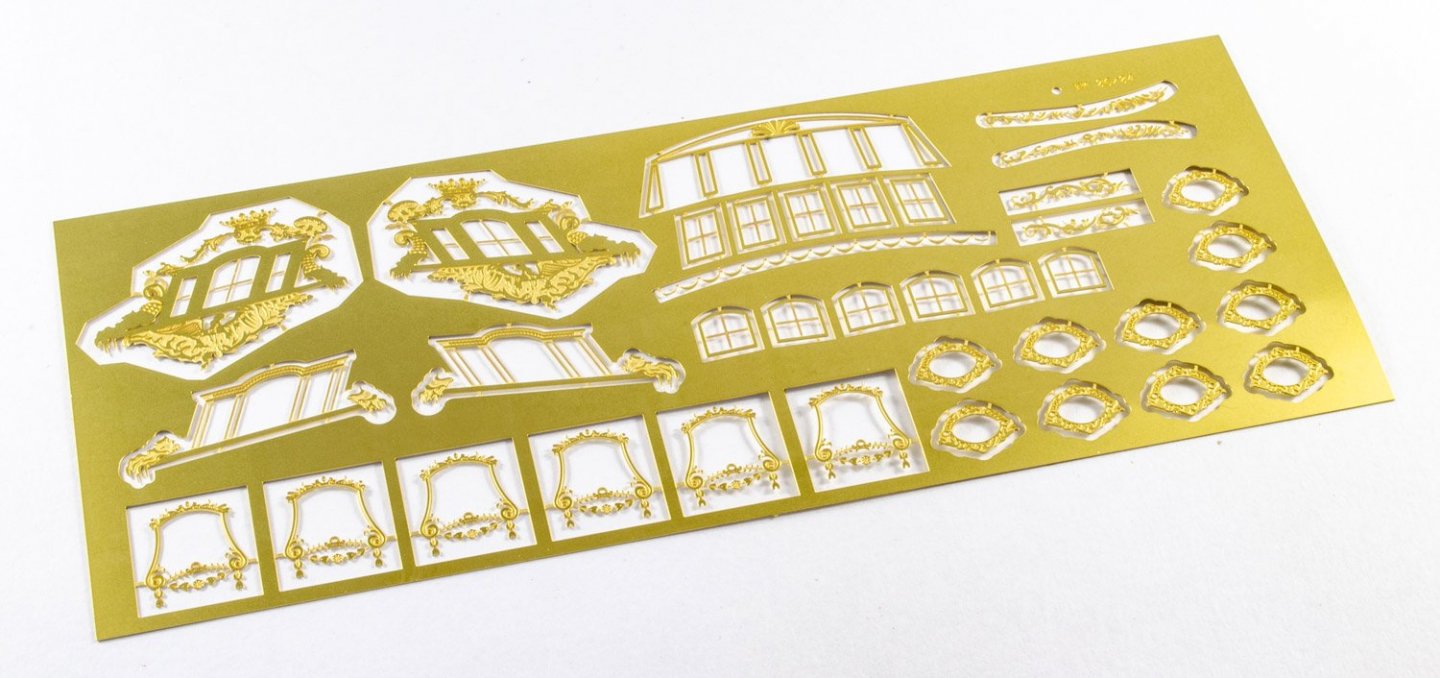
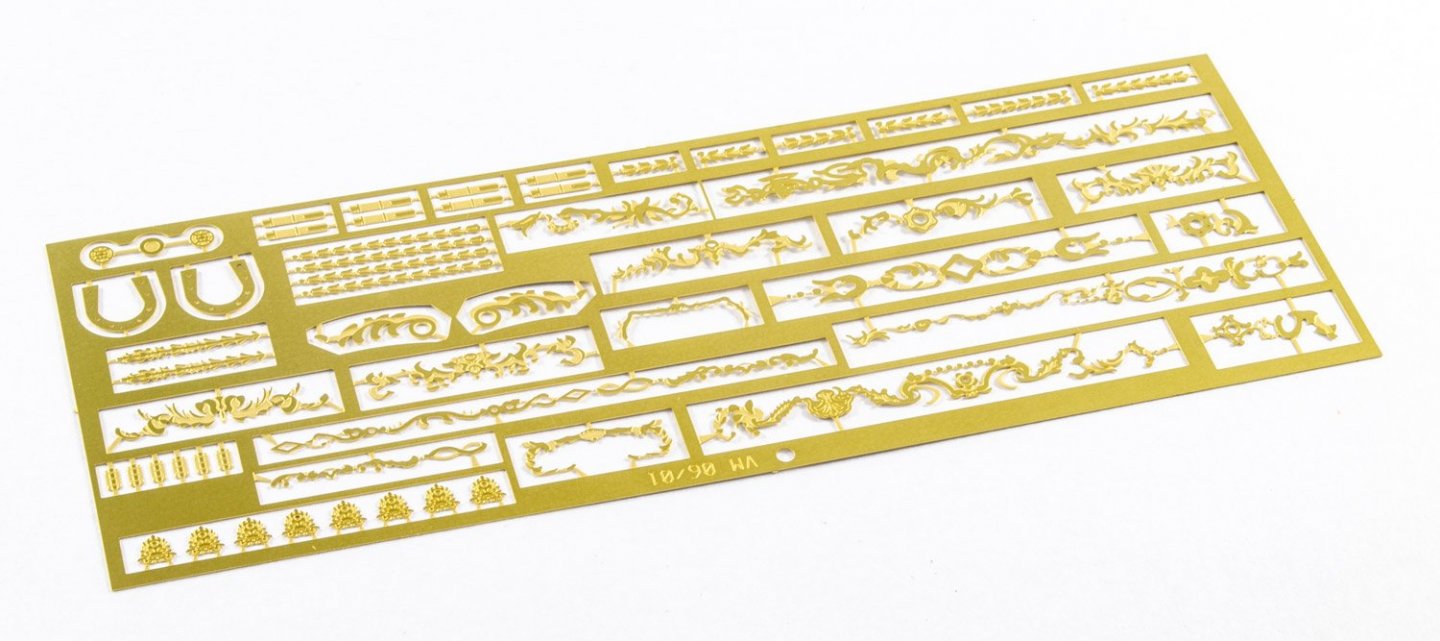
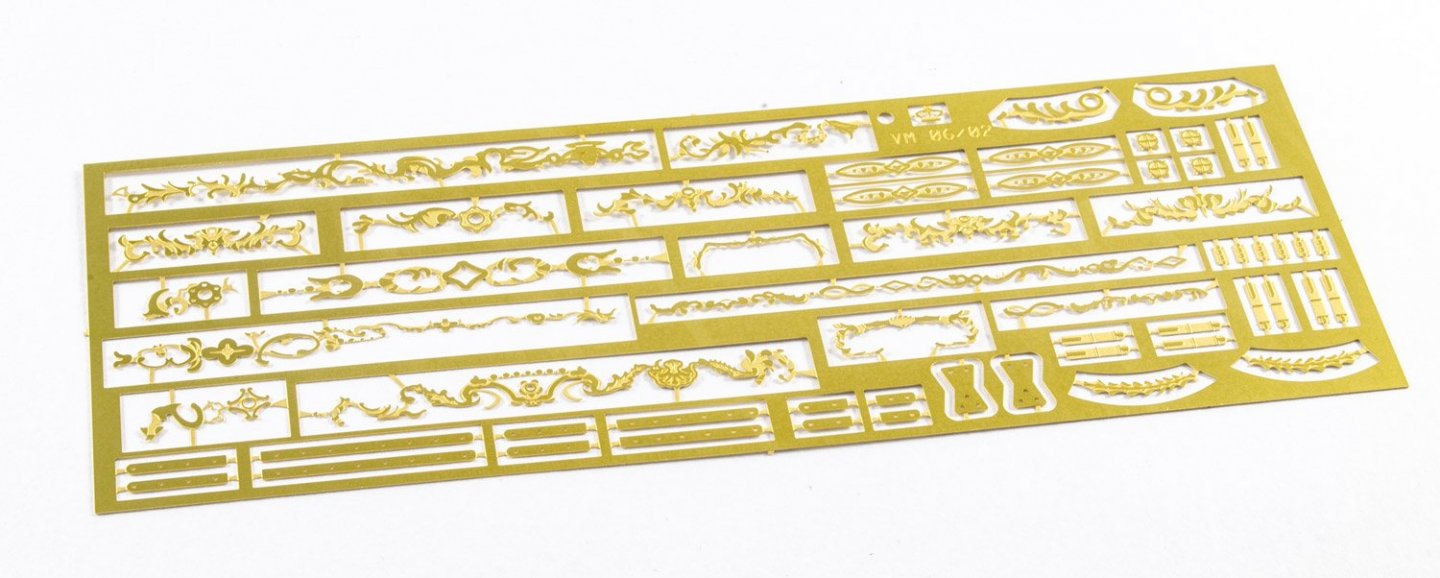
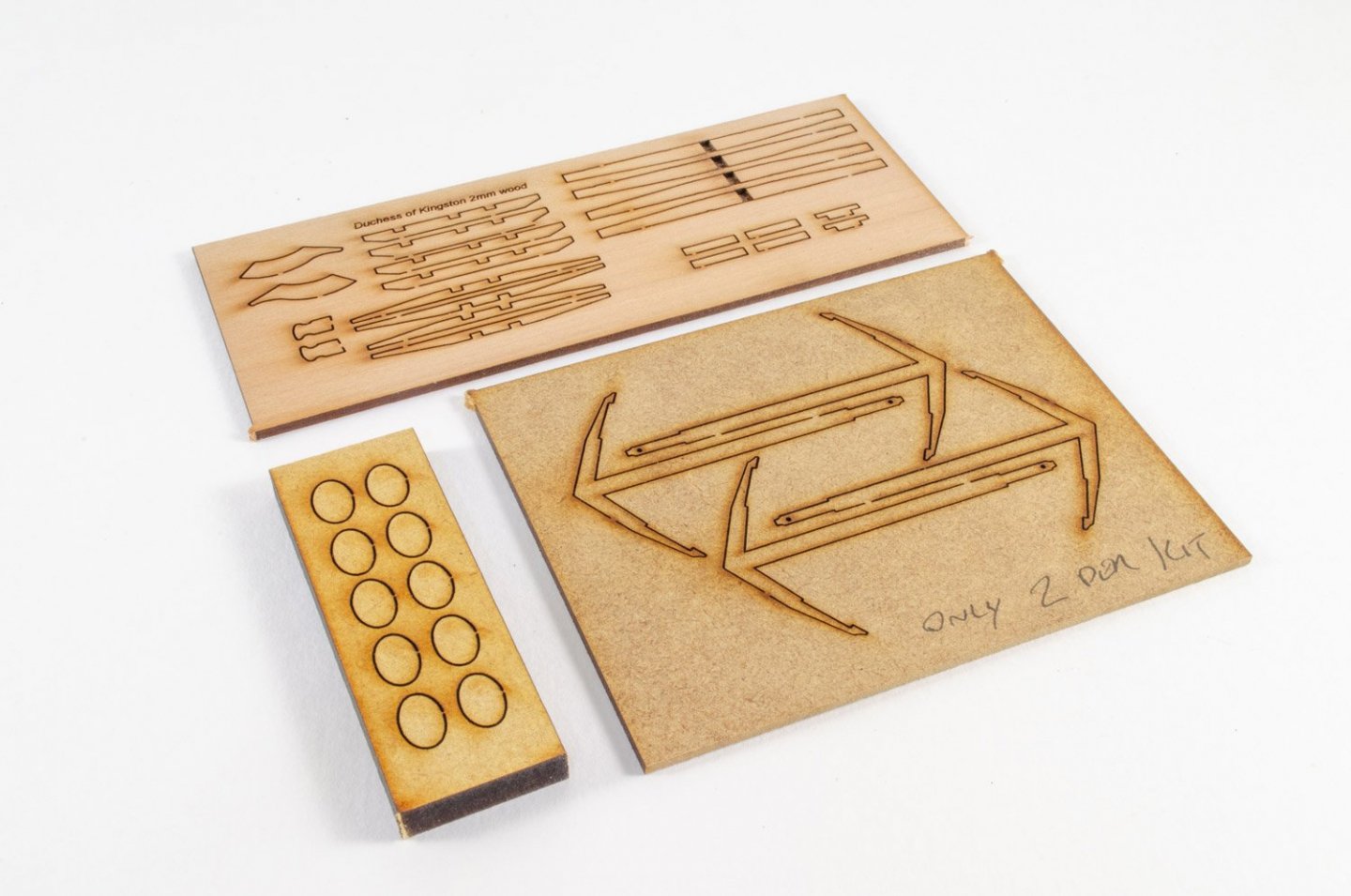
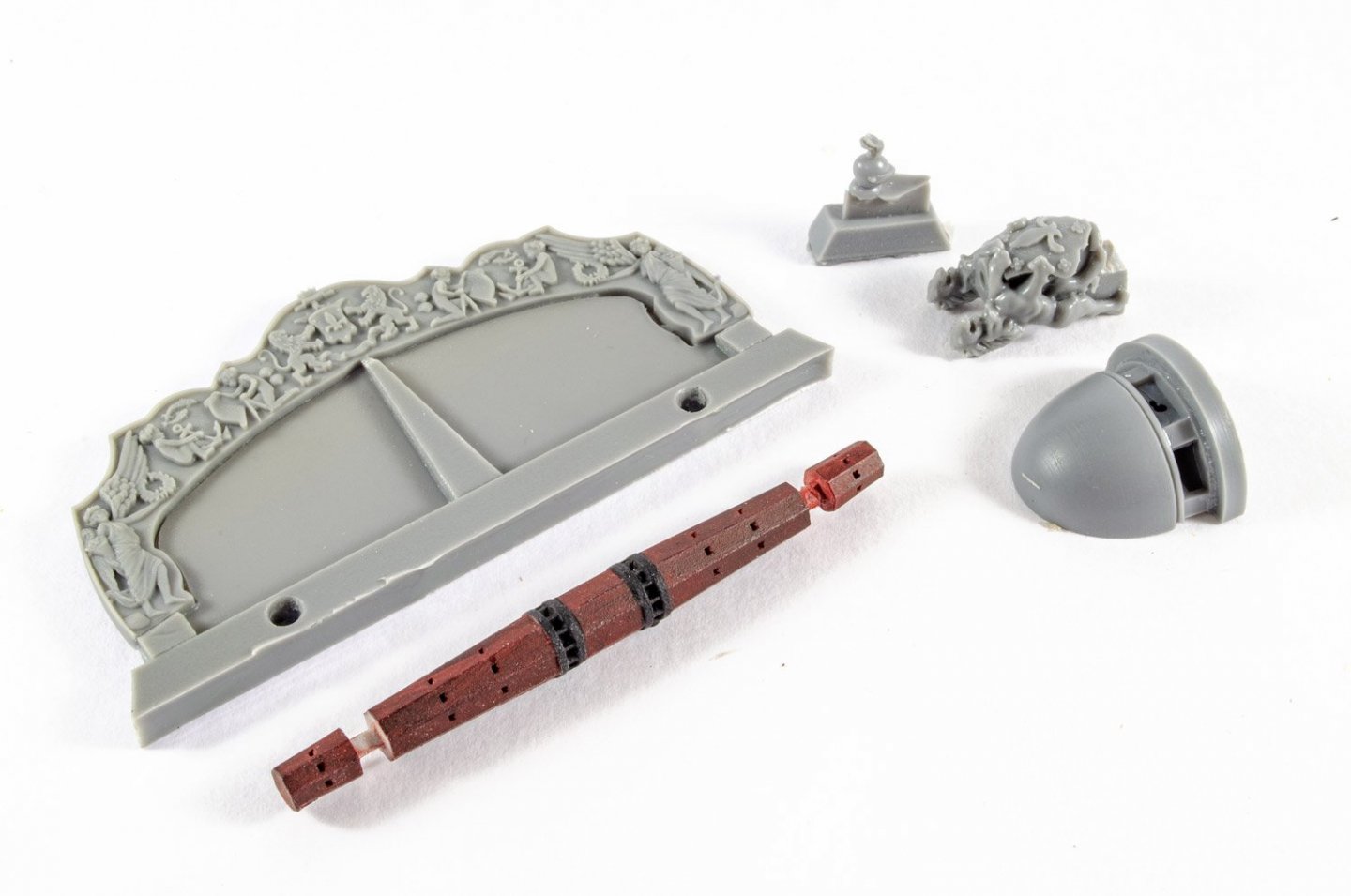

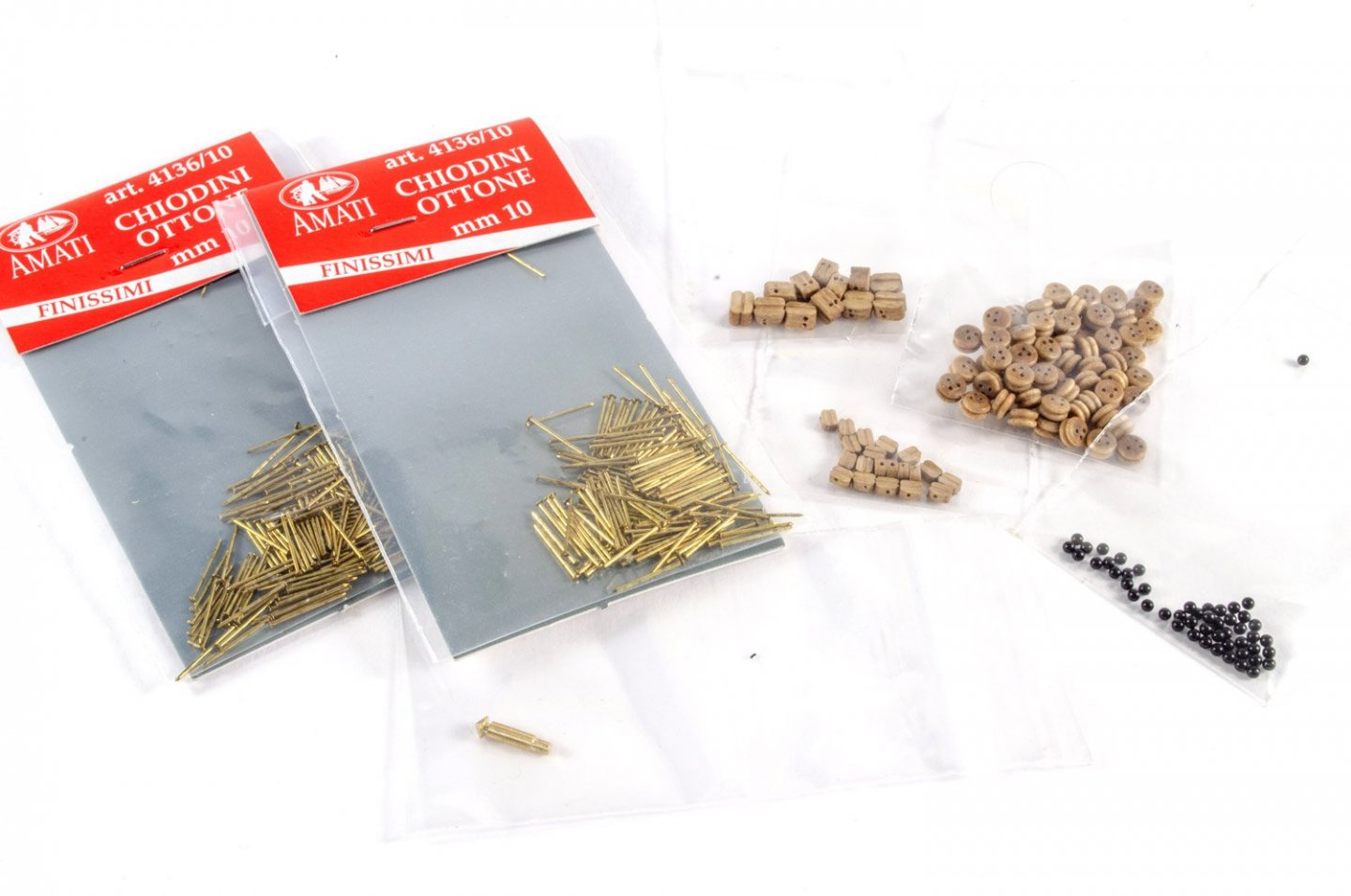
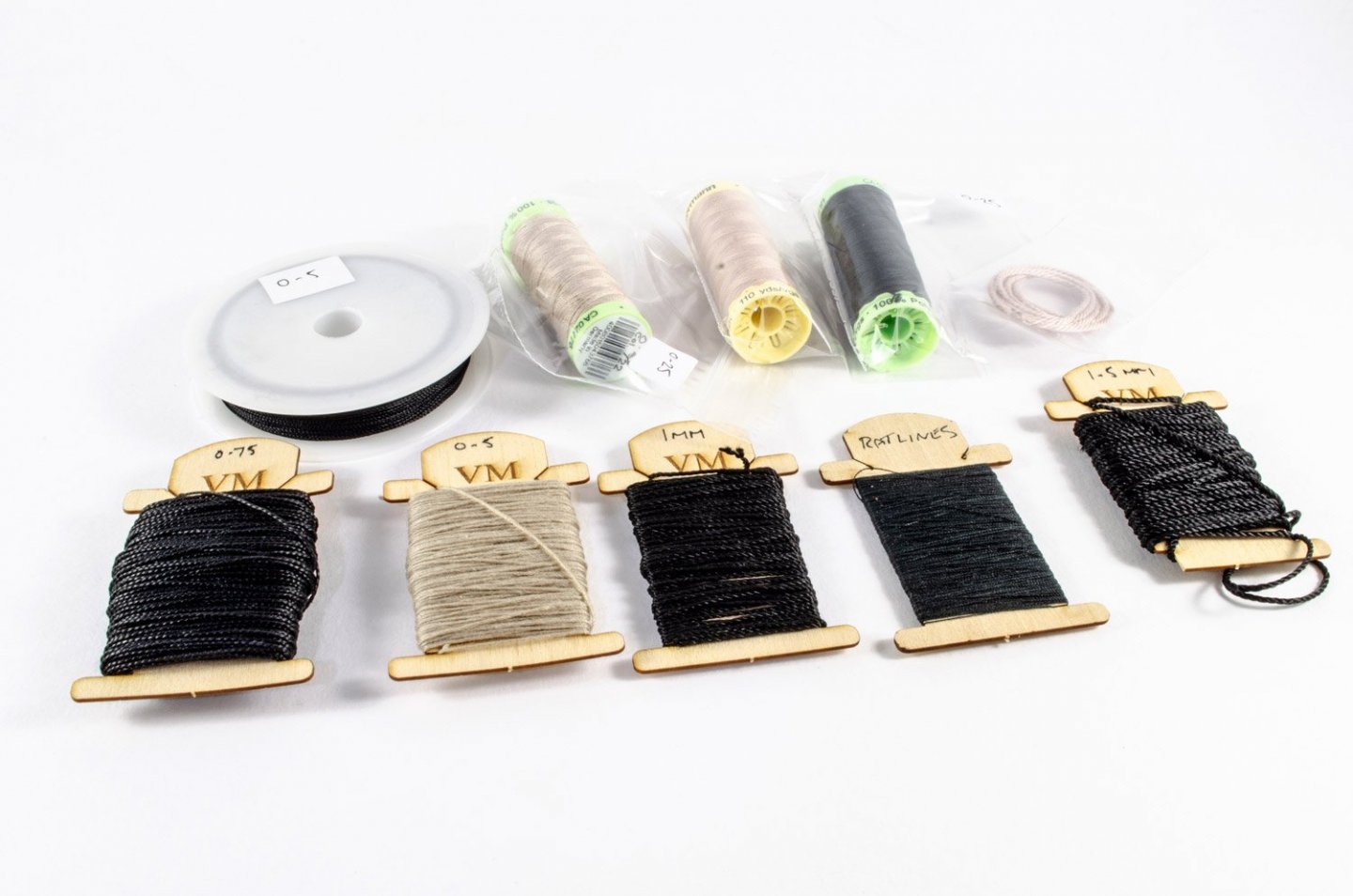
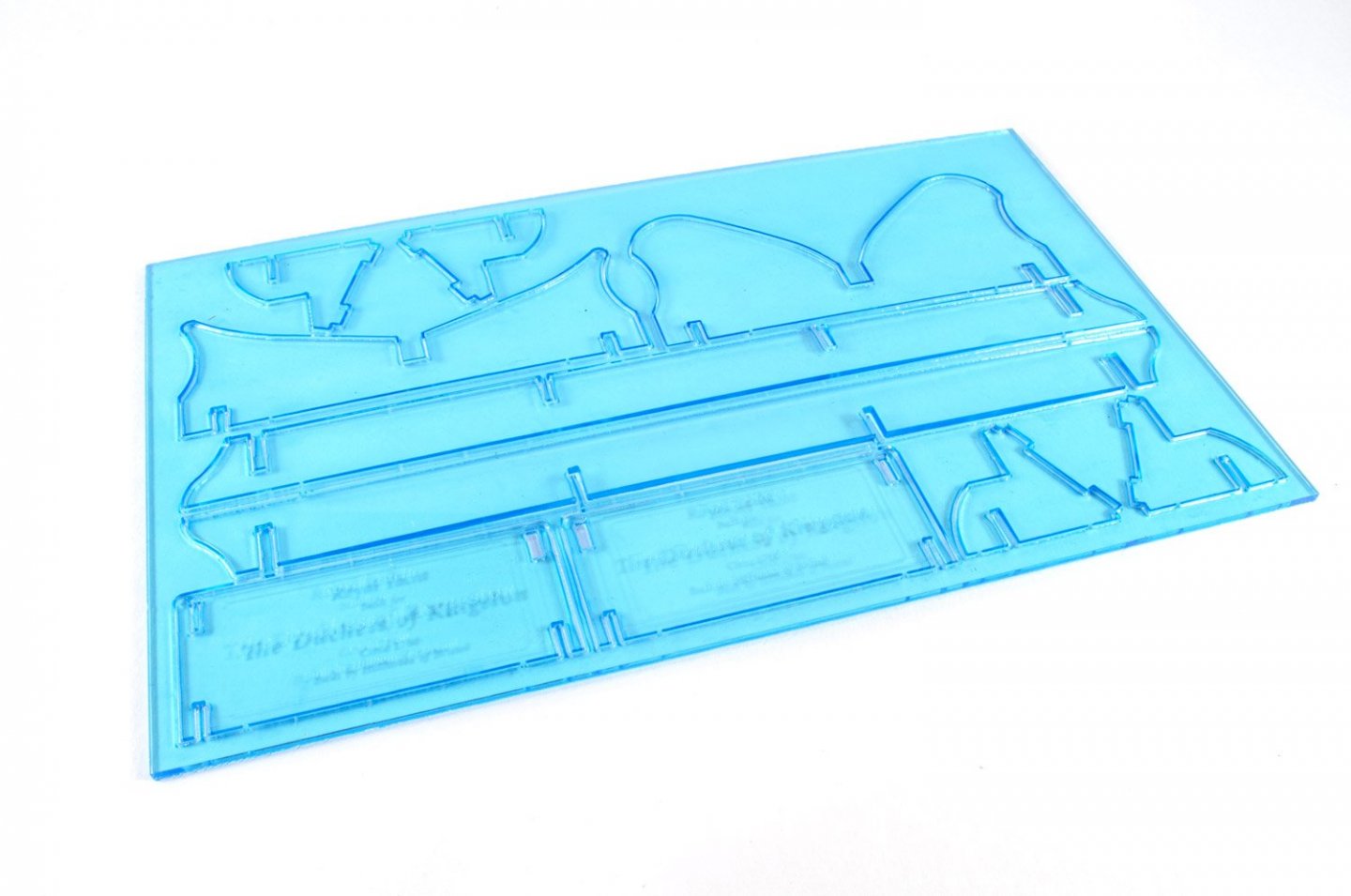

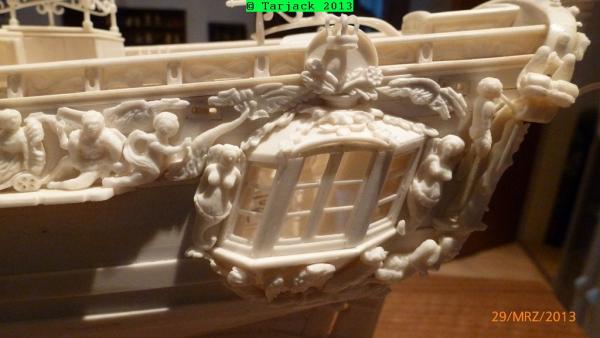
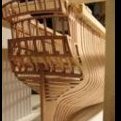
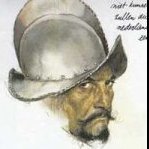
.thumb.jpg.afaf8d69143a42d5ca02f37264f30c19.jpg)
